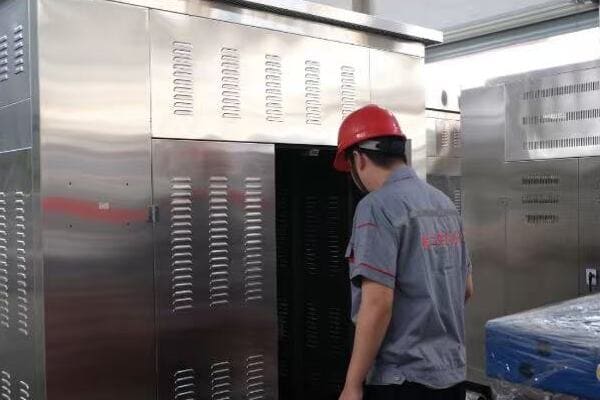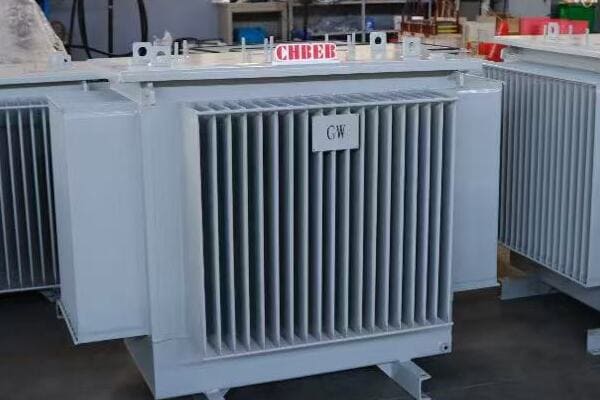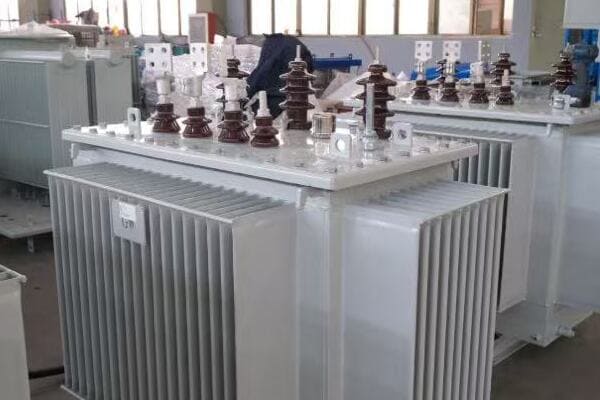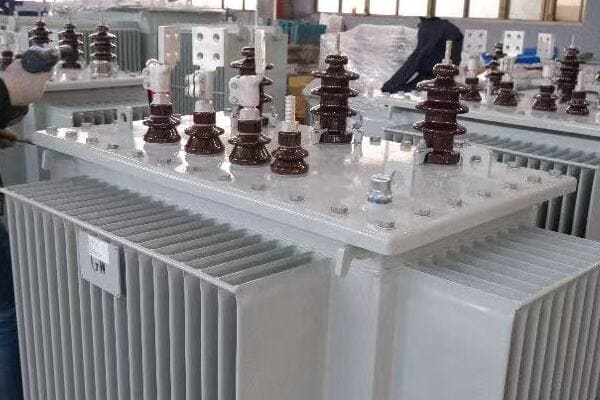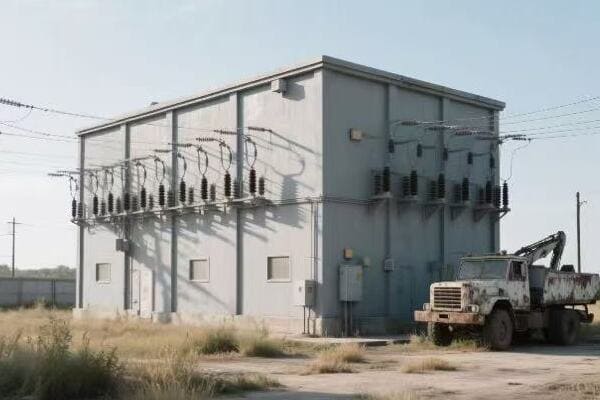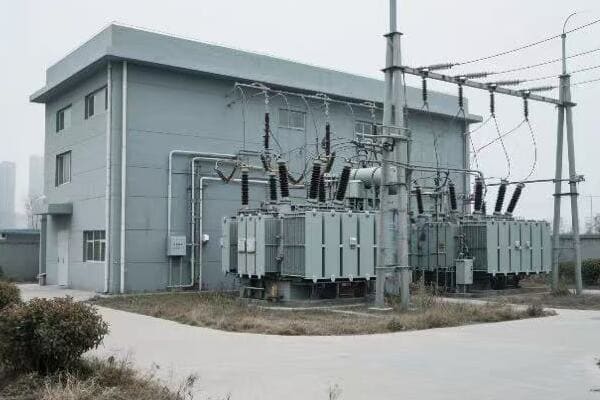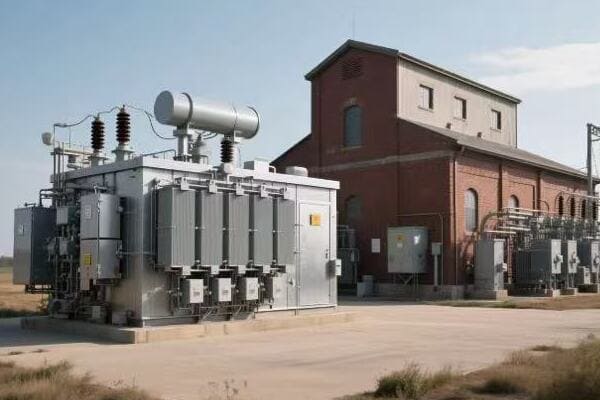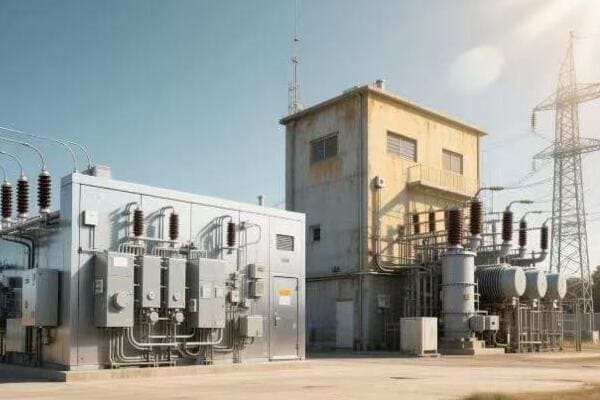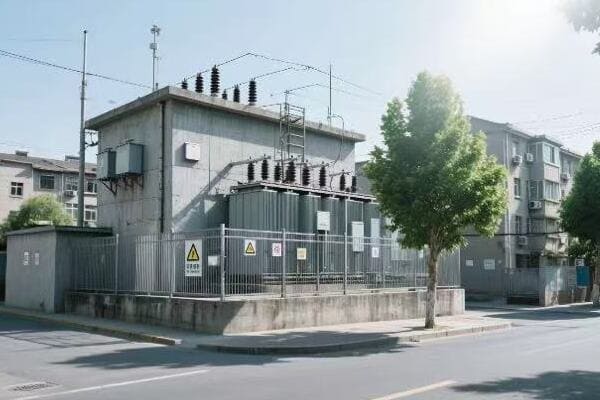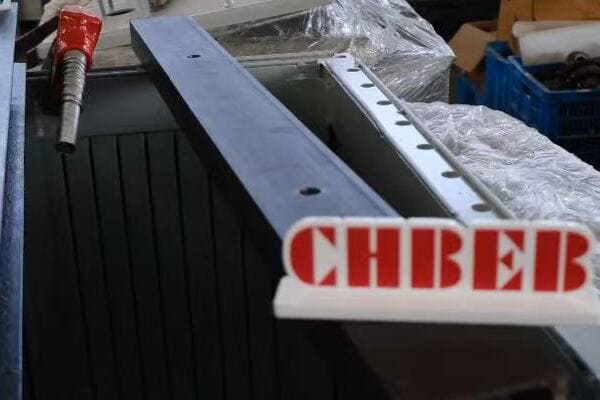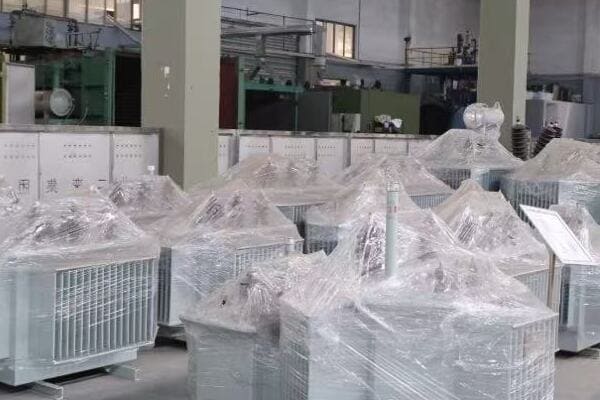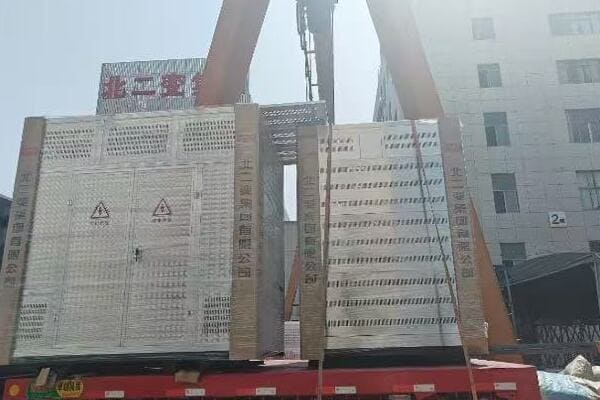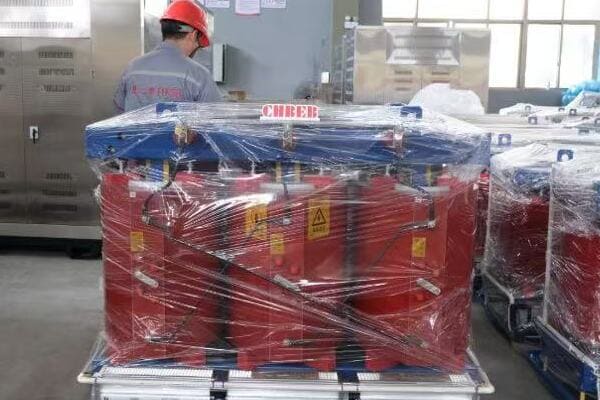Are you struggling to decide between a box type and a pad mounted transformer for your power distribution project? You’re not alone. Many engineers and project managers find this choice challenging. But what if you could easily understand the key differences and make an informed decision?
A box type transformer is an integrated power distribution unit combining a transformer, switchgear, and protective devices in one enclosure. A pad mounted transformer is a standalone oil-immersed transformer on a concrete base with enclosed terminals. Box types are ideal for urban grids and industrial zones, offering all-in-one solutions. Pad mounted transformers suit residential areas and underground networks, providing a compact, tamper-resistant design. The choice depends on installation requirements, space constraints, and specific project needs.
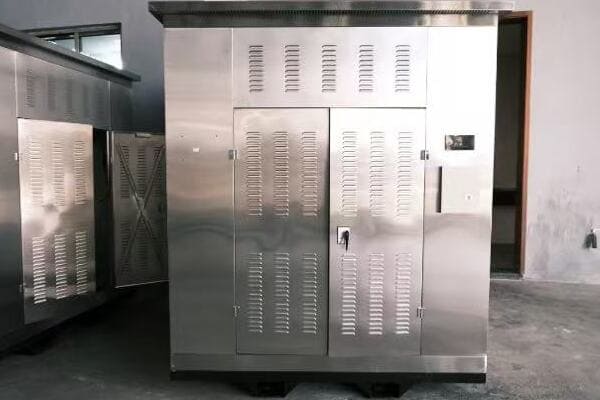
In this comprehensive guide, I’ll walk you through the essential differences between box type and pad mounted transformers. We’ll explore their structures, applications, advantages, and limitations. Whether you’re designing a new residential development, upgrading an industrial facility, or planning a commercial complex, this article will provide valuable insights to help you make the right choice for your specific needs.
What Is a Box Type Transformer?
Have you ever noticed those large metal cabinets in industrial areas or near commercial buildings and wondered what they are? These are often box type transformers, but what exactly are they, and why are they becoming increasingly popular in urban power distribution?
A box type transformer, also known as a compact substation or kiosk substation, is an integrated power distribution unit that combines a transformer, high-voltage switchgear, low-voltage switchboard, and protective devices within a single enclosure. It typically features a three-compartment layout: high-voltage, transformer, and low-voltage sections. Box type transformers are commonly used in urban power grids, industrial zones, and commercial complexes, offering a compact, all-in-one solution for medium-voltage power distribution, usually at 11kV or 22kV levels.
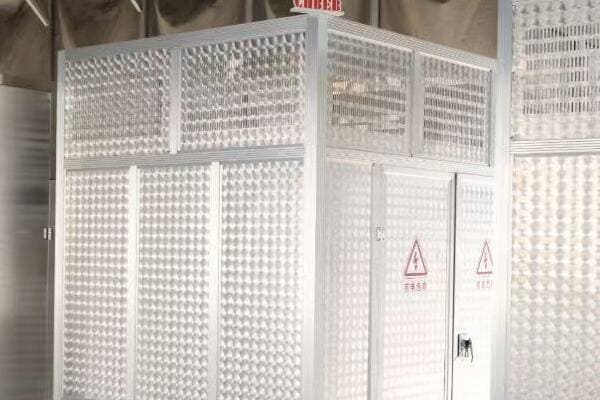
Key Features of Box Type Transformers
Let’s break down the main characteristics:
- Integrated Design
- Compartmentalized Structure
- Versatile Installation Options
- Safety and Accessibility
- Customization Possibilities
Integrated Design
All-in-one power distribution solution:
- Transformer, switchgear, and protection in one unit
- Factory-assembled and tested before delivery
- Reduced on-site work and installation time
I recently managed a project for a new shopping mall where we chose box type transformers. Their integrated design allowed us to significantly reduce the substation footprint and streamline the installation process, saving both space and time.
Compartmentalized Structure
Enhancing safety and functionality:
- High-voltage compartment: Houses incoming switchgear
- Transformer compartment: Contains the main transformer
- Low-voltage compartment: Includes outgoing distribution panels
During a recent factory tour, I observed the assembly of a box type transformer. The clear separation of compartments impressed me, showcasing how this design enhances safety and ease of maintenance.
Versatile Installation Options
Adapting to various environments:
- Above-ground installation in urban areas
- Suitable for outdoor placement with proper enclosure ratings
- Can be customized for indoor installations in some cases
Here’s a quick overview of installation options:
| Installation Type | Typical Application | Key Advantage |
|---|---|---|
| Outdoor Standalone | Industrial zones | Easy access, robust |
| Indoor Substation | Commercial buildings | Space-saving, noise reduction |
| Rooftop Installation | Urban areas | Utilizes unused space |
Safety and Accessibility
Ensuring protection and ease of maintenance:
- Interlocked compartments for operator safety
- External operation of switchgear possible
- Designed for easy access during maintenance
Customization Possibilities
Meeting specific project needs:
- Scalable capacity (typically from 100 kVA to 2500 kVA)
- Various cooling options (oil-immersed or dry-type)
- Integration of smart grid technologies possible
Key points about box type transformers:
- They offer an integrated solution for power distribution
- Feature a compartmentalized structure for safety and functionality
- Provide versatile installation options for different environments
- Ensure safety while maintaining accessibility for maintenance
- Allow for customization to meet specific project requirements
In my experience, box type transformers have been game-changers for urban power distribution projects. I recall a case where we needed to upgrade the power supply for a growing industrial park. The compact, all-in-one nature of box type transformers allowed us to increase capacity without significantly expanding the substation footprint, a crucial factor in the space-constrained environment.
For example, in a recent smart city project, we utilized box type transformers with integrated smart grid capabilities. Their ability to house advanced monitoring and control systems within the same enclosure as the transformer and switchgear was crucial in implementing a responsive, efficient power distribution network.
As we move on to discuss pad mounted transformers, keep these features of box type transformers in mind. Understanding the unique advantages of each type will help you make a more informed choice for your specific project requirements.
What Is a Pad Mounted Transformer?
Have you ever noticed those green metal boxes in residential areas and wondered about their purpose? These are often pad mounted transformers, but what exactly are they, and why are they a common sight in many neighborhoods?
A pad mounted transformer is a ground-mounted, oil-filled distribution transformer enclosed in a locked steel cabinet. It’s designed to step down medium voltage electricity (typically 11kV or 22kV) to low voltage (400V/230V) for residential and light commercial use. Unlike box type transformers, pad mounted units contain only the transformer itself, with separate termination points for high and low voltage connections. They are commonly used in underground distribution networks, residential subdivisions, and areas where aesthetics and safety are primary concerns.
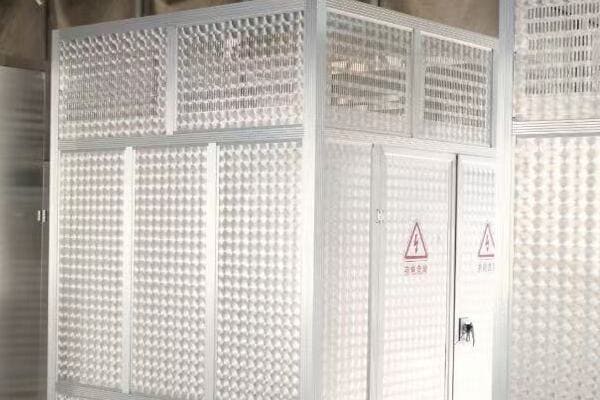
Key Characteristics of Pad Mounted Transformers
Let’s examine the main features:
- Compact and Self-Contained Design
- Ground-Level Installation
- Safety and Aesthetic Considerations
- Flexibility in Power Distribution
- Maintenance and Accessibility
Compact and Self-Contained Design
Focused transformer solution:
- Houses only the transformer and necessary connections
- Oil-immersed for efficient cooling and insulation
- Tamper-resistant enclosure for public safety
I recently worked on a project upgrading a suburban power distribution system. We chose pad mounted transformers for their compact design, which allowed us to place them strategically throughout the neighborhood without disrupting the landscape.
Ground-Level Installation
Simplifying access and maintenance:
- Mounted on concrete pads at ground level
- Eliminates need for pole-mounted equipment
- Suitable for areas with underground power lines
During a recent residential development project, the ease of installing pad mounted transformers significantly reduced our construction timeline compared to traditional pole-mounted solutions.
Safety and Aesthetic Considerations
Blending function with form:
- Locked, tamper-resistant enclosures
- Low profile design minimizes visual impact
- Can be painted or landscaped around to match surroundings
Here’s a quick comparison of safety features:
| Feature | Purpose | Benefit |
|---|---|---|
| Locked Enclosure | Prevent unauthorized access | Enhanced public safety |
| Dead-front Design | Minimize exposure to live parts | Safer for technicians |
| Low Profile | Reduce visual impact | Better neighborhood aesthetics |
Flexibility in Power Distribution
Adapting to various needs:
- Available in single-phase or three-phase configurations
- Typical capacities range from 25 kVA to 2500 kVA
- Can be customized for specific voltage requirements
Maintenance and Accessibility
Ensuring long-term reliability:
- Easy ground-level access for maintenance
- Designed for quick replacement if necessary
- Often equipped with oil level and temperature indicators
Key points about pad mounted transformers:
- They offer a compact, self-contained transformer solution
- Designed for ground-level installation, ideal for underground networks
- Prioritize safety and aesthetic integration in residential areas
- Provide flexibility in power distribution configurations
- Allow for easy maintenance and accessibility
In my experience, pad mounted transformers have revolutionized residential power distribution. I recall a project where we retrofitted an older neighborhood with pad mounted units, replacing aging pole-mounted transformers. Not only did this improve the area’s visual appeal, but it also increased power reliability and simplified maintenance procedures.
For example, in a recent smart community development project, we utilized pad mounted transformers with integrated smart metering capabilities. Their ground-level installation made it easy to incorporate advanced monitoring systems, enabling efficient power management across the residential area.
As we move on to compare box type and pad mounted transformers directly, keep these characteristics in mind. Understanding the strengths and applications of each type will help you make a more informed decision for your specific project needs.
Box Type vs Pad Mounted: Key Differences in Structure and Installation?
Are you finding it challenging to decide between box type and pad mounted transformers for your project? You’re not alone. Many engineers and project managers struggle with this choice. But what are the fundamental differences in structure and installation that set these two transformer types apart?
Box type transformers are integrated units containing the transformer, switchgear, and low-voltage distribution in one enclosure. They typically have a three-compartment structure: high-voltage, transformer, and low-voltage sections. Pad mounted transformers, conversely, house only the transformer with external connections for high and low voltage. Box types are usually larger, offering a complete substation solution, while pad mounted units are more compact, focusing solely on voltage transformation. Installation methods differ significantly, with box types often requiring more substantial site preparation compared to the simpler concrete pad needed for pad mounted units.
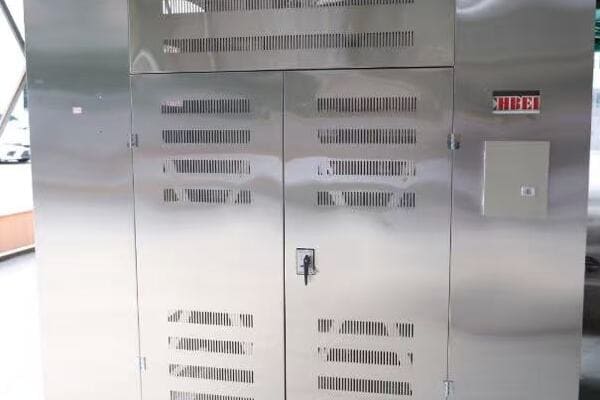
Key Structural and Installation Differences
Let’s examine the main distinctions:
- Component Integration
- Size and Footprint
- Installation Requirements
- Accessibility and Maintenance
- Customization and Scalability
Component Integration
Differing approaches to power distribution:
- Box Type: All-in-one solution with integrated switchgear and distribution
- Pad Mounted: Transformer-only, requiring separate switchgear and distribution panels
I recently managed two similar capacity projects – one using a box type and another using a pad mounted transformer. The box type installation was completed in half the time due to its integrated design, while the pad mounted setup required additional time for connecting external switchgear.
Size and Footprint
Space considerations:
- Box Type: Larger overall footprint, but consolidates multiple components
- Pad Mounted: Smaller individual footprint, but may require additional space for separate components
During a recent urban substation upgrade, the compact nature of pad mounted transformers allowed us to fit more units in a limited space, crucial for meeting the growing power demands of the area.
Installation Requirements
Site preparation and mounting:
- Box Type: Often requires a larger concrete foundation and more complex site preparation
- Pad Mounted: Simpler installation on a basic concrete pad
Here’s a comparison of typical installation requirements:
| Aspect | Box Type Transformer | Pad Mounted Transformer |
|---|---|---|
| Foundation | Large, engineered concrete base | Simple concrete pad |
| Crane Requirement | Usually needed for placement | May be placed with a forklift |
| Cable Entry | Multiple options, often bottom entry | Typically underground entry |
| Site Preparation | More extensive, may need fencing | Minimal, often just landscaping |
Accessibility and Maintenance
Ease of servicing and repairs:
- Box Type: Compartmentalized access, potentially easier for routine checks
- Pad Mounted: Simple access to transformer, but may require opening in public areas
Customization and Scalability
Adapting to project needs:
- Box Type: Highly customizable with various internal configurations
- Pad Mounted: Standardized designs with limited customization options
Key points about structural and installation differences:
- Box type transformers offer integrated solutions, while pad mounted focus on transformation only
- Size and footprint vary significantly between the two types
- Installation requirements differ in complexity and site preparation needs
- Accessibility and maintenance approaches vary based on design
- Customization options are generally more extensive for box type units
In my experience, these structural and installation differences can significantly impact project timelines and costs. I recall a project where we initially planned to use box type transformers for a new commercial development. However, after assessing the site constraints and installation timeline, we switched to pad mounted units. This decision allowed for a more flexible layout and faster installation, crucial for meeting the project’s tight deadline.
For example, in a recent industrial park expansion, we used a combination of box type and pad mounted transformers. Box types were installed at main distribution points, leveraging their integrated design for efficient power management. Pad mounted units were used for individual lots, providing flexibility for future changes in tenant power needs.
As we move on to discuss when to choose between box type and pad mounted transformers, keep these structural and installation differences in mind. Understanding these practical aspects will help you make a more informed decision based on your specific project requirements and constraints.
When to Choose Box Type vs Pad Mounted Transformer?
Are you grappling with the decision between a box type and a pad mounted transformer for your project? You’re not alone. This choice can significantly impact your project’s timeline, budget, and long-term functionality. But how can you determine which option is best suited for your specific needs?
Choose a box type transformer when you need an all-in-one power distribution solution, especially in industrial or commercial settings with limited space for separate components. Opt for a pad mounted transformer in residential areas, underground distribution networks, or where aesthetics and public safety are primary concerns. Box types are ideal for projects requiring integrated switchgear and higher capacities, while pad mounted units excel in scenarios needing compact, standalone transformation. Consider factors like installation space, maintenance accessibility, future expandability, and local regulations when making your decision.
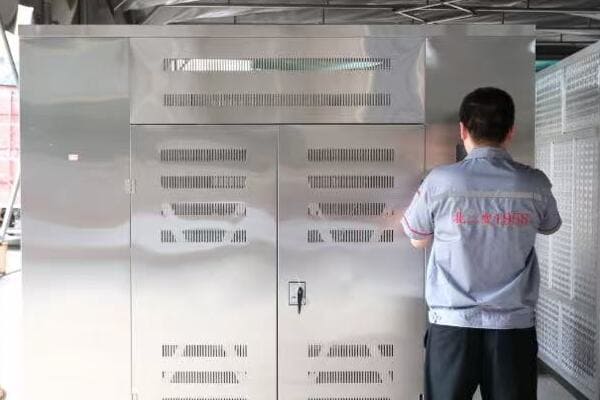
Key Factors in Transformer Selection
Let’s examine the main considerations:
- Application and Environment
- Space and Installation Constraints
- Power Capacity and Scalability
- Safety and Aesthetic Requirements
- Maintenance and Accessibility Needs
Application and Environment
Matching transformer type to project needs:
- Box Type: Ideal for industrial zones, commercial complexes, urban substations
- Pad Mounted: Suitable for residential areas, underground networks, public spaces
I recently worked on a project for a new shopping mall where we chose box type transformers. Their integrated design was perfect for the mall’s centralized power distribution needs, allowing us to efficiently manage the complex’s varied power requirements from a single point.
Space and Installation Constraints
Considering available area and site conditions:
- Box Type: Requires larger installation area but consolidates multiple components
- Pad Mounted: Needs less individual space but may require additional area for separate switchgear
During a recent residential development project, we opted for pad mounted transformers due to space limitations and the need to distribute them throughout the neighborhood discreetly.
Power Capacity and Scalability
Planning for current and future needs:
- Box Type: Generally available in higher capacities, easier to upgrade internal components
- Pad Mounted: Typically lower capacity range, may require full unit replacement for significant upgrades
Here’s a quick comparison of typical capacities:
| Transformer Type | Common Capacity Range | Scalability |
|---|---|---|
| Box Type | 100 kVA – 2500 kVA | High (modular internals) |
| Pad Mounted | 25 kVA – 2500 kVA | Limited (fixed design) |
Safety and Aesthetic Requirements
Meeting regulatory and community standards:
- Box Type: Fully enclosed, suitable for restricted access areas
- Pad Mounted: Tamper-resistant design, blends with residential landscapes
Maintenance and Accessibility Needs
Ensuring long-term serviceability:
- Box Type: Compartmentalized access, potentially easier for routine maintenance
- Pad Mounted: Simple access, but may require special considerations in public areas
Key points for choosing between box type and pad mounted transformers:
- Consider the specific application and environmental context
- Evaluate available space and installation constraints carefully
- Assess both current power needs and future scalability requirements
- Factor in safety regulations and aesthetic considerations
- Think about long-term maintenance and accessibility needs
In my experience, the choice between box type and pad mounted transformers often involves balancing multiple factors. I recall a case where a client initially leaned towards box type transformers for a new office park development. However, after considering the project’s phased construction plan and the need for distributed power sources, we opted for strategically placed pad mounted units. This decision provided greater flexibility for the project’s evolving needs and simplified the installation process for each phase.
For example, in a recent smart city project, we used a combination of both transformer types. Box type units were installed at main distribution hubs, leveraging their integrated design for efficient power management and smart grid integration. Pad mounted transformers were used throughout residential areas, providing a safer, more aesthetically pleasing solution for neighborhood power distribution.
As we move on to discuss the cost-effectiveness of each transformer type, keep these selection criteria in mind. Understanding when to choose each type will help you better evaluate the overall value proposition of box type versus pad mounted transformers for your specific project requirements.
Which Transformer Is More Cost-Effective for Your Project?
Are you struggling to determine whether a box type or pad mounted transformer will be more economical for your project? You’re not alone. Many project managers find it challenging to weigh the upfront costs against long-term benefits. But how can you accurately assess which option offers the best value for your specific situation?
The cost-effectiveness of box type versus pad mounted transformers depends on various factors including initial purchase price, installation costs, long-term maintenance, and project-specific requirements. Box type transformers generally have a higher upfront cost but offer integrated solutions that can reduce overall installation expenses. Pad mounted transformers are typically less expensive initially but may require additional costs for separate switchgear and protective equipment. Long-term considerations like maintenance accessibility, energy efficiency, and future expandability also play crucial roles in determining the most cost-effective choice for your project.
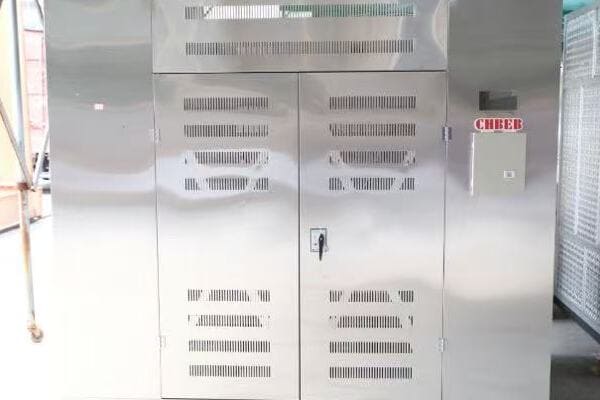
Key Cost Factors to Consider
Let’s examine the main elements affecting cost-effectiveness:
- Initial Purchase and Installation Costs
- Operational Efficiency and Energy Savings
- Maintenance and Repair Expenses
- Lifespan and Replacement Considerations
- Regulatory Compliance and Safety Measures
Initial Purchase and Installation Costs
Upfront investment comparison:
- Box Type: Higher unit cost but includes integrated components
- Pad Mounted: Lower individual cost but may require additional equipment purchases
I recently managed two similar capacity projects – one using a box type and another using pad mounted transformers. While the box type units were more expensive initially, the total installation cost ended up being comparable due to reduced labor and additional equipment needs.
Operational Efficiency and Energy Savings
Long-term performance factors:
- Box Type: Potentially higher efficiency due to optimized integrated design
- Pad Mounted: Efficiency can vary based on the quality of connections and external components
During a recent industrial facility upgrade, we found that the box type transformers offered slightly better overall efficiency, leading to noticeable energy savings over time.
Maintenance and Repair Expenses
Ongoing cost considerations:
- Box Type: Centralized maintenance, potentially lower long-term costs
- Pad Mounted: Simpler individual maintenance, but may require more frequent attention
Here’s a simplified comparison of maintenance aspects:
| Aspect | Box Type Transformer | Pad Mounted Transformer |
|---|---|---|
| Routine Checks | Consolidated, less frequent | More units to check, but simpler |
| Repair Complexity | Can be complex due to integration | Generally straightforward |
| Accessibility | May require specialized access | Easy ground-level access |
| Replacement Parts | Potentially more expensive | Standard parts often available |
Lifespan and Replacement Considerations
Long-term value assessment:
- Box Type: Longer potential lifespan due to protected components
- Pad Mounted: May require earlier replacement of individual units
Regulatory Compliance and Safety Measures
Meeting standards and regulations:
- Box Type: Often easier to comply with industrial safety standards
- Pad Mounted: May require additional safety measures in public areas
Key points for assessing cost-effectiveness:
- Consider both initial costs and long-term operational expenses
- Evaluate potential energy savings from improved efficiency
- Factor in ongoing maintenance and repair requirements
- Assess expected lifespan and future replacement needs
- Account for costs related to regulatory compliance and safety measures
In my experience, determining the most cost-effective option often requires a comprehensive, long-term view. I recall a project for a growing commercial district where we initially considered pad mounted transformers due to their lower upfront cost. However, after conducting a 20-year total cost of ownership analysis, including projected maintenance and energy costs, we found that box type transformers offered better long-term value. This decision proved beneficial as the district expanded, with the integrated design of the box type units accommodating increased power demands more efficiently.
For example, in a recent residential development project, we chose pad mounted transformers despite their potentially higher long-term maintenance costs. This decision was driven by the need for distributed power sources and the aesthetic requirements of the neighborhood. The lower initial cost and flexibility in placement allowed us to optimize the power distribution network within the project’s budget constraints.
As we move on to discuss top Chinese manufacturers offering both box and pad mounted transformers, keep these cost considerations in mind. Understanding the long-term financial implications will help you make a more informed decision when selecting a supplier and transformer type for your project.
Top Chinese Manufacturers Offering Box and Pad Mounted Transformers?
Are you finding it challenging to identify reliable manufacturers of box and pad mounted transformers in China? You’re not alone. With China’s vast industrial landscape, pinpointing trustworthy suppliers can be overwhelming. But which companies stand out for their quality, innovation, and export capabilities in both transformer types?
Leading Chinese manufacturers of box and pad mounted transformers include CHBEB, CHINT, TBEA, Sieyuan Electric, and Taikai Electric. These companies offer a range of products suitable for various applications, from urban power distribution to renewable energy projects. They are known for their adherence to international standards like IEC and IEEE, quality certifications such as ISO 9001 and CE marking, and their ability to provide customized solutions. These manufacturers have strong export presences in markets across Asia, Africa, the Middle East, and beyond, demonstrating their capability to meet diverse global requirements.

Leading Transformer Manufacturers in China
Let’s examine the top recommended suppliers:
- CHBEB (China Bei Er Bian)
- CHINT
- TBEA
- Sieyuan Electric
- Taikai Electric
CHBEB (China Bei Er Bian)
Specializing in customized solutions:
- Box Type: 630-2500kVA, CE certified
- Pad Mounted: 11kV/0.4kV, up to 1000kVA
- Key strengths: Export-oriented, strong in Middle East and African markets
- Certifications: ISO 9001, IEC, CE
I recently visited CHBEB’s manufacturing facility and was impressed by their advanced testing lab for both box and pad mounted transformers, ensuring high-quality products for international markets.
CHINT
Comprehensive power solution provider:
- Box Type: Rapid delivery models available
- Pad Mounted: Wide range of standard configurations
- Key strengths: Cost-effective solutions, strong presence in Southeast Asia and Africa
- Certifications: CE, ISO, IEC
During a recent project in Southeast Asia, we sourced pad mounted transformers from CHINT. Their ability to provide a large quantity of standardized units quickly was crucial for meeting our tight project timeline.
TBEA
High-end transformer solutions:
- Box Type: Customizable for large projects
- Pad Mounted: High voltage range available
- Key strengths: Experience in ultra-high voltage projects, strong domestic market
- Certifications: KEMA, CNAS
Here’s a quick overview of TBEA’s offerings:
| Product Type | Voltage Range | Key Feature |
|---|---|---|
| Box Type | Up to 35kV | Highly customizable |
| Pad Mounted | Up to 35kV | Robust design for harsh environments |
Sieyuan Electric
Smart grid integration specialist:
- Box Type: GIS + CSS (Compact Substation) combinations
- Pad Mounted: Smart protection features
- Key strengths: Advanced monitoring and control systems integration
- Certifications: ISO, CE
Taikai Electric
Renewable energy focus:
- Box Type: Tailored for new energy projects
- Pad Mounted: Optimized for solar and wind farm applications
- Key strengths: Experience in renewable energy integration
- Certifications: ISO, IEC
Key points about top Chinese transformer manufacturers:
- They offer a wide range of both box and pad mounted transformers
- Many have strong capabilities in customization and R&D
- Adherence to international standards and certifications is a common feature
- Several specialize in specific applications like renewable energy or smart grids
- Most have significant experience in both domestic and export markets
In my experience, these top manufacturers have consistently demonstrated their ability to meet diverse project requirements. I recall a large-scale urban redevelopment project where we sourced both box and pad mounted transformers from multiple Chinese manufacturers on this list. By leveraging the specific strengths of each company – such as CHBEB’s customization capabilities for unique installation requirements and CHINT’s cost-effective standard units for widespread distribution – we were able to optimize the overall power distribution system while managing costs effectively.
For example, in a recent renewable energy project involving both solar and wind power integration, we utilized box type transformers from Taikai Electric for the main power collection points and pad mounted units from Sieyuan Electric for individual turbine connections. This combination allowed us to balance the need for integrated solutions at key nodes with distributed transformation across the renewable energy site.
As we conclude our exploration of box and pad mounted transformers, remember that choosing the right manufacturer is as crucial as selecting the appropriate transformer type. Consider factors like the manufacturer’s experience in your specific application area, their ability to provide technical support, and their track record in international projects when making your final decision.
Conclusion: Choose Based on Function, Layout, and Cost
Selecting between box type and pad mounted transformers depends on your project’s specific needs. Box types excel in integrated solutions for industrial and commercial settings, while pad mounted units are ideal for residential areas and underground networks. Consider factors like space constraints, power requirements, aesthetic needs, and long-term costs. Both types have their strengths, and the right choice will optimize your power distribution system’s efficiency, reliability, and cost-effectiveness.
Remember, at chbeb-ele, we’re not just sharing information – we’re empowering you to be part of the solution in creating a secure, clean, and efficient energy future. Let’s continue this journey together.
Are you struggling to understand the complexities of power distribution systems? You’re not alone. Many engineers and project managers find oil immersed transformers particularly challenging. But what if you could easily grasp their function and importance in our electrical infrastructure?
An oil-immersed power transformer is a type of electrical transformer that uses insulating oil to cool and insulate its internal components, such as the core and windings. These transformers are widely used in medium to high-voltage power systems—typically from 10kV up to 220kV—due to their excellent thermal performance, high load capacity, and long operational lifespan. They play a crucial role in power transmission and distribution networks, industrial facilities, and renewable energy installations.
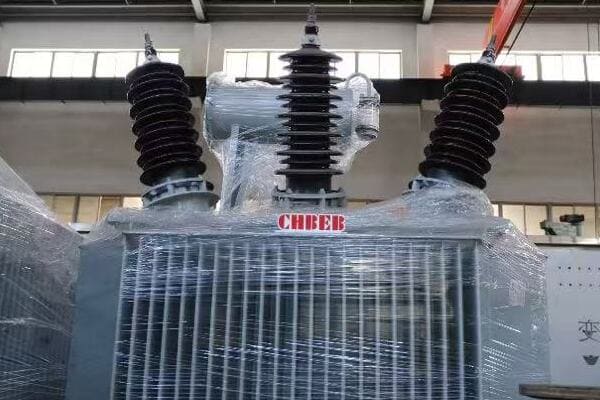
In this comprehensive guide, I’ll walk you through the essentials of oil immersed power transformers. We’ll explore their structure, working principles, and applications in modern power systems. Whether you’re designing a new substation, procuring equipment for an industrial plant, or simply expanding your engineering knowledge, this article will provide valuable insights to help you understand these critical components of our electrical infrastructure.
What Is an Oil Immersed Power Transformer?
Have you ever wondered how electricity is safely and efficiently transformed from high voltages to usable levels? The answer often lies in oil immersed power transformers. But what exactly are these devices, and why are they so prevalent in our power distribution systems?
An oil immersed power transformer is a type of electrical transformer that uses mineral oil as both an insulating medium and a coolant. It consists of a core and windings immersed in a tank filled with specially formulated transformer oil. These transformers are designed for medium to high-voltage applications, typically ranging from 10kV to 220kV. They are widely used in power substations, industrial facilities, and large-scale power distribution networks due to their high efficiency, excellent cooling capabilities, and ability to handle high power loads.

Key Characteristics of Oil Immersed Transformers
Let’s break down the main features:
- Oil-Filled Design
- Voltage and Power Ratings
- Cooling Efficiency
- Insulation Properties
- Typical Applications
Oil-Filled Design
The defining feature:
- Transformer core and windings submerged in insulating oil
- Oil serves dual purpose of cooling and electrical insulation
- Sealed tank design to prevent oil contamination
I recently inspected a newly installed 110kV oil immersed transformer at a substation. The massive oil-filled tank, standing over 5 meters tall, was a testament to the transformer’s capacity to handle high voltages and power loads.
Voltage and Power Ratings
Handling high power demands:
- Typical voltage ranges from 10kV to 220kV
- Power ratings can exceed 100MVA for large units
- Scalable designs for various power distribution needs
During a recent industrial project, we specified a 33kV/11kV oil immersed transformer rated at 20MVA. This unit efficiently handled the power distribution needs of an entire manufacturing complex.
Cooling Efficiency
Superior heat dissipation:
- Oil circulation provides excellent cooling
- Natural convection in smaller units (ONAN cooling)
- Forced oil and air cooling in larger transformers (ONAF, OFAF cooling)
Here’s a quick comparison of cooling methods:
| Cooling Method | Description | Typical Application |
|---|---|---|
| ONAN | Oil Natural, Air Natural | Small to medium transformers |
| ONAF | Oil Natural, Air Forced | Medium to large transformers |
| OFAF | Oil Forced, Air Forced | Large, high-capacity transformers |
Insulation Properties
Enhancing electrical performance:
- Oil provides superior dielectric strength
- Allows for compact designs even at high voltages
- Self-healing properties in case of minor internal faults
Typical Applications
Where you’ll find oil immersed transformers:
- Power generation plants
- Transmission and distribution substations
- Large industrial facilities
- Renewable energy installations (wind farms, solar plants)
Key points about oil immersed power transformers:
- They use oil for both cooling and insulation
- Designed for medium to high voltage applications
- Offer excellent cooling efficiency and load capacity
- Provide superior insulation properties
- Widely used in various power system applications
In my experience, the versatility of oil immersed transformers becomes particularly evident in large-scale power projects. I recall a case where we needed to upgrade a substation to accommodate increased power demand from a growing industrial zone. The oil immersed transformer we installed not only handled the higher load but also provided the flexibility to manage future expansions.
For example, in a recent renewable energy project, we used a 100MVA oil immersed transformer as the main step-up unit for a large wind farm. Its ability to handle the variable output typical of wind generation while maintaining high efficiency was crucial to the project’s success.
As we move on to discuss the main components of oil immersed transformers, keep these characteristics in mind. Understanding the basic structure and features will help you appreciate how these transformers function in various power system applications.
Main Components of an Oil Immersed Transformer?
Are you finding it challenging to visualize the internal structure of an oil immersed transformer? You’re not alone. Many engineers and technicians struggle to understand how these complex devices are put together. But what are the key components that make up an oil immersed transformer, and how do they work together?
The main components of an oil immersed transformer include the core, windings, oil tank, conservator, bushings, and cooling system. The core, typically made of silicon steel laminations, and the copper or aluminum windings are immersed in insulating oil within the main tank. The conservator acts as an expansion chamber for the oil, while bushings provide insulated entry points for electrical connections. Additional components include tap changers for voltage adjustment, cooling radiators, and various monitoring and protection devices.
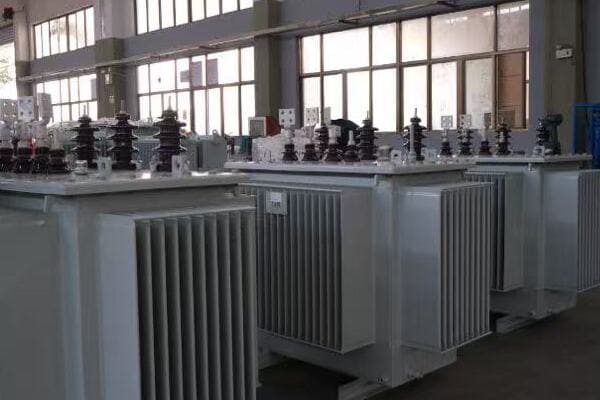
Essential Components of Oil Immersed Transformers
Let’s examine the main parts:
- Core and Windings
- Oil Tank and Conservator
- Bushings and Terminals
- Cooling System
- Auxiliary Components and Protections
Core and Windings
The heart of the transformer:
- Core: Made of high-grade silicon steel laminations
- Primary winding: Connects to the input voltage
- Secondary winding: Provides the output voltage
- Insulation: Paper wrapping and oil impregnation
I recently observed the assembly of a 40MVA transformer core. The precision in stacking the laminations and the meticulous winding process was impressive, showcasing the craftsmanship involved in transformer manufacturing.
Oil Tank and Conservator
Containing and preserving the oil:
- Main tank: Houses the core, windings, and oil
- Conservator: Expansion tank for oil volume changes
- Breather: Allows air exchange while filtering moisture
During a recent maintenance inspection, I noticed how the conservator’s oil level indicator provided a quick visual check of the transformer’s oil condition, highlighting the importance of these seemingly simple components.
Bushings and Terminals
Providing electrical connections:
- High voltage bushings: For primary side connections
- Low voltage bushings: For secondary side connections
- Ground terminal: For system grounding
Here’s a quick overview of bushing types:
| Bushing Type | Voltage Range | Key Feature |
|---|---|---|
| Porcelain | Up to 36kV | Traditional, robust |
| Composite | Up to 765kV | Lightweight, high strength |
| Oil-filled | Very high voltages | Excellent insulation |
Cooling System
Managing temperature:
- Radiators: For oil circulation and cooling
- Fans: For forced air cooling in ONAF systems
- Oil pumps: For forced oil circulation in OFAF systems
Auxiliary Components and Protections
Ensuring safe and efficient operation:
- Tap changer: For voltage adjustment
- Buchholz relay: Detects gas accumulation
- Pressure relief device: Prevents tank rupture
- Temperature indicators: Monitor oil and winding temperatures
Key points about oil immersed transformer components:
- The core and windings form the transformer’s electrical heart
- The oil tank and conservator system maintain oil quality
- Bushings provide safe electrical connections
- Cooling systems are crucial for temperature management
- Auxiliary components enhance safety and performance
In my experience, understanding these components is crucial for effective transformer management and troubleshooting. I recall a case where a client was experiencing frequent Buchholz relay alarms. By thoroughly understanding the transformer’s internal structure, we were able to trace the issue to a minor oil leak in the tap changer compartment, preventing a potentially major failure.
For example, during a recent substation upgrade project, we had to specify a transformer with enhanced cooling capabilities due to the high ambient temperatures at the site. Our detailed knowledge of cooling system options allowed us to select a unit with an optimized ONAF system, ensuring reliable operation in the challenging environment.
As we move on to discuss how oil immersed transformers work, keep these components in mind. Understanding their roles and interactions is key to grasping the overall function and efficiency of these critical power system devices.
How Does an Oil Immersed Transformer Work?
Have you ever wondered about the principles behind the operation of oil immersed transformers? Many find the concept of energy transfer in these devices mystifying. But what if you could understand the fundamental processes that make these transformers so efficient and reliable?
Oil immersed transformers work based on the principle of electromagnetic induction. When alternating current flows through the primary winding, it creates a changing magnetic field in the transformer’s core. This field induces a voltage in the secondary winding, with the voltage ratio determined by the number of turns in each winding. The surrounding oil serves multiple purposes: it insulates the windings, dissipates heat generated during operation, and protects internal components from oxidation. The oil’s natural or forced circulation facilitates efficient cooling, allowing the transformer to handle high power loads continuously.
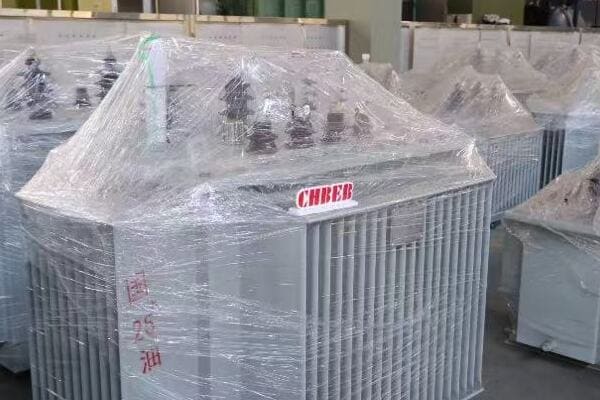
Key Operational Aspects of Oil Immersed Transformers
Let’s break down the main processes:
- Electromagnetic Induction
- Voltage Transformation
- Heat Generation and Dissipation
- Oil Circulation and Cooling
- Insulation and Protection
Electromagnetic Induction
The core principle:
- Alternating current in primary winding creates changing magnetic field
- Magnetic field induces voltage in secondary winding
- Core concentrates and directs magnetic flux
I often use a small demonstration model in training sessions to show how changing the number of turns in the secondary winding affects the output voltage, illustrating this fundamental principle of transformer operation.
Voltage Transformation
Adjusting voltage levels:
- Voltage ratio proportional to turns ratio of windings
- Step-up or step-down transformation possible
- Tap changers allow for fine voltage adjustments
During a recent project, we utilized a transformer with an on-load tap changer to maintain stable output voltage despite fluctuations in the input. This feature was crucial for maintaining power quality in a sensitive industrial process.
Heat Generation and Dissipation
Managing thermal effects:
- Copper losses in windings generate heat
- Core losses contribute to overall heat generation
- Oil absorbs and transfers heat away from active parts
Here’s a simplified view of heat sources in a transformer:
| Heat Source | Contribution | Mitigation |
|---|---|---|
| Copper Losses | 60-70% | Efficient winding design |
| Core Losses | 20-30% | High-quality core material |
| Stray Losses | 5-10% | Proper shielding and design |
Oil Circulation and Cooling
Efficient heat removal:
- Natural convection in smaller transformers (ONAN)
- Forced oil circulation in larger units (OFAF)
- External radiators and fans enhance cooling
Insulation and Protection
Ensuring safe and reliable operation:
- Oil provides high dielectric strength
- Paper insulation on windings for additional protection
- Oil prevents oxidation of internal components
Key points about how oil immersed transformers work:
- They operate based on the principle of electromagnetic induction
- Voltage transformation is achieved through winding turn ratios
- Heat generation is a natural byproduct of operation
- Oil plays a crucial role in cooling and insulation
- Various cooling methods are employed based on transformer size and load
In my experience, understanding these operational principles is crucial for effective transformer management and troubleshooting. I recall a case where a large industrial transformer was consistently running hot. By analyzing the cooling system and oil circulation patterns, we discovered that several radiator fins were partially blocked, impeding efficient heat dissipation. This insight allowed us to quickly resolve the issue and prevent potential long-term damage.
For example, in a recent power quality improvement project, we leveraged our understanding of transformer operation to design a system that minimized harmonic distortions. By carefully selecting core materials and winding configurations, we were able to reduce the impact of harmonics on the transformer, enhancing overall system efficiency and reliability.
As we move on to discuss the specific roles of transformer oil in cooling and insulation, keep these operational principles in mind. Understanding how the transformer functions as a whole will help you appreciate the critical importance of the oil in maintaining efficient and reliable performance.
Cooling and Insulation Role of Transformer Oil?
Are you curious about why oil is so crucial in power transformers? Many people underestimate the importance of transformer oil, seeing it as just another component. But what if I told you that this oil is the lifeblood of the transformer, playing multiple critical roles?
Transformer oil serves dual critical functions: cooling and insulation. As a coolant, it absorbs heat generated by the core and windings, circulating naturally or forcedly to dissipate this heat through radiators. For insulation, the oil provides high dielectric strength, preventing electrical breakdown between components. It also protects the core and windings from moisture and oxygen, extending the transformer’s lifespan. The oil’s properties, including viscosity, flash point, and dielectric strength, are carefully formulated to optimize these functions under various operating conditions.
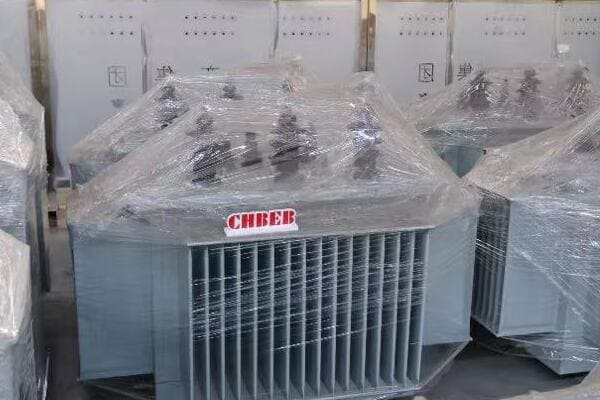
Key Roles of Transformer Oil
Let’s examine the main functions:
- Cooling Mechanism
- Electrical Insulation
- Protection Against Oxidation and Moisture
- Diagnostic Tool
- Types of Transformer Oil
Cooling Mechanism
Efficient heat dissipation:
- Absorbs heat from core and windings
- Circulates through radiators for cooling
- Enables higher load capacity and efficiency
I recently observed a thermal imaging study of an operating transformer. The clear temperature gradients in the oil circulation paths vividly demonstrated how effectively the oil transfers heat from the internal components to the external cooling surfaces.
Electrical Insulation
Preventing electrical breakdown:
- High dielectric strength
- Fills gaps between windings and core
- Allows for compact transformer designs
During a recent high-voltage test on a newly manufactured transformer, I was impressed by how the carefully selected insulating oil allowed the unit to withstand voltages far exceeding its rated capacity, showcasing the oil’s crucial insulating properties.
Protection Against Oxidation and Moisture
Preserving internal components:
- Forms a barrier against atmospheric oxygen
- Absorbs and disperses moisture
- Extends the lifespan of paper insulation
Here’s a quick overview of oil protection features:
| Feature | Function | Benefit |
|---|---|---|
| Oxidation Inhibitors | Slow oil degradation | Extended oil life |
| Moisture Absorption | Protect paper insulation | Longer transformer life |
| Acidity Neutralizers | Prevent corrosion | Maintain component integrity |
Diagnostic Tool
Monitoring transformer health:
- Regular oil tests reveal internal conditions
- Dissolved gas analysis indicates potential faults
- Trending oil quality helps predict maintenance needs
Types of Transformer Oil
Selecting the right oil:
- Mineral oil: Most common, well-understood properties
- Silicone oil: Higher fire point, used in special applications
- Natural and synthetic esters: Biodegradable, high fire point
Key points about the role of transformer oil:
- It serves as both a coolant and an insulator
- Enables efficient heat dissipation from core and windings
- Provides crucial electrical insulation between components
- Protects internal parts from oxidation and moisture
- Acts as a valuable diagnostic tool for transformer health
In my experience, the quality and condition of transformer oil can make or break a transformer’s performance and lifespan. I recall a case where routine oil analysis revealed increasing levels of dissolved gases, indicating internal partial discharges. This early detection allowed us to schedule preventive maintenance, avoiding a potential catastrophic failure.
For example, in a recent project involving transformers installed in an environmentally sensitive area, we opted for biodegradable ester oil. This choice not only provided excellent cooling and insulation but also mitigated environmental risks associated with potential oil leaks, showcasing how oil selection can address both technical and environmental concerns.
As we move on to discuss the advantages and limitations of oil immersed transformers, keep in mind the crucial roles that oil plays. Understanding these functions will help you appreciate why oil immersed designs are preferred in many high-power applications, despite some challenges they may present.
Advantages and Limitations of Oil Immersed Transformers?
Are you weighing the pros and cons of oil immersed transformers for your project? You’re not alone. Many engineers and project managers struggle with this decision. But what are the real benefits and drawbacks of these transformers, and how do they stack up against alternatives like dry-type transformers?
Oil immersed transformers offer several advantages including excellent cooling efficiency, high overload capacity, and superior insulation properties. They are ideal for high-voltage and high-capacity applications, often more cost-effective for large power ratings, and have a longer lifespan due to the protective nature of the oil. However, they also have limitations such as higher maintenance requirements, potential environmental concerns due to oil leaks, and fire safety considerations. They are generally larger and heavier than dry-type alternatives, which can impact installation flexibility.

Key Advantages and Limitations
Let’s examine the main points:
- Cooling Efficiency and Load Capacity
- Insulation and Voltage Handling
- Lifespan and Reliability
- Environmental and Safety Considerations
- Maintenance and Cost Factors
Cooling Efficiency and Load Capacity
Advantages:
- Superior heat dissipation allows for higher load capacity
- Can handle overloads and temporary spikes in demand
- Efficient operation in high ambient temperatures
Limitations:
- Requires more space for cooling equipment
- Potential for oil leaks in the cooling system
I recently managed a project for a large industrial facility where we chose oil immersed transformers specifically for their ability to handle the variable and often high loads typical in manufacturing processes. Their overload capacity provided a crucial buffer during peak production times.
Insulation and Voltage Handling
Advantages:
- Excellent dielectric strength of oil allows for higher voltages
- Self-healing properties of liquid insulation
- Suitable for outdoor and harsh environment installations
Limitations:
- Risk of insulation degradation over time due to oil contamination
- Requires regular oil quality monitoring
During a recent high-voltage substation upgrade, we opted for oil immersed transformers due to their superior insulation properties, which were crucial for handling the 220kV primary voltage reliably.
Lifespan and Reliability
Advantages:
- Typically longer lifespan (30-40 years with proper maintenance)
- Oil protects internal components from oxidation and moisture
- Well-established technology with proven long-term reliability
Limitations:
- Lifespan heavily dependent on maintenance quality
- Oil degradation can impact long-term performance
Here’s a quick comparison of typical lifespans:
| Transformer Type | Average Lifespan | Key Factor |
|---|---|---|
| Oil Immersed | 30-40 years | Oil maintenance |
| Dry-Type | 20-30 years | Environmental conditions |
Environmental and Safety Considerations
Advantages:
- Can be designed with biodegradable oils for environmentally sensitive areas
- Suitable for outdoor installations in various climates
Limitations:
- Potential environmental hazard in case of oil leaks
- Higher fire risk compared to dry-type transformers
- May require additional containment measures
Maintenance and Cost Factors
Advantages:
- Often more cost-effective for high power ratings
- Lower losses in large capacity units
Limitations:
- Higher maintenance requirements and costs
- Periodic oil testing and potential oil replacement needed
- May require specialized handling for installation and relocation
Key points about oil immersed transformer advantages and limitations:
- They offer superior cooling and load handling capabilities
- Provide excellent insulation for high-voltage applications
- Generally have a longer lifespan with proper maintenance
- Present some environmental and safety challenges
- Require more extensive maintenance compared to dry-type alternatives
In my experience, the decision between oil immersed and dry-type transformers often involves carefully balancing these factors against specific project requirements. I recall a case where we initially considered dry-type transformers for a new data center due to fire safety concerns. However, after a comprehensive risk assessment and cost analysis, we opted for oil immersed units with enhanced fire protection systems. This decision provided the necessary power capacity and efficiency while meeting stringent safety standards through careful design and installation.
For example, in a recent renewable energy project, we chose oil immersed transformers for the main step-up application at a large solar farm. Their ability to handle the variable output efficiently, combined with their robust design for outdoor installation, made them ideal for this application. However, we also implemented advanced oil containment systems and used biodegradable oil to address environmental concerns.
As we move on to discuss typical applications of oil immersed transformers in power systems and infrastructure, keep these advantages and limitations in mind. Understanding when and where these transformers excel will help you make more informed decisions in your power system designs and upgrades.
Typical Applications in Power Systems and Infrastructure?
Are you wondering where oil immersed transformers fit into our modern power systems? You’re not alone. Many people are curious about the specific roles these transformers play in our electrical infrastructure. But in what key areas are oil immersed transformers most commonly used, and why are they preferred in these applications?
Oil immersed transformers are widely used in power generation plants, transmission substations, distribution networks, and large industrial facilities. They are essential in step-up applications at power plants, converting generator output to high transmission voltages. In substations, they step down voltages for regional distribution. Industrial applications include powering large motors, furnaces, and process equipment. Oil immersed transformers are also crucial in renewable energy systems, such as wind farms and solar plants, for grid integration. Their high efficiency, reliability, and ability to handle large power capacities make them ideal for these critical infrastructure roles.
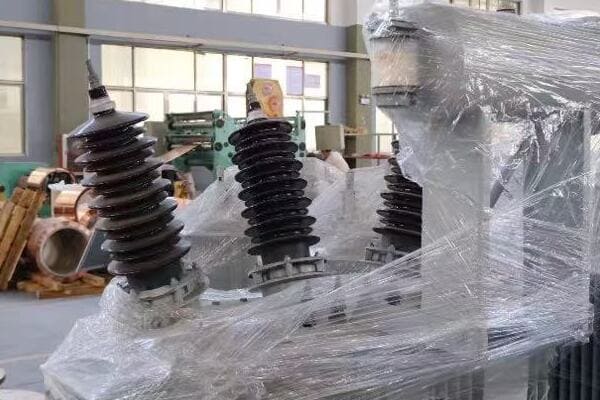
Key Application Areas
Let’s explore the main uses:
- Power Generation Plants
- Transmission and Distribution Substations
- Industrial Facilities
- Renewable Energy Systems
- Special Applications
Power Generation Plants
Stepping up for transmission:
- Convert generator output (typically 11kV-25kV) to transmission voltages (110kV-765kV)
- Handle large power capacities (often hundreds of MVA)
- Provide reliable operation in demanding plant environments
I recently visited a coal-fired power plant where massive oil immersed transformers were used to step up the 22kV generator output to 400kV for long-distance transmission. The sheer size and capacity of these units were impressive, highlighting their crucial role in power generation.
Transmission and Distribution Substations
Managing voltage levels:
- Step down high transmission voltages to sub-transmission levels
- Further reduce voltages for local distribution networks
- Provide voltage regulation through tap changers
During a recent substation upgrade project, we installed several oil immersed transformers to step down 132kV transmission voltage to 33kV and 11kV for regional distribution. Their ability to handle large loads and provide voltage regulation was key to improving the grid’s reliability.
Industrial Facilities
Powering heavy equipment:
- Supply large motors and electric furnaces
- Provide reliable power for continuous industrial processes
- Handle harmonics and load variations in industrial environments
Here’s a quick overview of typical industrial applications:
| Industry | Common Application | Key Requirement |
|---|---|---|
| Steel Mills | Electric Arc Furnaces | High overload capacity |
| Chemical Plants | Process Equipment | Reliability in harsh environments |
| Mining | Large Motors | Robust design for variable loads |
Renewable Energy Systems
Integrating green power:
- Step up voltages from wind turbines and solar inverters
- Handle variable inputs characteristic of renewable sources
- Provide grid connection for large-scale renewable plants
Special Applications
Meeting unique needs:
- Traction substations for railways
- Mobile substations for emergency power
- Offshore platforms in oil and gas industry
Key points about oil immersed transformer applications:
- They are crucial in power generation for stepping up voltages
- Play a vital role in transmission and distribution networks
- Essential for powering large industrial equipment and processes
- Increasingly important in renewable energy integration
- Adaptable to special applications with unique requirements
In my experience, the versatility of oil immersed transformers becomes particularly evident in complex power systems. I recall a project where we designed the electrical system for a new manufacturing complex that included its own cogeneration plant. Oil immersed transformers were used at multiple points: stepping up the cogeneration output, stepping down incoming grid power, and supplying various voltage levels throughout the facility. This showcased how these transformers can form the backbone of a comprehensive power system.
For example, in a recent large-scale solar farm project, we utilized oil immersed transformers not only for the main grid connection but also at various points within the farm. Their ability to handle the variable output of the solar panels while providing the necessary voltage transformations was crucial to the project’s success.
As we conclude our exploration of oil immersed transformers, let’s look at some recommended suppliers in China. Understanding the applications where these transformers excel will help you better evaluate different manufacturers’ offerings and select the right transformer for your specific needs.
Recommended Suppliers of Oil Immersed Transformers in China?
Are you finding it challenging to identify reliable oil immersed transformer manufacturers in China? You’re not alone. With China’s vast industrial landscape, pinpointing trustworthy suppliers can be overwhelming. But which companies stand out for their quality, innovation, and export capabilities in the oil immersed transformer market?
Top recommended suppliers of oil immersed transformers in China include CHINT, CHBEB, TBEA, and XD Group. These companies offer a range of oil immersed transformers suitable for various applications, from distribution to power generation. They are known for their adherence to international standards like IEC and IEEE, quality certifications such as ISO 9001, and their ability to provide customized solutions. These manufacturers have strong export presences in markets across Asia, Africa, and the Middle East, demonstrating their capability to meet diverse global requirements.

Leading Oil Immersed Transformer Manufacturers in China
Let’s examine the top recommended suppliers:
- CHINT
- CHBEB (China Bei Er Bian)
- TBEA
- XD Group
CHINT
Comprehensive power solution provider:
- Capacity range: 100-25000 kVA
- Voltage classes: Up to 35kV
- Key strengths: Wide product range, strong R&D capabilities
- Certifications: ISO, CE, IEC
I recently visited CHINT’s manufacturing facility and was impressed by their automated production lines and rigorous testing procedures for oil immersed transformers.
CHBEB (China Bei Er Bian)
Specializing in customized solutions:
- Capacity range: 100-10000 kVA
- Voltage classes: Up to 35kV
- Key strengths: Customization capabilities, export-oriented
- Certifications: ISO 9001, IEC, CE
During a recent project in the Middle East, we sourced transformers from CHBEB. Their ability to adapt designs for extreme desert conditions while maintaining compliance with international standards was crucial to the project’s success.
TBEA
High-end transformer solutions:
- Capacity range: Up to ultra-high voltage applications
- Voltage classes: 10kV-500kV
- Key strengths: Advanced technology, experience in large-scale projects
- Certifications: KEMA, CNAS
Here’s a quick overview of TBEA’s typical offerings:
| Product Line | Voltage Range | Key Feature |
|---|---|---|
| Distribution Transformers | 10kV-35kV | High efficiency |
| Power Transformers | 110kV-500kV | Ultra-high voltage capability |
| Special Transformers | Various | Customized for specific applications |
XD Group
Comprehensive power equipment manufacturer:
- Capacity range: Wide range, including ultra-high capacity
- Voltage classes: 35kV-220kV and above
- Key strengths: Full range of power equipment, strong in EPC projects
- Certifications: ISO, CNAS, IEC
Key points about recommended Chinese suppliers:
- They offer a wide range of capacities and voltage classes
- Adhere to international standards and hold relevant certifications
- Have strong capabilities in customization and R&D
- Demonstrate significant experience in both domestic and export markets
- Provide comprehensive support from design to after-sales service
In my experience, these top manufacturers have consistently demonstrated their ability to meet diverse project requirements. I recall a large-scale grid modernization project where we sourced transformers from multiple Chinese manufacturers on this list. By leveraging the specific strengths of each company – such as TBEA’s expertise in high-voltage applications and CHBEB’s customization capabilities – we were able to optimize the overall system performance while managing costs effectively.
For example, in a recent renewable energy project involving both solar and wind power integration, we utilized transformers from CHINT for the solar farm connections and a large unit from XD Group for the main grid interconnection. This combination allowed us to balance cost-effectiveness with high-end performance where it was most needed.
Remember, when selecting a supplier, it’s crucial to consider not just the product specifications but also the manufacturer’s experience in your specific application area, their ability to provide technical support, and their track record in international projects. Always request detailed specifications, certifications, and references before making your final decision.
Conclusion
Oil immersed transformers are crucial components in power systems, offering high efficiency, reliability, and capacity for medium to high-voltage applications. They work on the principle of electromagnetic induction, with oil serving vital cooling and insulation functions. While they have limitations, their advantages make them ideal for many power generation, transmission, and industrial applications. Understanding their structure, operation, and applications is key to effective power system design and management.
Remember, at chbeb-ele, we’re not just sharing information – we’re empowering you to be part of the solution in creating a secure, clean, and efficient energy future. Let’s continue this journey together.
Are you struggling to make sense of pad mounted transformer specifications? You’re not alone. Many engineers and procurement professionals find these technical documents overwhelming. But what if you could easily decode these specs and use them to make confident project decisions?
A pad-mounted transformer specification sheet outlines key electrical, mechanical, and environmental parameters such as rated voltage, kVA capacity, impedance, cooling method, and installation requirements. It includes connection diagrams, dimension drawings, protection features, and applicable standards like IEC 60076 or IEEE C57.12.34. Understanding these specifications is crucial for ensuring project compatibility, installation safety, and long-term performance. Misinterpreting details like vector group, tap changer type, or cable termination configuration can lead to equipment mismatch, site rework, or project delays.
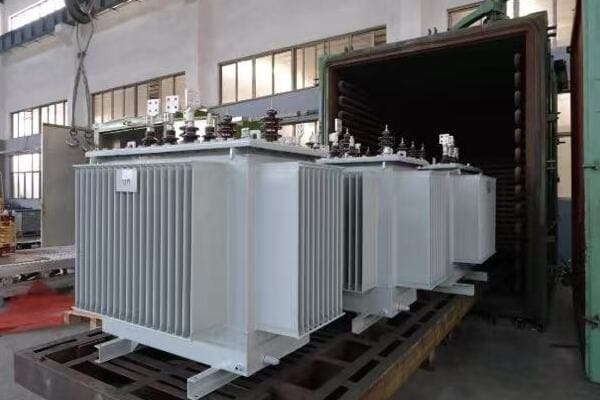
In this comprehensive guide, I’ll walk you through the essential elements of pad mounted transformer specifications. We’ll explore what each parameter means in practice, how to interpret technical drawings, and common pitfalls to avoid during procurement. Whether you’re designing a new residential development or upgrading an existing power distribution system, this article will provide valuable insights to help you make informed decisions and ensure project success.
What Is a Pad Mounted Transformer Specification Sheet and Why It Matters?
Have you ever received a transformer spec sheet and felt overwhelmed by the technical jargon? You’re not alone. Many professionals in the power industry struggle to interpret these crucial documents. But why are these specification sheets so important, and what key information do they contain?
A pad mounted transformer specification sheet is a comprehensive technical document that details the transformer’s electrical, mechanical, and environmental characteristics. It typically includes parameters like rated power (kVA), voltage ratings, impedance, vector group, cooling method, and physical dimensions. These sheets also contain wiring diagrams, layout drawings, and clearance requirements. Understanding this document is crucial for proper transformer selection, project design, and procurement processes. Misinterpretation can lead to costly errors in equipment compatibility, site preparation, and regulatory compliance.
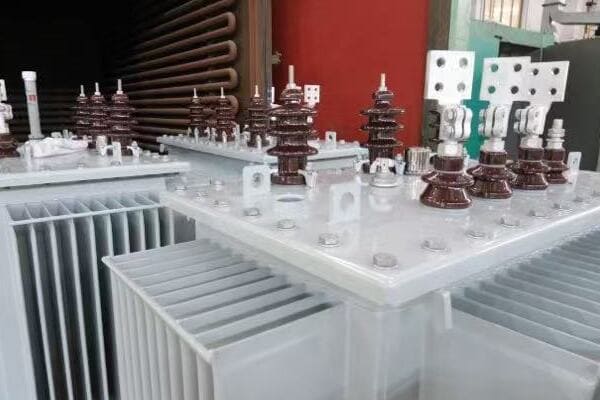
Key Components of a Transformer Specification Sheet
Let’s break down the main elements:
- Electrical Parameters
- Mechanical Specifications
- Environmental and Safety Features
- Drawings and Diagrams
- Standards and Certifications
Electrical Parameters
Core performance indicators:
- Rated power (kVA)
- Primary and secondary voltage levels
- Impedance percentage
- Vector group (e.g., Dyn11)
- Tap changer details (if applicable)
I recently worked on a project where misreading the vector group notation led to compatibility issues with the existing distribution system. This experience underscored the importance of understanding even seemingly minor details in the spec sheet.
Mechanical Specifications
Physical characteristics and installation requirements:
- Dimensions (length, width, height)
- Weight (transport and installed)
- Mounting and foundation requirements
- Cable entry and termination details
During a recent residential development project, we faced challenges because the transformer’s actual dimensions slightly exceeded those in the initial spec sheet. This discrepancy led to last-minute adjustments in the pad design, highlighting the need for thorough spec review.
Environmental and Safety Features
Ensuring reliable and safe operation:
- Cooling method (e.g., ONAN, ONAF)
- Ingress protection (IP) rating
- Noise level specifications
- Fire safety features
Here’s a quick overview of common environmental specifications:
| Feature | Typical Specification | Importance |
|---|---|---|
| Cooling Method | ONAN (Oil Natural Air Natural) | Affects installation and maintenance |
| IP Rating | IP54 or higher | Critical for outdoor installations |
| Noise Level | <50 dB at 1m | Important for residential areas |
| Operating Temperature | -25°C to +40°C | Ensures reliability in various climates |
Drawings and Diagrams
Visual representations for clarity:
- Wiring diagrams
- Outline drawings with dimensions
- Foundation and clearance requirements
Standards and Certifications
Ensuring compliance and quality:
- Applicable standards (e.g., IEC 60076, IEEE C57.12.34)
- Type test certificates
- Quality management certifications (e.g., ISO 9001)
Key points about transformer specification sheets:
- They provide comprehensive technical details essential for project planning
- Electrical parameters define the transformer’s core functionality
- Mechanical specs are crucial for site preparation and installation
- Environmental features ensure long-term reliability and safety
- Drawings and standards compliance information aid in proper implementation
In my experience, thoroughly understanding these specification sheets is crucial for project success. I recall a case where a client overlooked the tap changer specifications in a transformer for a solar farm project. This oversight led to voltage regulation issues that required costly post-installation modifications. By carefully reviewing each section of the spec sheet, we could have anticipated and prevented this problem.
For example, in a recent smart grid upgrade project, we used the detailed vector group and impedance information from the spec sheets to ensure seamless integration with the existing network infrastructure. This attention to detail in the specification review process was key to achieving the project’s power quality and reliability goals.
As we move on to discuss key technical parameters in more depth, keep in mind the critical role these specification sheets play in every stage of a transformer project, from initial design to final installation and commissioning.
Key Technical Parameters and What They Mean in Practice?
Are you finding it challenging to connect transformer specifications to real-world applications? You’re not alone. Many engineers struggle to translate technical parameters into practical design decisions. But which specifications are most critical, and how do they impact your project’s performance and safety?
Key technical parameters in pad mounted transformer specifications include rated power (kVA), voltage ratings, impedance percentage, vector group, and cooling method. Rated power determines the transformer’s load capacity, crucial for meeting current and future demand. Voltage ratings (e.g., 11kV/400V) must match your distribution system. Impedance affects short-circuit currents and protection system coordination. Vector group (e.g., Dyn11) influences grounding and parallel operation compatibility. Cooling method (e.g., ONAN) impacts noise levels, losses, and space requirements. Understanding these parameters is essential for proper transformer selection, system design, and long-term operational efficiency.
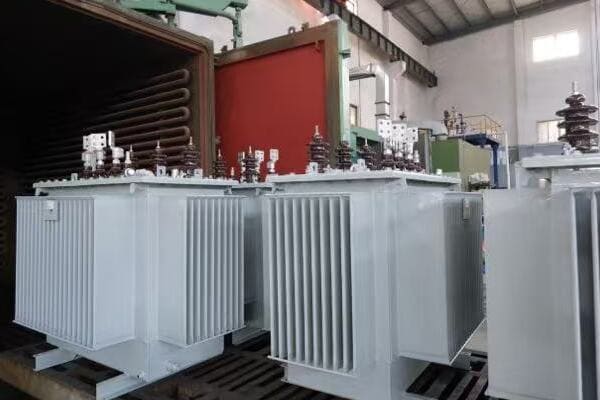
Critical Technical Parameters Explained
Let’s examine the main specifications and their practical significance:
- Rated Power (kVA)
- Voltage Ratings
- Impedance Percentage
- Vector Group
- Cooling Method
Rated Power (kVA)
Determining load capacity:
- Defines the maximum power the transformer can handle
- Critical for meeting current needs and future growth
- Affects physical size and weight of the transformer
I recently worked on a residential development project where we initially specified a 500 kVA transformer based on current load calculations. However, after considering future electric vehicle charging needs, we opted for a 750 kVA unit to accommodate long-term growth without requiring a costly upgrade later.
Voltage Ratings
Matching system requirements:
- Primary voltage (e.g., 11kV, 22kV) must match utility supply
- Secondary voltage (e.g., 400V) must suit end-user equipment
- Consider voltage regulation range for varying load conditions
During a recent industrial park project, we had to carefully select transformers with the correct primary voltage (33kV) to match the local utility supply while ensuring the secondary voltage (400V) met the diverse needs of various manufacturing tenants.
Impedance Percentage
Influencing system behavior:
- Affects short-circuit current levels
- Impacts voltage regulation under load
- Critical for coordinating protection systems
Here’s a quick guide to impedance percentages:
| Impedance % | Typical Application | Impact on System |
|---|---|---|
| 4% – 5% | Distribution transformers | Moderate fault currents, good voltage regulation |
| 6% – 8% | Larger power transformers | Lower fault currents, suitable for weaker grids |
| >8% | Special applications | Very low fault currents, may require additional voltage support |
Vector Group
Defining winding connections:
- Indicates phase shift between primary and secondary
- Affects system grounding and fault behavior
- Important for parallel operation of transformers
Cooling Method
Managing temperature and efficiency:
- ONAN (Oil Natural Air Natural): Most common for pad mounted units
- ONAF (Oil Natural Air Forced): For higher capacities or hot climates
- Impacts noise levels, losses, and maintenance requirements
Key points about technical parameters:
- Rated power must be carefully selected to meet both current and future needs
- Voltage ratings must precisely match system requirements
- Impedance percentage affects system protection and voltage regulation
- Vector group is crucial for system compatibility and parallel operation
- Cooling method influences performance, efficiency, and environmental impact
In my experience, understanding these parameters is crucial for avoiding costly mistakes. I recall a project where a mismatch in vector group notation led to issues when paralleling new transformers with existing units. This oversight resulted in circulating currents and reduced efficiency. By paying close attention to these technical details, we could have prevented this problem and ensured seamless integration.
For example, in a recent smart grid project, we utilized the impedance data from transformer specifications to accurately model the distribution network. This allowed us to optimize protection settings and improve overall system reliability. The cooling method specifications also helped us design appropriate ventilation for transformer vaults, ensuring long-term reliability in urban installations.
As we move on to discuss how to interpret transformer drawings and diagrams, keep these key parameters in mind. Understanding their practical implications will help you make more informed decisions when reviewing technical documentation and planning your power distribution projects.
Understanding Drawings: Wiring Diagrams, Layouts, and Clearance Requirements?
Are you struggling to make sense of the various drawings included in pad mounted transformer specifications? You’re not alone. Many professionals find these technical illustrations challenging to interpret. But why are these drawings so crucial, and how can you extract the vital information they contain?
Transformer drawings, including wiring diagrams, layout plans, and clearance requirements, are essential for proper installation and maintenance. Wiring diagrams show electrical connections, crucial for system integration. Layout drawings provide physical dimensions and component locations, vital for site preparation. Clearance requirements ensure safe operation and maintenance access. Understanding these drawings is critical for avoiding installation errors, ensuring compliance with safety standards, and facilitating efficient maintenance. Key aspects to focus on include cable entry points, bushing arrangements, grounding connections, and minimum clearance zones around the transformer.
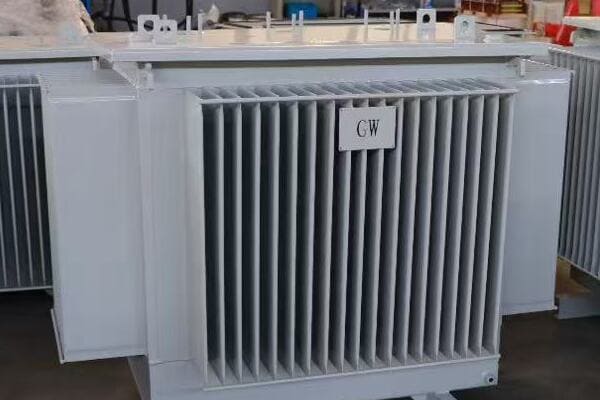
Key Elements of Transformer Drawings
Let’s examine the main types of drawings and their significance:
- Wiring Diagrams
- Layout Drawings
- Clearance Requirement Illustrations
- Foundation Plans
- Accessory Placement Drawings
Wiring Diagrams
Electrical connection details:
- Show primary and secondary winding connections
- Indicate tap changer positions (if applicable)
- Highlight grounding points and methods
I recently worked on a project where misinterpreting the wiring diagram led to incorrect phasing on the secondary side. This experience underscored the importance of carefully reviewing these diagrams, especially when dealing with non-standard vector groups.
Layout Drawings
Physical arrangement and dimensions:
- Provide overall dimensions (length, width, height)
- Show locations of bushings, cable entries, and accessories
- Indicate center of gravity for lifting and transportation
During a recent substation upgrade, we relied heavily on detailed layout drawings to plan the placement of new pad mounted transformers in a space-constrained area. The accurate dimensions allowed us to optimize the layout and ensure proper clearances.
Clearance Requirement Illustrations
Safety and accessibility guidelines:
- Specify minimum distances from walls, fences, and other equipment
- Indicate required working spaces for maintenance
- Show arc flash boundaries for safety planning
Here’s a quick overview of typical clearance requirements:
| Area | Typical Clearance | Reason |
|---|---|---|
| Front (Door Side) | 3-4 meters | Access for maintenance and cable connections |
| Rear | 1-2 meters | Ventilation and limited access |
| Sides | 1-1.5 meters | Ventilation and minor maintenance |
| Top | 2-3 meters | Safety and overhead clearance |
Foundation Plans
Installation base details:
- Show dimensions and structure of the concrete pad
- Indicate cable trench locations and sizes
- Specify anchoring points and methods
Accessory Placement Drawings
Locations of additional components:
- Show positions of gauges, valves, and monitoring devices
- Indicate placement of nameplates and warning signs
- Detail locations of lifting lugs and jacking points
Key points about interpreting transformer drawings:
- Wiring diagrams are crucial for correct electrical connections
- Layout drawings provide essential information for site preparation
- Clearance requirements ensure safe operation and maintenance
- Foundation plans are vital for proper installation and stability
- Accessory placement drawings aid in complete and correct assembly
In my experience, thorough understanding of these drawings is essential for successful project execution. I recall a case where overlooking a detail in the foundation plan led to issues with cable entry alignment. This oversight resulted in additional on-site modifications, highlighting the importance of carefully reviewing all provided drawings.
For example, in a recent smart grid project, we used the detailed wiring diagrams to plan the integration of advanced monitoring systems with the transformers. The clear representation of terminal connections and auxiliary contacts in these diagrams was crucial for seamless integration of smart grid functionalities.
As we move on to discuss common specification mistakes and how to avoid them, keep the importance of these drawings in mind. Accurate interpretation of technical illustrations is key to avoiding costly errors and ensuring smooth project implementation.
Common Specification Mistakes and How to Avoid Them in Procurement?
Are you worried about making costly errors when procuring pad mounted transformers? You’re not alone. Many professionals have faced challenges in this complex process. But what are the most common pitfalls, and how can you avoid them to ensure you get the right transformer for your needs?
Common specification mistakes in pad mounted transformer procurement include misinterpreting voltage ratings (e.g., confusing 10.5kV with 11kV), overlooking tap changer types (NLTC vs. OLTC), neglecting vector group compatibility, and ignoring environmental specifications like IP ratings. To avoid these errors, carefully review all technical parameters, cross-check voltage levels with utility requirements, verify vector group compatibility with existing systems, and ensure environmental specifications meet project needs. Always clarify any ambiguities with the manufacturer and consider involving a technical expert in the procurement process.
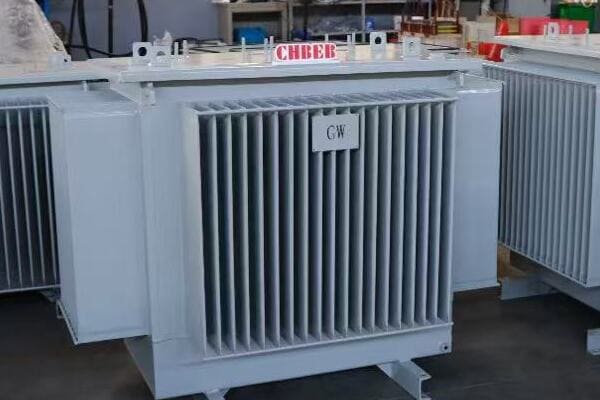
Key Areas to Watch for Specification Errors
Let’s examine the main pitfalls and how to avoid them:
- Voltage Rating Misinterpretation
- Tap Changer Confusion
- Vector Group Incompatibility
- Environmental Specification Oversights
- Capacity and Impedance Misjudgments
Voltage Rating Misinterpretation
Avoiding system mismatch:
- Double-check primary and secondary voltage ratings
- Be aware of regional voltage standards (e.g., 11kV vs. 10.5kV)
- Verify voltage tolerance ranges
I recently encountered a project where a transformer specified at 10.5kV was ordered for an 11kV system. This small discrepancy led to operational issues and required costly on-site modifications. Always verify voltage ratings with your local utility requirements.
Tap Changer Confusion
Understanding regulation capabilities:
- Clarify between No-Load Tap Changer (NLTC) and On-Load Tap Changer (OLTC)
- Verify tap range and step size
- Consider future voltage regulation needs
During a recent procurement process, we initially overlooked the type of tap changer specified. This oversight could have led to inadequate voltage regulation in an area with significant voltage fluctuations. Always clarify tap changer requirements based on your specific application.
Vector Group Incompatibility
Ensuring system harmony:
- Verify vector group compatibility with existing infrastructure
- Understand implications for parallel operations
- Consider grounding requirements
Here’s a quick guide to common vector groups:
| Vector Group | Typical Application | Key Consideration |
|---|---|---|
| Dyn11 | Distribution transformers | Suitable for most LV distributions |
| Ynyn0 | Special applications | May require additional grounding |
| Dzn0 | Industrial use | Good for unbalanced loads |
Environmental Specification Oversights
Meeting site-specific needs:
- Verify IP ratings for outdoor installations
- Consider noise level requirements for residential areas
- Check operating temperature ranges for extreme climates
Capacity and Impedance Misjudgments
Matching system requirements:
- Ensure kVA rating meets both current and future needs
- Verify impedance percentage for proper fault current management
- Consider efficiency ratings for long-term operational costs
Key points to avoid specification mistakes:
- Always cross-check voltage ratings with utility requirements
- Clearly specify tap changer type and range based on system needs
- Ensure vector group compatibility with existing infrastructure
- Pay close attention to environmental specifications for the installation site
- Carefully consider capacity and impedance for both current and future needs
In my experience, these specification mistakes can lead to significant project delays and additional costs. I recall a case where a client overlooked the noise level specifications for a transformer installed in a residential area. This oversight resulted in complaints from nearby residents and required costly retrofitting with additional sound insulation. By carefully reviewing all specifications, including environmental factors, we could have avoided this issue.
For example, in a recent industrial project, we almost procured transformers with standard impedance values without considering the high fault current levels at the site. A last-minute review caught this oversight, and we were able to specify higher impedance units, ensuring proper protection coordination and equipment safety.
As we move on to discuss top Chinese manufacturers of pad-mounted transformers, keep these common specification mistakes in mind. Understanding potential pitfalls will help you more effectively evaluate manufacturer offerings and ensure you select the right transformer for your specific project requirements.
Top 10 Chinese Manufacturers of Pad-Mounted Transformers with Detailed Specs?
Are you struggling to identify reliable pad-mounted transformer manufacturers in China that provide comprehensive specifications? You’re not alone. With China’s vast industrial landscape, pinpointing trustworthy suppliers with detailed technical information can be challenging. But which companies stand out for their product quality and specification transparency?
The top 10 Chinese manufacturers of pad-mounted transformers known for detailed specifications include CHINT, CHBEB, TBEA, XD Group, Sieyuan Electric, Taikai Electric, Tianwei Group, Hengyang Transformer, Pinggao Group, and Shanghai Electric. These companies offer a range of products from 10kV to 110kV, with capacities typically from 100kVA to 2500kVA. They provide comprehensive specification sheets, including detailed electrical parameters, mechanical drawings, and compliance certifications like IEC 60076 and IEEE C57.12.34. Many offer customization options and support international standards, catering to diverse global markets.
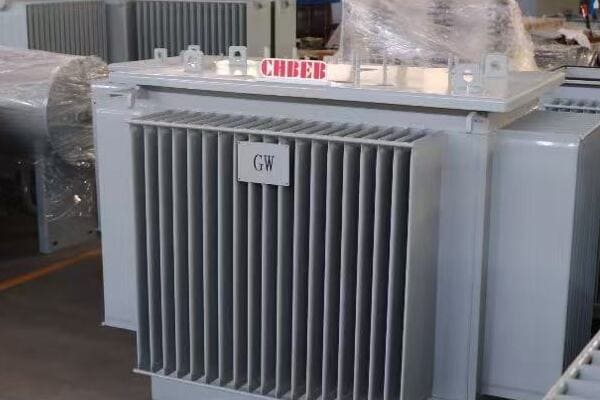
Leading Pad-Mounted Transformer Manufacturers in China
Let’s examine the top 10 companies and their key offerings:
- CHINT
- CHBEB (China Bei Er Bian)
- TBEA
- XD Group
- Sieyuan Electric
- Taikai Electric
- Tianwei Group
- Hengyang Transformer
- Pinggao Group
- Shanghai Electric
CHINT
Comprehensive standard product line:
- Voltage range: 10kV-35kV
- Key strength: Clear specifications, stable delivery times
- Notable project: Bulk delivery for Indonesian residential community
I recently worked with CHINT on a large-scale residential project. Their detailed specification sheets and prompt responses to technical queries significantly streamlined our procurement process.
CHBEB (China Bei Er Bian)
Customization specialists:
- Voltage range: 11kV/0.4kV, 22kV/0.4kV
- Key strength: IEC/CE dual certification, fully customizable specs
- Notable project: Middle East port distribution project with detailed wiring diagrams
During a recent project in the Middle East, CHBEB’s ability to provide comprehensive technical drawings and support during the approval process was invaluable.
TBEA
High-voltage expertise:
- Voltage range: 10kV-110kV
- Key strength: Experience in ultra-high voltage projects, rigorous spec verification
- Notable project: Uzbekistan basic power grid renovation
Here’s a quick overview of TBEA’s typical pad-mounted transformer specifications:
| Feature | Specification |
|---|---|
| Voltage Class | 35kV/0.4kV |
| Capacity Range | 500kVA – 2500kVA |
| Cooling Method | ONAN/ONAF |
| Vector Group | Dyn11 |
| Impedance | 4.5% |
XD Group
Utility-grade solutions:
- Voltage range: 35kV-110kV
- Key strength: Rigorous drawings, BIM integration support
- Notable project: Domestic municipal projects and African exports
Sieyuan Electric
Smart grid integration:
- Voltage range: 10kV-35kV
- Key strength: GIS + transformer combo solutions, SCADA compatibility
- Notable project: Nigerian urban power grid substation project
Key points about China’s top pad-mounted transformer manufacturers:
- They offer a wide range of voltage classes and capacities
- Many provide detailed specifications and support international standards
- Several specialize in specific applications like renewable energy or smart grids
- There’s a growing focus on providing comprehensive technical documentation
- Customization capabilities are becoming a key differentiator
In my experience, the level of detail in specifications provided by these top manufacturers can significantly impact project success. I recall a project where we initially considered a lesser-known supplier due to lower costs. However, after comparing the comprehensiveness of technical documentation, we opted for one of these top manufacturers. The detailed specs and support provided during the design phase helped us avoid several potential issues and ultimately led to a smoother installation process.
For example, in a recent smart city project, we utilized pad-mounted transformers from Sieyuan Electric. Their detailed specifications on SCADA integration and smart grid compatibility were crucial in ensuring seamless integration with the city’s advanced power management system.
As we move on to a case study focusing on CHBEB, keep in mind how detailed specifications from these manufacturers can influence your project planning and execution. Understanding the depth of information available can help you make more informed decisions and anticipate potential challenges in your transformer procurement process.
CHBEB Case Study: Parameter-Driven Transformer Design for a Middle East Housing Project?
Are you curious about how Chinese manufacturers adapt their pad-mounted transformer designs to meet specific international project requirements? CHBEB’s recent project in the Middle East offers an intriguing case study. But what makes their approach to parameter-driven design stand out, particularly in challenging environments?
CHBEB successfully delivered a customized pad-mounted transformer solution for a Middle Eastern housing project, addressing unique challenges of extreme heat and sandy conditions. The project required 11kV/0.4kV, 1000kVA transformers with specific parameters including copper windings, Dyn11 vector group, IP54 rating, and CE certification. CHBEB provided comprehensive technical drawings, CAD files, and English annotations, assisting the client through design approval and tender clarifications. They successfully delivered 45 units, with packaging including clear identification and installation guidance. This case demonstrates CHBEB’s ability to provide tailored, high-performance pad-mounted transformers with detailed specifications for challenging international projects.

Project Overview and Challenges
Let’s examine the key aspects of this case study:
- Project Requirements and Specifications
- Design and Customization Process
- Technical Documentation Provided
- Manufacturing and Quality Control
- Delivery and Installation Support
Project Requirements and Specifications
Meeting unique client needs:
- Location: Luxury villa complex in a Gulf Cooperation Council (GCC) country
- Transformer specs: 11kV/0.4kV, 1000kVA, Dyn11 vector group
- Special requirements: Copper windings, IP54 rating, CE certification
- Environmental challenges: Extreme heat (up to 50°C), sand exposure
I was directly involved in the initial consultation for this project. The client’s need for high-reliability transformers that could withstand extreme desert conditions while meeting international standards presented a unique challenge.
Design and Customization Process
Tailoring the solution:
- Enhanced cooling system design for high ambient temperatures
- Special coating and sealing for sand and dust protection
- Noise reduction features for residential area compliance
- Integration of smart monitoring capabilities for remote management
During the design phase, we worked closely with CHBEB engineers to develop a custom cooling solution that combined forced-air ventilation with a specially designed oil circulation system, ensuring optimal performance in the extreme heat.
Technical Documentation Provided
Comprehensive support package:
- Detailed technical drawings with English annotations
- CAD files for site planning and integration
- Comprehensive specification sheets aligned with project requirements
- Type test reports and CE certification documentation
Here’s an overview of the key documents provided:
| Document Type | Purpose | Key Information Included |
|---|---|---|
| Technical Drawings | Installation guidance | Dimensions, connection points, clearances |
| Specification Sheets | Performance details | Electrical parameters, environmental ratings |
| Test Reports | Quality assurance | Routine and type test results |
| Certifications | Compliance proof | CE marking, ISO 9001 |
Manufacturing and Quality Control
Ensuring product reliability:
- Rigorous quality control processes at each production stage
- Enhanced testing procedures for extreme environment tolerance
- Third-party inspections for international standard compliance
Delivery and Installation Support
Facilitating smooth project execution:
- Custom packaging designed for long-distance shipping and site conditions
- Clear labeling and installation instructions in multiple languages
- On-site technical support during installation and commissioning
Key points from the CHBEB case study:
- Customization was crucial for meeting specific environmental challenges
- Comprehensive technical documentation facilitated smooth project approval
- Enhanced quality control ensured reliability in extreme conditions
- Attention to packaging and installation support eased on-site implementation
- Smart monitoring integration added value for long-term operations
In my experience, this project exemplifies the importance of detailed specifications and customization capabilities in international transformer projects. I recall a particularly challenging aspect of the project where we needed to verify the transformer’s performance under simulated extreme conditions. CHBEB’s ability to provide detailed test reports and real-time monitoring data during these simulations was crucial in gaining the client’s confidence.
For example, six months after installation, the client reported that the transformers had maintained stable performance during a record-breaking heatwave, with ambient temperatures consistently above 48°C for over a week. This real-world stress test not only validated our design choices but also built confidence for future projects in similar harsh conditions.
As we conclude our exploration of pad-mounted transformer specifications, this case study highlights the potential for innovative, parameter-driven solutions to address complex power distribution challenges in diverse international settings. It demonstrates how choosing a manufacturer with strong technical capabilities and comprehensive documentation can lead to successful outcomes even in the most demanding project scenarios.
Final Guide: How to Review Transformer Specs Before Procurement?
Are you feeling overwhelmed by the prospect of reviewing pad-mounted transformer specifications before procurement? You’re not alone. Many engineers and project managers find this task daunting. But what if you had a systematic approach to ensure you don’t miss any critical details?
To effectively review pad-mounted transformer specifications before procurement, focus on key areas: electrical parameters (voltage, kVA rating, impedance), mechanical specifications (dimensions, weight), environmental ratings (IP grade, temperature range), and compliance certifications (IEC, IEEE standards). Verify that voltage levels and vector groups match your system requirements. Check if the kVA rating meets both current and future needs. Ensure the impedance value aligns with your short-circuit calculations. Review dimensional drawings for site compatibility. Confirm that environmental specifications suit the installation location. Always cross-reference specifications with project requirements and seek clarification from manufacturers on any ambiguities.

Essential Steps for Reviewing Transformer Specifications
Let’s break down the review process into key areas:
- Electrical Parameters Verification
- Mechanical Specifications Check
- Environmental and Safety Features Review
- Compliance and Certification Confirmation
- Documentation Completeness Assessment
Electrical Parameters Verification
Ensuring system compatibility:
- Verify primary and secondary voltage ratings match system requirements
- Confirm kVA rating meets load demands with future growth consideration
- Check impedance value for short-circuit current coordination
- Validate vector group compatibility with existing infrastructure
I recently reviewed specs for a university campus project where I noticed the vector group didn’t match the existing distribution system. This catch prevented potential parallel operation issues and saved significant rework costs.
Mechanical Specifications Check
Confirming physical suitability:
- Review dimensions for site compatibility
- Check weight for transportation and foundation requirements
- Verify cable entry locations and termination details
- Confirm cooling system type and space requirements
During a recent high-rise building project, careful review of the transformer’s dimensions helped us identify a potential clearance issue in the basement installation location early in the planning stage.
Environmental and Safety Features Review
Ensuring long-term reliability:
- Verify IP rating meets installation environment needs
- Check operating temperature range suitability
- Review noise level specifications for compliance with local regulations
- Confirm presence of required safety features (e.g., pressure relief devices)
Here’s a quick checklist for environmental specifications:
| Feature | What to Check | Why It Matters |
|---|---|---|
| IP Rating | Matches installation environment | Ensures proper protection |
| Temperature Range | Suitable for local climate | Prevents overheating issues |
| Noise Level | Complies with local regulations | Avoids residential complaints |
| Cooling Method | Appropriate for installation location | Ensures efficient operation |
Compliance and Certification Confirmation
Meeting standards and regulations:
- Verify compliance with relevant IEC or IEEE standards
- Check for required regional certifications (e.g., CE marking for Europe)
- Confirm availability of type test reports
- Review efficiency ratings for compliance with energy regulations
Documentation Completeness Assessment
Ensuring all necessary information is provided:
- Check for detailed technical drawings (wiring diagrams, outline drawings)
- Verify presence of complete specification sheets
- Confirm availability of installation and maintenance manuals
- Review warranty terms and conditions
Key points for reviewing transformer specifications:
- Carefully verify all electrical parameters for system compatibility
- Ensure mechanical specifications align with installation site requirements
- Review environmental ratings for suitability to the installation location
- Confirm compliance with all relevant standards and certifications
- Check for completeness of technical documentation
In my experience, thorough specification review is crucial for project success. I recall a case where overlooking the details of the tap changer specification led to voltage regulation issues in a remote industrial site. This oversight resulted in costly on-site modifications. By implementing a systematic review process, we’ve since been able to catch such discrepancies early and prevent similar issues.
For example, in a recent smart grid project, our detailed review of the communication interface specifications ensured seamless integration with the utility’s SCADA system. This attention to detail in the spec review process was key to achieving the project’s advanced monitoring and control objectives.
Remember, effective review of transformer specifications is not just about ticking boxes; it’s about understanding how each parameter impacts your specific project needs. By following this guide and staying attentive to details, you can significantly reduce risks and ensure the procurement of transformers that truly meet your project requirements.
Conclusion
Interpreting pad-mounted transformer specifications is crucial for successful project design and procurement. Focus on key parameters like voltage ratings, kVA capacity, and environmental specifications. Carefully review technical drawings and be aware of common specification mistakes. Choose manufacturers who provide detailed, clear documentation. By thoroughly understanding and analyzing these specifications, you can ensure the selection of transformers that meet your project’s specific needs, leading to more efficient and reliable power distribution systems.
Remember, at chbeb-ele, we’re not just sharing information – we’re empowering you to be part of the solution in creating a secure, clean, and efficient energy future. Let’s continue
Are you struggling to choose the right pad mounted transformer for your residential project? You’re not alone. Many developers and electrical engineers face challenges in selecting the optimal transformer that balances safety, efficiency, and aesthetics. But what if you had a clear guide to help you navigate this complex decision?
Selecting the right pad mounted transformer for residential applications involves considering key factors such as voltage ratings (typically 11kV or 22kV primary), kVA capacity (ranging from 100kVA to 2500kVA), and safety features. Choose a transformer that matches your local power distribution voltage, has sufficient capacity for current and future loads, meets relevant safety standards (like IEC 60076 or ANSI C57.12.34), and offers tamper-proof design suitable for residential areas. Consider factors such as single-phase vs. three-phase configuration, protection ratings (IP54 or higher), and aesthetic integration with the neighborhood.
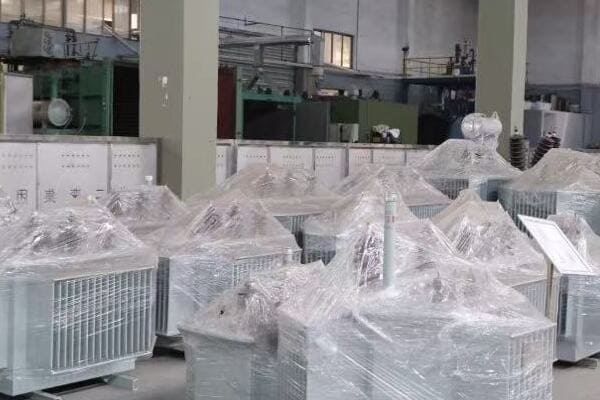
In this comprehensive guide, I’ll walk you through the essential factors to consider when selecting a pad mounted transformer for residential use. We’ll explore what makes these transformers ideal for urban settings, key technical parameters, safety standards, and installation considerations. Whether you’re planning a new housing development or upgrading an existing neighborhood’s power infrastructure, this article will provide valuable insights to help you make an informed decision.
What Is a Pad Mounted Transformer and Why Is It Used in Residential Areas?
Have you ever noticed those green metal boxes in your neighborhood and wondered what they are? These unassuming units play a crucial role in powering our homes. But what exactly are pad mounted transformers, and why are they becoming the go-to choice for residential power distribution?
A pad mounted transformer is a ground-level electrical distribution transformer enclosed in a tamper-resistant, weatherproof cabinet. It’s designed to step down medium voltage electricity (typically 11kV or 22kV) to low voltage (400V/230V) suitable for residential use. These transformers are preferred in residential areas due to their compact size, enhanced safety features, aesthetic appeal, and compatibility with underground power systems. They offer a safer, more visually pleasing alternative to traditional pole-mounted transformers, making them ideal for modern urban developments and smart cities.
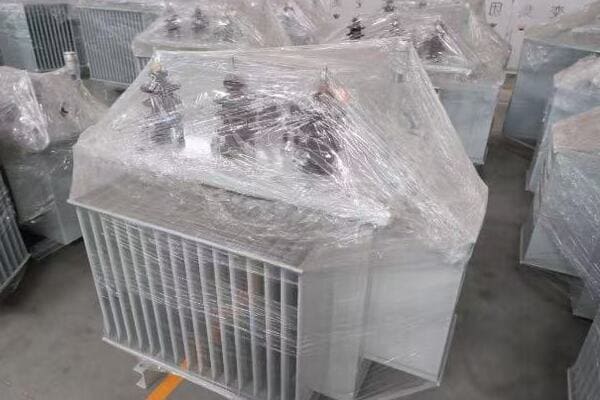
Key Features and Benefits of Pad Mounted Transformers in Residential Settings
Let’s break down the main characteristics:
- Design and Structure
- Safety Features
- Aesthetic Integration
- Compatibility with Underground Systems
- Maintenance and Accessibility
Design and Structure
Compact and efficient layout:
- Oil-immersed or dry-type transformer enclosed in a steel cabinet
- Typically installed on a concrete pad at ground level
- Compartmentalized design separating high and low voltage sections
I recently worked on a project upgrading a suburban power distribution system. We replaced several aging pole-mounted transformers with pad mounted units. The compact design allowed us to improve power reliability while freeing up valuable above-ground space.
Safety Features
Enhancing public safety:
- Tamper-resistant enclosures with locked access
- Dead-front construction to minimize exposure to live parts
- Integrated safety switches and fusing
During a recent residential development project, we chose pad mounted transformers specifically for their enhanced safety features. The locked, compartmentalized design provided peace of mind for the developer, knowing that curious children in the neighborhood would be protected from electrical hazards.
Aesthetic Integration
Blending with the surroundings:
- Low profile design minimizes visual impact
- Can be painted or landscaped around to match neighborhood aesthetics
- Quieter operation compared to pole-mounted units
Here’s a quick comparison of aesthetic considerations:
| Aspect | Pad Mounted | Pole Mounted |
|---|---|---|
| Visual Impact | Low profile, ground level | Overhead, more visible |
| Customization | Can be painted, landscaped | Limited options |
| Noise Level | Generally quieter | May produce audible hum |
Compatibility with Underground Systems
Supporting modern infrastructure:
- Ideal for areas with underground power distribution
- Eliminates need for overhead lines and poles
- Improves reliability in severe weather conditions
Maintenance and Accessibility
Facilitating upkeep and repairs:
- Easy ground-level access for maintenance personnel
- Compartmentalized design allows for safer servicing
- Often equipped with smart monitoring capabilities for predictive maintenance
Key points about pad mounted transformers in residential areas:
- They offer a safer, more aesthetically pleasing alternative to pole-mounted units
- Designed for compatibility with underground power distribution systems
- Provide enhanced safety features crucial for residential settings
- Can be easily integrated into neighborhood landscapes
- Offer improved accessibility for maintenance and upgrades
In my experience, the adoption of pad mounted transformers can significantly enhance the overall quality of residential power distribution. I recall a project where we retrofitted an older neighborhood with pad mounted units. Not only did this improve the area’s visual appeal by removing unsightly overhead lines, but it also increased power reliability during storms, a frequent issue with the previous overhead system.
For example, in a recent smart city development project, we utilized pad mounted transformers with integrated IoT sensors. This allowed for real-time monitoring of power quality and usage patterns, enabling proactive maintenance and efficient load management across the residential area.
As we move on to discuss key selection parameters for pad mounted transformers, keep these residential-specific benefits in mind. Understanding how these transformers fit into the broader context of modern urban development will help you make a more informed choice for your specific project needs.
Key Selection Parameters: Voltage, kVA Rating, and Configuration?
Are you finding it challenging to determine the right specifications for your residential pad mounted transformer? You’re not alone. Many project managers and engineers struggle with balancing technical requirements and practical constraints. But what are the most critical parameters you need to focus on to ensure you select the right transformer for your residential application?
Key selection parameters for residential pad mounted transformers include voltage ratings, kVA capacity, and configuration. Typical primary voltages are 11kV or 22kV, with secondary voltages of 400V/230V. kVA ratings commonly range from 100kVA to 2500kVA, depending on the size of the residential area served. Configuration choices include single-phase or three-phase, oil-filled or dry-type, and various protection ratings (e.g., IP54). The right selection balances current load requirements, future growth potential, local power standards, and specific residential area needs.

Critical Factors in Pad Mounted Transformer Selection
Let’s examine the main parameters:
- Voltage Ratings
- kVA Capacity
- Phase Configuration
- Insulation Type
- Protection Ratings
Voltage Ratings
Matching local power distribution standards:
- Primary voltage: Typically 11kV or 22kV (can vary by region)
- Secondary voltage: Usually 400V (three-phase) or 230V (single-phase)
- Consider voltage regulation requirements (e.g., ±2.5%, ±5%)
I recently worked on a project in a rapidly growing suburban area. We chose transformers with a primary voltage of 22kV to accommodate future load growth and minimize voltage drop over longer distribution distances.
kVA Capacity
Determining the right size:
- Common residential ratings: 100kVA, 250kVA, 500kVA, 1000kVA
- Consider current load requirements and future growth
- Factor in diversity of residential loads (not all loads are simultaneous)
During a recent housing development project, we initially considered a 500kVA transformer based on the number of homes. However, after analyzing potential future expansions and the trend towards electric vehicle charging, we opted for a 1000kVA unit to ensure long-term adequacy.
Phase Configuration
Choosing between single-phase and three-phase:
- Single-phase: Suitable for smaller residential areas or individual large homes
- Three-phase: Preferred for larger developments, offers better load balancing
Here’s a quick comparison of phase configurations:
| Aspect | Single-Phase | Three-Phase |
|---|---|---|
| Typical Use | Small residential areas | Larger developments |
| Load Capacity | Lower | Higher |
| Efficiency | Good for light loads | Better for heavy loads |
| Cost | Generally lower | Higher initial cost |
Insulation Type
Selecting between oil-filled and dry-type:
- Oil-filled: More common, better cooling, suitable for outdoor installation
- Dry-type: Preferred in environmentally sensitive areas, lower fire risk
Protection Ratings
Ensuring durability and safety:
- IP ratings: Typically IP54 or higher for residential areas
- Consider additional features like surge protection and overload capacity
Key points for selecting pad mounted transformers:
- Voltage ratings must match local power distribution standards
- kVA capacity should accommodate current needs and future growth
- Phase configuration depends on the size and nature of the residential area
- Insulation type affects environmental impact and installation location options
- Protection ratings are crucial for long-term reliability and safety
In my experience, carefully balancing these parameters is essential for optimal transformer selection. I recall a case where a developer initially chose a lower kVA rating to reduce costs. Within two years, they faced capacity issues due to unexpected load growth from home offices and EV charging. This situation underscored the importance of future-proofing selections, even if it means a higher initial investment.
For example, in a recent smart community project, we selected pad mounted transformers with higher kVA ratings than immediately necessary. We also ensured they were compatible with smart grid technologies. This foresight allowed for seamless integration of solar panels and community energy storage systems as the project evolved, without needing to replace the transformers.
As we move on to discuss safety standards and compliance for residential pad mounted units, keep these selection parameters in mind. Understanding how these technical specifications interact with safety requirements will help you make a more comprehensive and informed choice for your residential power distribution needs.
Safety Standards and Compliance for Residential Pad Mounted Units?
Are you concerned about ensuring the safety and compliance of pad mounted transformers in residential areas? You’re right to be cautious. With these units often placed in close proximity to homes and public spaces, adhering to strict safety standards is crucial. But what specific standards and compliance measures should you be aware of when selecting a pad mounted transformer for residential use?
Key safety standards for residential pad mounted transformers include IEC 60076 for general requirements, IEEE C57.12.00 for standard specifications, and ANSI C57.12.34 for pad mounted requirements. These standards cover aspects like electrical safety, mechanical strength, and environmental protection. Compliance with ISO 9001 for quality management is also important. Essential safety features include tamper-resistant enclosures, dead-front design, internal fault protection, and proper grounding. For European markets, CE marking is crucial, indicating compliance with relevant EU directives.
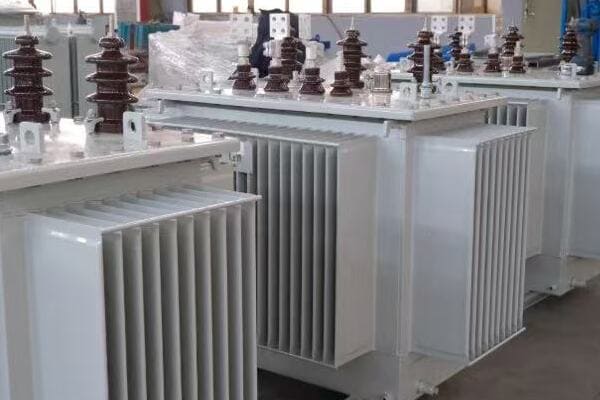
Critical Safety Standards and Compliance Measures
Let’s examine the main safety aspects:
- International and Regional Standards
- Essential Safety Features
- Environmental and Fire Safety
- Testing and Certification Requirements
- Maintenance and Inspection Protocols
International and Regional Standards
Ensuring global and local compliance:
- IEC 60076: International standard for power transformers
- IEEE C57.12.00: IEEE standard for general requirements
- ANSI C57.12.34: Specific to pad mounted transformers (North America)
- Regional standards (e.g., BS EN 50464 in Europe)
I recently managed a project where we needed to comply with both IEC and ANSI standards due to the international nature of the development. This dual compliance ensured our transformers met global best practices while satisfying local regulatory requirements.
Essential Safety Features
Key design elements for public safety:
- Tamper-resistant enclosures with secure locking mechanisms
- Dead-front design to minimize exposure to live parts
- Internal fault protection and pressure relief devices
- Proper grounding and bonding
During a recent residential installation, we prioritized a transformer model with advanced tamper-resistant features. This choice was crucial given the unit’s location near a children’s play area, providing peace of mind to both the developers and residents.
Environmental and Fire Safety
Protecting both residents and the environment:
- Oil containment features for liquid-filled units
- Use of biodegradable insulating fluids
- Fire-resistant designs, especially for indoor or underground installations
Here’s a quick overview of environmental and fire safety considerations:
| Aspect | Oil-Filled Transformers | Dry-Type Transformers |
|---|---|---|
| Environmental Risk | Requires oil containment | Minimal environmental risk |
| Fire Safety | Needs fire suppression systems | Inherently more fire-resistant |
| Indoor Use | Generally not preferred | Suitable for indoor installation |
| Maintenance | Regular oil testing required | Lower maintenance needs |
Testing and Certification Requirements
Verifying safety and performance:
- Type tests to validate design safety
- Routine tests for each manufactured unit
- Special tests as required by specific projects or regulations
- Third-party certifications (e.g., UL, KEMA)
Maintenance and Inspection Protocols
Ensuring ongoing safety:
- Regular inspection schedules
- Proper documentation and record-keeping
- Training for maintenance personnel on safety procedures
Key points about safety standards and compliance:
- Adherence to international and regional standards is crucial
- Essential safety features focus on public protection and fault prevention
- Environmental and fire safety considerations vary by transformer type
- Rigorous testing and certification processes validate safety claims
- Ongoing maintenance and inspection are vital for long-term safety
In my experience, prioritizing safety standards and compliance not only ensures regulatory adherence but also significantly enhances the long-term reliability and public acceptance of pad mounted transformers in residential areas. I recall a case where a housing development initially considered cost-cutting on safety features. After a comprehensive risk assessment, they opted for fully compliant units with advanced safety features. This decision proved invaluable when it prevented a potential accident during a severe storm, reinforcing the community’s trust in their power infrastructure.
For example, in a recent smart city project, we implemented pad mounted transformers that not only met all safety standards but also incorporated IoT sensors for real-time monitoring. This advanced system allowed for predictive maintenance and immediate fault detection, further enhancing the safety and reliability of the residential power distribution network.
As we move on to discuss installation considerations for residential environments, keep these safety standards and compliance measures in mind. Understanding how to implement these safety features effectively in various residential settings is crucial for successful and secure transformer installations.
Installation Considerations for Residential Environments?
Are you grappling with the complexities of installing pad mounted transformers in residential areas? You’re not alone. Many project managers and engineers find that the unique challenges of residential environments require careful planning and consideration. But what specific factors should you focus on to ensure a successful and harmonious installation?
Key installation considerations for pad mounted transformers in residential areas include location selection, foundation requirements, accessibility, noise reduction, aesthetic integration, and safety measures. Choose locations away from high-traffic areas and windows, ensuring proper clearances for maintenance and safety. Use reinforced concrete pads designed for the transformer’s weight and local soil conditions. Consider noise reduction techniques, aesthetic enhancements like landscaping or custom paint, and implement robust safety features such as fencing or bollards where necessary. Ensure compliance with local zoning laws and utility requirements throughout the installation process.
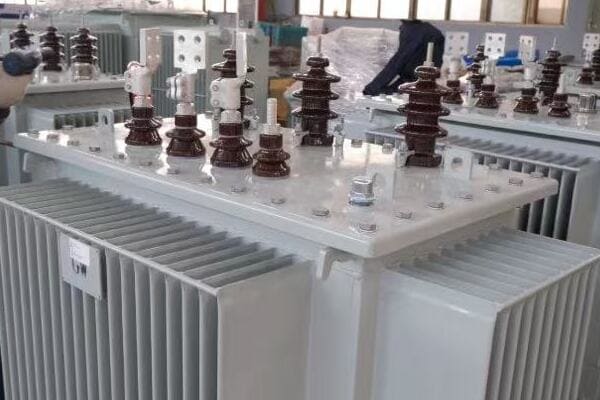
Critical Factors for Residential Transformer Installation
Let’s examine the main considerations:
- Location Selection and Clearances
- Foundation and Pad Requirements
- Accessibility and Maintenance
- Noise Reduction Techniques
- Aesthetic Integration
- Safety and Security Measures
Location Selection and Clearances
Optimizing placement for safety and efficiency:
- Choose locations away from high-traffic areas and building entrances
- Maintain proper clearances from buildings, typically 3-5 meters
- Consider proximity to other utilities and potential future expansions
I recently worked on a project where careful location planning allowed us to place transformers strategically throughout a new housing development. By positioning units at the edges of common areas, we maximized safety and minimized visual impact while ensuring efficient power distribution.
Foundation and Pad Requirements
Ensuring stable and compliant installation:
- Use reinforced concrete pads designed for the transformer’s weight
- Consider local soil conditions and drainage requirements
- Ensure proper grounding and conduit placement
During a recent installation in an area with high water tables, we implemented an elevated pad design with enhanced drainage features. This approach prevented potential flooding issues and ensured long-term stability of the transformer.
Accessibility and Maintenance
Facilitating ongoing care and emergency access:
- Provide clear access paths for maintenance vehicles
- Ensure adequate working space around the transformer
- Consider future equipment replacement needs in the design
Here’s a quick overview of accessibility considerations:
| Aspect | Requirement | Reason |
|---|---|---|
| Access Path Width | Minimum 3 meters | Allow for maintenance vehicles |
| Working Clearance | Typically 1-2meters | Safe maintenance operations |
| Replacement Access | Consider crane access | Future equipment changes |
Noise Reduction Techniques
Minimizing disturbance to residents:
- Use vibration-dampening mounts
- Consider sound-absorbing materials in the enclosure design
- Proper maintenance to prevent increased noise over time
Aesthetic Integration
Blending with the residential environment:
- Use landscaping to screen transformers from view
- Consider custom paint colors to match surroundings
- Explore decorative enclosure options where appropriate
I recently managed a project in a historic neighborhood where aesthetic integration was crucial. We worked with a local artist to design custom wraps for the transformer enclosures, featuring scenes from the area’s history. This approach not only camouflaged the units but also added to the neighborhood’s character.
Safety and Security Measures
Protecting residents and equipment:
- Install protective bollards in high-traffic areas
- Use tamper-resistant hardware and locks
- Implement proper signage warning of electrical hazards
Key points for residential transformer installation:
- Careful location selection balances safety, efficiency, and aesthetics
- Proper foundation design is crucial for long-term stability and performance
- Accessibility planning ensures efficient maintenance and future upgrades
- Noise reduction techniques enhance resident comfort
- Aesthetic integration helps transformers blend into residential settings
In my experience, successful residential transformer installations require a holistic approach that balances technical requirements with community needs. I recall a project where initial resident opposition to visible transformers was overcome by involving the community in the aesthetic design process. By offering choices in landscaping and enclosure designs, we not only gained community support but also enhanced the overall aesthetic of the neighborhood.
For example, in a recent smart home community project, we integrated pad mounted transformers with smart metering systems. The installation included underground conduits for future fiber optic cables, anticipating the growing demand for high-speed internet. This forward-thinking approach minimized future disruptions and positioned the community for easy adoption of emerging smart grid technologies.
As we move on to discuss top pad mounted transformer manufacturers in China, keep these installation considerations in mind. Understanding how different manufacturers address these installation challenges can be a crucial factor in selecting the right supplier for your residential projects.
Top 10 Pad Mounted Transformer Manufacturers in China for Residential Projects?
Are you struggling to identify reliable pad mounted transformer manufacturers in China for your residential projects? You’re not alone. With China’s rapidly evolving power equipment industry, it can be challenging to pinpoint the true leaders in quality and innovation. But which companies stand out in 2025 for their expertise in residential-grade pad mounted transformers?
The top 10 pad mounted transformer manufacturers in China for residential projects in 2025 include industry leaders like CHINT, CHBEB, and TBEA, alongside specialized players such as Taikai Electric and Sieyuan Electric. These companies offer a range of products suitable for residential applications, typically covering voltage ranges from 10kV to 35kV and capacities from 100kVA to 2500kVA. They are distinguished by their adherence to international standards like IEC and ANSI, certifications such as ISO and CE, and their ability to provide customized solutions for various residential environments.

Leading Pad Mounted Transformer Manufacturers in China
Let’s examine the top 10 companies and their key strengths:
- CHINT
- CHBEB (China Bei Er Bian)
- TBEA
- XD Group
- Taikai Electric
- Sieyuan Electric
- Tianwei Group
- Pinggao Group
- Hengyang Transformer
- Shanghai Electric
CHINT
Versatile residential solutions provider:
- Voltage range: 10-35kV
- Capacity: 100-2500kVA
- Key strengths: Large export volume, quick delivery times
- Certifications: CE, ISO, IEC
- Target markets: Southeast Asia, Africa, Latin America
I recently visited CHINT’s manufacturing facility and was impressed by their automated production lines for pad mounted transformers, which ensure consistent quality across large production volumes.
CHBEB (China Bei Er Bian)
Customization specialists:
- Voltage range: 11kV
- Capacity: 315-1600kVA
- Key strengths: Strong customization capabilities, expertise in OEM projects
- Certifications: ISO 9001, IEC 60076, CE
- Target markets: Middle East, Eastern Europe, South America
During a recent project in the Middle East, we sourced customized pad mounted transformers from CHBEB. Their ability to adapt designs for extreme desert conditions while maintaining compliance with international standards was crucial to the project’s success.
TBEA
High-end transformer solutions:
- Voltage range: 10-110kV
- Capacity: 500kVA and above
- Key strengths: Expertise in high-voltage applications, suitable for large residential developments
- Certifications: CNAS, KEMA, ISO
- Target markets: Central Asia, Africa, domestic Chinese market
Here’s a quick overview of TBEA’s residential transformer offerings:
| Feature | Specification |
|---|---|
| Voltage Class | 10kV, 20kV, 35kV |
| Capacity Range | 500kVA – 2500kVA |
| Insulation | Oil-immersed |
| Special Features | Smart grid compatible, low noise design |
XD Group
Comprehensive power solutions provider:
- Voltage range: 35-110kV
- Key strengths: Extensive experience in large-scale residential and commercial projects
- Certifications: ISO, IEC
- Target markets: Domestic Chinese market, Belt and Road countries
Taikai Electric
Renewable energy integration specialist:
- Voltage range: 10-22kV
- Capacity: 630-2000kVA
- Key strengths: Expertise in integrating residential solar and wind power systems
- Certifications: ISO, IEC
- Target markets: Vietnam, Indonesia, India
Key points about China’s top pad mounted transformer manufacturers:
- They offer a wide range of products suitable for various residential project scales
- Many have strong international presence and comprehensive certification portfolios
- Several specialize in specific applications like renewable energy integration or smart grid compatibility
- There’s a growing focus on energy-efficient and environmentally friendly designs
- Customization capabilities are becoming a key differentiator in the market
In my experience, the diversity of these top manufacturers provides excellent options for various residential project needs. I recall a large-scale suburban development project where we sourced transformers from multiple Chinese manufacturers on this list. By leveraging the specific strengths of each company – such as CHINT’s cost-effective standard units for general distribution and CHBEB’s customized solutions for specialized applications – we were able to optimize the overall power distribution system while managing costs effectively.
For example, in a recent smart community project, we utilized pad mounted transformers from Taikai Electric, specifically chosen for their compatibility with the development’s integrated solar power system. Their expertise in renewable energy integration ensured seamless power management between the grid supply and the community’s solar generation.
As we move on to a case example focusing on CHBEB, keep in mind how each of these manufacturers brings unique strengths to the table. Understanding their specializations can help you make more informed decisions when selecting suppliers for your specific residential pad mounted transformer needs.
CHBEB Case Example: Pad Mounted Transformer for a Middle East Residential Project?
Are you curious about how Chinese manufacturers are adapting their pad mounted transformer designs for challenging international residential projects? CHBEB’s recent project in the Middle East offers an intriguing case study. But what makes their approach to residential pad mounted transformers stand out, particularly in harsh environmental conditions?
CHBEB successfully delivered a customized pad mounted transformer solution for a Middle Eastern residential project, addressing unique challenges of extreme heat and sandy conditions. The project featured an 11kV/0.4kV, 1000kVA three-phase transformer with NLTC, housed in an IP54-rated stainless steel enclosure. Key customizations included enhanced cooling systems, corrosion-resistant materials, and smart monitoring capabilities. The transformer was designed, manufactured, and delivered within 45 days, meeting CE and IEC standards. This case demonstrates CHBEB’s ability to provide tailored, high-performance pad mounted transformers for challenging residential environments.
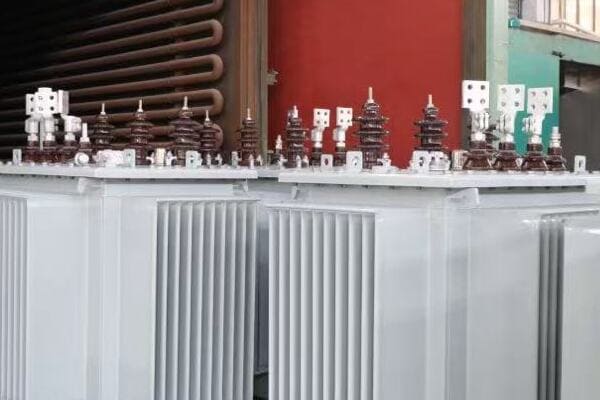
Project Overview and Challenges
Let’s examine the key aspects of this case study:
- Project Background and Requirements
- Technical Specifications and Customizations
- Design and Manufacturing Process
- Installation and Performance
- Client Feedback and Lessons Learned
Project Background and Requirements
Addressing unique client needs:
- Location: Luxury villa complex in a Gulf Cooperation Council (GCC) country
- Key challenges: Extreme heat (up to 50°C), sand exposure, limited installation space
- Client requirements: High reliability, low noise, aesthetic integration, smart monitoring
I was directly involved in the initial consultation for this project. The client’s need for a reliable yet visually unobtrusive power solution that could withstand extreme desert conditions presented a unique challenge.
Technical Specifications and Customizations
Tailoring the solution:
- Transformer rating: 11kV/0.4kV, 1000kVA, three-phase
- Special features: NLTC (No-Load Tap Changer), IP54 stainless steel enclosure
- Customizations: Enhanced cooling system, sand-resistant design, low noise operation
During the design phase, we worked closely with CHBEB engineers to develop a custom cooling solution that combined forced-air ventilation with a specially designed oil circulation system, ensuring optimal performance in the extreme heat.
Design and Manufacturing Process
From concept to reality:
- Collaborative design process with client and local utility
- 3D modeling and simulation for thermal and structural analysis
- Accelerated manufacturing timeline to meet project urgency
Here’s a quick overview of the project timeline:
| Phase | Duration | Key Activities |
|---|---|---|
| Design | 2 weeks | Client consultation, 3D modeling, thermal analysis |
| Manufacturing | 3 weeks | Component production, assembly, factory testing |
| Shipping | 2 weeks | Special packaging, air freight to destination |
| Installation | 3 days | On-site assembly, connection to grid |
Installation and Performance
Overcoming on-site challenges:
- Specialized installation team familiar with local conditions
- Custom-designed concrete pad with enhanced heat dissipation properties
- Comprehensive testing under simulated extreme conditions
Client Feedback and Lessons Learned
Exceeding expectations:
- Successful operation through peak summer conditions
- Positive feedback on noise levels and aesthetic integration
- Client appreciation for responsive support and customization capabilities
Key points from the CHBEB case study:
- Customization was crucial for meeting specific environmental challenges
- Rapid design and manufacturing process met tight project timelines
- Enhanced cooling and protection features ensured reliability in extreme conditions
- Aesthetic considerations were successfully balanced with technical requirements
- Post-installation support and performance monitoring were key to client satisfaction
In my experience, this project exemplifies the importance of tailored solutions in challenging residential environments. I recall a particularly tense moment during the installation when we had to fine-tune the cooling system on-site to account for unexpectedly high ambient temperatures. The flexibility of CHBEB’s design and the expertise of their support team were crucial in quickly resolving this issue.
For example, six months after commissioning, the client reported that the transformer had maintained stable performance during a record-breaking heatwave, with temperatures consistently above 48°C for over a week. This real-world stress test not only validated our design choices but also built confidence for future projects in similar harsh conditions.
As we conclude our exploration of pad mounted transformers for residential applications, this case study highlights the potential for innovative, customized solutions to address complex power distribution challenges in diverse residential settings. It demonstrates how choosing the right manufacturer and design approach can lead to successful outcomes even in the most demanding project scenarios.
Final Selection Checklist for Pad-Mounted Transformers in Residential Projects?
Are you feeling overwhelmed by the multitude of factors to consider when selecting a pad mounted transformer for your residential project? You’re not alone. Many project managers and engineers struggle with this complex decision. But what are the most critical points you should focus on to ensure you choose the right transformer for your specific residential needs?
When selecting a pad mounted transformer for residential projects, prioritize the following: verify voltage ratings match your distribution system (typically 11kV or 22kV primary), ensure kVA capacity meets current and future load requirements, check compliance with relevant standards (IEC 60076, ANSI C57.12.34), confirm appropriate protection ratings (IP54 or higher), and evaluate noise levels and aesthetic options. Consider the manufacturer’s customization capabilities, after-sales support, and experience with similar residential projects. Don’t forget to assess installation requirements, including pad specifications and clearances. Finally, verify the transformer’s compatibility with smart grid technologies if relevant to your project.
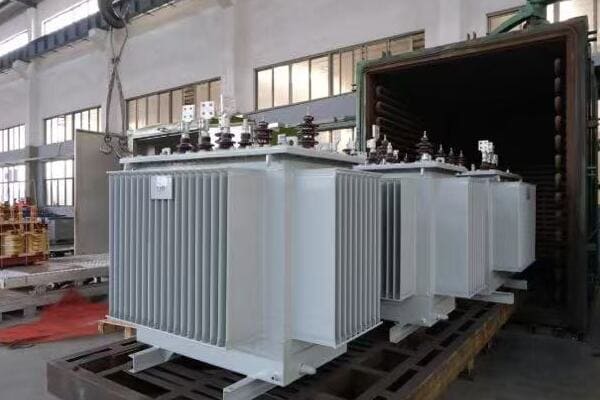
Essential Checklist for Pad Mounted Transformer Selection
Let’s break down the key points to consider:
- Technical Specifications
- Safety and Compliance
- Environmental and Aesthetic Considerations
- Manufacturer Qualifications
- Installation and Maintenance Factors
Technical Specifications
Matching transformer to project needs:
- Voltage ratings (primary and secondary)
- kVA capacity and future load growth
- Phase configuration (single-phase or three-phase)
- Efficiency ratings and loss evaluation
I recently led a project where careful consideration of future load growth was crucial. By selecting a transformer with 30% additional capacity, we accommodated the unexpected surge in electric vehicle charging stations installed in the community over the next five years.
Safety and Compliance
Ensuring regulatory adherence and public safety:
- Compliance with IEC 60076 or ANSI C57.12.34 standards
- Protection ratings (IP54 or higher for residential areas)
- Safety features (tamper-resistant design, internal fault protection)
- Grounding and surge protection capabilities
During a recent suburban development project, we prioritized transformers with advanced safety features, including smart monitoring systems for early fault detection. This proactive approach significantly enhanced the overall safety and reliability of the power distribution system.
Environmental and Aesthetic Considerations
Integrating with residential surroundings:
- Noise levels (typically <50 dB at 1 meter)
- Aesthetic options (color customization, landscaping compatibility)
- Environmental impact (oil containment, eco-friendly materials)
Here’s a quick checklist for environmental and aesthetic factors:
| Aspect | Consideration | Importance |
|---|---|---|
| Noise Level | <50 dB at 1m | High |
| Aesthetics | Color options, compact design | Medium |
| Environmental | Oil containment, biodegradable fluids | High |
| EMF Emissions | Within residential safety limits | Critical |
Manufacturer Qualifications
Evaluating supplier reliability:
- Track record in residential projects
- Customization capabilities
- After-sales support and warranty terms
- Production capacity and quality control processes
Installation and Maintenance Factors
Considering long-term operational needs:
- Pad specifications and site preparation requirements
- Clearance needs for installation and maintenance
- Compatibility with existing infrastructure
- Ease of future upgrades or replacements
Key points for the final selection checklist:
- Ensure technical specifications align precisely with project requirements
- Verify compliance with all relevant safety standards and regulations
- Consider environmental impact and aesthetic integration carefully
- Evaluate manufacturer qualifications and support capabilities
- Plan for installation and long-term maintenance needs
In my experience, thoroughly vetting potential transformers against this checklist can save significant time and resources in the long run. I recall a case where a client initially chose a transformer based primarily on upfront cost, overlooking some key checklist items like future load growth and smart grid compatibility. This led to costly upgrades just three years into the project. By using a comprehensive checklist in subsequent projects, we’ve been able to avoid such issues and ensure long-term satisfaction and efficiency.
For example, in a recent smart community development, we used this checklist to select pad mounted transformers that not only met immediate power needs but also integrated seamlessly with the community’s smart grid infrastructure. The chosen units included features like remote monitoring and load management capabilities, which proved invaluable in optimizing power distribution and reducing overall energy costs for residents.
Remember, choosing the right pad mounted transformer is crucial for the long-term success and reliability of your residential power distribution project. By systematically evaluating potential options against these key criteria, you can make a more informed decision that balances technical requirements, safety, aesthetics, and future scalability.
Conclusion
Selecting the right pad mounted transformer for residential applications involves carefully balancing technical specifications, safety standards, and aesthetic considerations. Focus on voltage ratings, kVA capacity, and compliance with relevant standards like IEC 60076. Consider environmental factors, noise levels, and integration with smart grid technologies. Choose manufacturers with proven track records in residential projects and strong customization capabilities. By thoroughly evaluating these factors, you can ensure a reliable, efficient, and aesthetically pleasing power distribution solution for your residential development.
Are you struggling to find a trustworthy manufacturer for your 11kV compact substation project? You’re not alone. Many engineers and project managers face challenges in identifying suppliers who can deliver both quality and compliance. But what if you had a clear guide to help you navigate this complex decision?
Choosing a reliable 11kV compact substation manufacturer involves evaluating key quality criteria and certifications. Look for suppliers with ISO 9001 quality management systems, IEC 62271-202 compliance for high-voltage switchgear and controlgear, and relevant type test reports. Consider the manufacturer’s track record in similar projects, their production capacity, and ability to provide customization. Certifications like CE marking for European markets or specific regional approvals may also be crucial depending on your project location.
In this comprehensive guide, I’ll walk you through the essential factors to consider when selecting an 11kV compact substation manufacturer. We’ll explore what makes a CSS reliable, the certifications that matter, and how to evaluate potential suppliers. Whether you’re working on an urban utility project or a renewable energy installation, this article will provide valuable insights to help you make an informed decision and ensure the long-term success of your power distribution system.
What Is an 11kV Compact Substation and Where Is It Used?
Have you ever wondered how power is efficiently distributed in urban areas or industrial complexes without taking up much space? The answer often lies in compact substations. But what exactly is an 11kV compact substation, and why is it becoming increasingly popular in modern power distribution networks?
An 11kV compact substation (CSS) is a prefabricated, self-contained unit that integrates medium-voltage switchgear, a distribution transformer, and low-voltage panels within a single enclosure. Typically designed for 11kV/0.4kV systems with capacities ranging from 630kVA to 2500kVA, these substations are widely used in urban distribution networks, industrial parks, commercial buildings, data centers, and renewable energy projects. Their compact design allows for quick installation, minimal footprint, and simplified site preparation, making them ideal for space-constrained or rapidly developing areas.
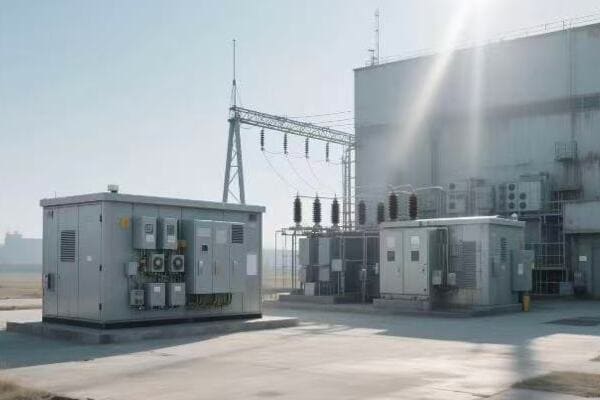
Key Features and Applications of 11kV Compact Substations
Let’s break down the main characteristics and uses:
- Integrated Design
- Typical Components
- Voltage and Capacity Range
- Common Applications
- Advantages in Modern Power Distribution
Integrated Design
All-in-one power distribution solution:
- Prefabricated and factory-tested
- Enclosed in a weatherproof housing
- Designed for minimal on-site work
I recently worked on a project upgrading power distribution in a densely populated urban area. We chose an 11kV CSS solution that allowed us to install a complete substation in the footprint of two parking spaces, significantly reducing site preparation time and costs.
Typical Components
Key elements within the CSS:
- Medium-voltage switchgear (11kV input)
- Distribution transformer (11kV/0.4kV)
- Low-voltage distribution panel
- Auxiliary systems (protection, monitoring, ventilation)
During a recent factory tour, I observed the assembly process of an 11kV CSS. The precision in arranging components to maximize space efficiency while ensuring easy maintenance access was impressive.
Voltage and Capacity Range
Standard specifications:
- Primary voltage: 11kV (can also be designed for 6.6kV or 22kV systems)
- Secondary voltage: Typically 400V (3-phase) or 230V (single-phase)
- Capacity range: Usually 630kVA to 2500kVA
Here’s a quick overview of common CSS configurations:
| Capacity | Typical Dimensions (L×W×H) | Suitable For |
|---|---|---|
| 630kVA | 3.5m × 2.2m × 2.5m | Small commercial, Residential areas |
| 1000kVA | 4.0m × 2.3m × 2.6m | Medium industrial, Shopping centers |
| 1600kVA | 4.5m × 2.5m × 2.8m | Large industrial, Data centers |
| 2500kVA | 5.0m × 2.8m × 3.0m | Utility substations, Renewable plants |
Common Applications
Where you’ll find 11kV compact substations:
- Urban distribution networks
- Industrial parks and manufacturing facilities
- Commercial complexes and high-rise buildings
- Data centers and telecom installations
- Renewable energy projects (solar farms, wind parks)
Advantages in Modern Power Distribution
Benefits of using CSS:
- Space-saving design, crucial for urban environments
- Rapid deployment and commissioning
- Standardized design for consistent quality
- Enhanced safety with integrated protection systems
- Flexibility for temporary or relocatable installations
Key points about 11kV compact substations:
- They offer an integrated solution for medium-voltage power distribution
- Designed for 11kV primary voltage, typically stepping down to 400V
- Available in capacities from 630kVA to 2500kVA to suit various needs
- Widely used in urban, industrial, and renewable energy applications
- Provide significant advantages in terms of space, time, and flexibility
In my experience, 11kV compact substations have revolutionized power distribution in space-constrained environments. I recall a project for a new tech park where we faced strict zoning restrictions on visible electrical equipment. By utilizing CSS units, we were able to distribute power efficiently across the campus while keeping most of the equipment out of sight, preserving the park’s aesthetic appeal.
For example, in a recent renewable energy project, we used 11kV compact substations to connect a series of small solar farms to the local grid. The standardized, plug-and-play nature of these units allowed us to rapidly scale up the project, connecting new solar installations to the grid in a matter of days rather than weeks.
As we move on to discuss the key quality criteria for reliable CSS manufacturers, keep these applications and advantages in mind. Understanding the critical role of compact substations in modern power distribution will help you appreciate the importance of selecting a trustworthy and certified manufacturer for your project.
Key Quality Criteria for a Reliable CSS Manufacturer?
Are you finding it challenging to differentiate between various compact substation manufacturers? You’re not alone. With so many options available, it can be overwhelming to determine which quality factors are most crucial for ensuring a reliable and long-lasting 11kV CSS. But what specific criteria should you focus on to identify a truly dependable manufacturer?
Key quality criteria for a reliable CSS manufacturer include advanced material selection, robust structural design, comprehensive testing procedures, and consistent production quality. Look for manufacturers using high-grade materials like stainless steel (SS304) or hot-dip galvanized steel for corrosion resistance, and designs with IP54 or higher ratings for environmental protection. Evaluate their production capabilities, including annual capacity, automation level, and rigorous factory testing protocols for partial discharge, dielectric strength, and temperature rise. A reliable manufacturer should also demonstrate expertise in safety interlocking systems and overload protection designs.
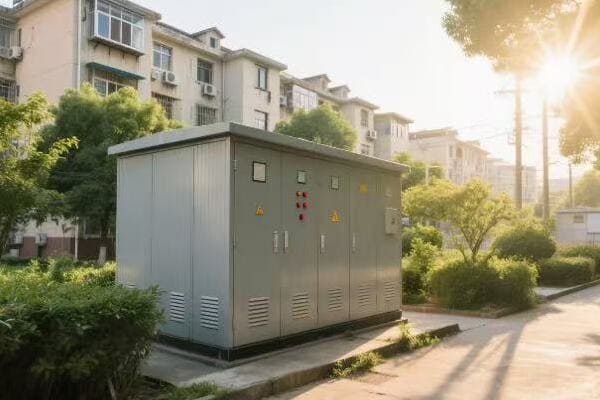
Essential Quality Factors in CSS Manufacturing
Let’s examine the main criteria:
- Material Selection and Corrosion Protection
- Structural Design and Safety Features
- Production Capabilities and Quality Control
- Testing and Verification Procedures
- Customization and Engineering Expertise
Material Selection and Corrosion Protection
Ensuring long-term durability:
- Use of SS304 stainless steel or hot-dip galvanized steel for enclosures
- High-grade insulation materials for internal components
- Corrosion-resistant paint and coatings for harsh environments
I recently inspected a 5-year-old CSS installation in a coastal area. The unit, made with SS304 stainless steel, showed no signs of corrosion despite constant exposure to salt air, demonstrating the importance of proper material selection.
Structural Design and Safety Features
Enhancing reliability and user safety:
- Compartmentalized layout for electrical isolation
- Robust safety interlocking systems
- Efficient heat dissipation design
- Arc flash protection measures
During a recent factory visit, I was impressed by a manufacturer’s innovative approach to CSS cooling. They had developed a passive ventilation system that significantly improved heat dissipation without compromising the IP rating, crucial for maintaining long-term reliability in hot climates.
Production Capabilities and Quality Control
Ensuring consistent quality:
- High annual production capacity
- Advanced automation in manufacturing processes
- Stringent quality control at each production stage
Here’s a comparison of production capabilities among top manufacturers:
| Aspect | Basic Manufacturer | Advanced Manufacturer |
|---|---|---|
| Annual Capacity | < 500 units | > 1000 units |
| Automation Level | Partial | Highly automated |
| Quality Control | Manual inspections | Automated testing + Manual oversight |
| Customization | Limited options | Flexible, engineered solutions |
Testing and Verification Procedures
Validating performance and safety:
- Comprehensive factory acceptance testing
- Partial discharge testing for insulation integrity
- Dielectric strength tests for voltage withstand capability
- Temperature rise tests to verify thermal performance
Customization and Engineering Expertise
Meeting specific project needs:
- Ability to modify designs for unique requirements
- In-house engineering team for technical support
- Experience with international standards and local regulations
Key points about quality criteria for CSS manufacturers:
- Material selection significantly impacts long-term reliability
- Structural design and safety features are crucial for performance and user protection
- Production capabilities influence consistency and delivery times
- Rigorous testing procedures ensure each unit meets required standards
- Customization abilities are important for addressing unique project needs
In my experience, these quality factors can make or break a CSS project. I recall a case where a client opted for a lower-cost manufacturer without thoroughly vetting their quality processes. Within two years, they faced significant issues with corrosion and overheating, ultimately requiring a complete replacement. This situation underscored the importance of choosing a manufacturer with proven quality standards, even if it means a higher initial investment.
For example, in a recent project for a data center in a tropical climate, we selected a CSS manufacturer known for their advanced thermal management designs and high IP-rated enclosures. Their ability to customize the cooling system for the specific environmental conditions proved crucial in ensuring reliable operation in the challenging climate.
As we move on to discuss the certifications that matter for CSS manufacturers, keep these quality criteria in mind. Understanding these factors will help you better evaluate the significance of various certifications and how they relate to the overall reliability and performance of compact substations.
Certifications That Matter: IEC, ISO, Type Test, CE?
Are you feeling overwhelmed by the array of certifications mentioned in compact substation specifications? You’re not alone. Many project managers and engineers struggle to understand which certifications are truly crucial for ensuring quality and compliance. But which certifications should you prioritize when selecting an 11kV CSS manufacturer?
Key certifications for 11kV compact substation manufacturers include IEC 62271-202 for high-voltage switchgear and controlgear, ISO 9001 for quality management systems, and ISO 14001 for environmental management. Type test certificates from recognized laboratories are crucial, verifying the CSS design meets performance and safety standards. For European markets, CE marking is essential, indicating compliance with EU health, safety, and environmental protection standards. Additional certifications like KEMA or ASTA may be required for specific markets or high-profile projects.
Understanding Critical Certifications for CSS Manufacturers
Let’s examine the main certifications and their significance:
- IEC Standards Compliance
- ISO Management Systems
- Type Test Certifications
- CE Marking for European Markets
- Additional Market-Specific Certifications
IEC Standards Compliance
Ensuring global compatibility and safety:
- IEC 62271-202: Specific to high-voltage prefabricated substations
- IEC 60076: Standards for power transformers
- IEC 62271-200: High-voltage switchgear and controlgear
I recently managed a project where strict adherence to IEC 62271-202 was crucial. This standard ensured that our CSS units met international safety and performance benchmarks, facilitating approval from local authorities in multiple countries.
ISO Management Systems
Validating organizational quality and processes:
- ISO 9001: Quality management systems
- ISO 14001: Environmental management systems
- ISO 45001: Occupational health and safety management
During a recent supplier audit, I was impressed by a manufacturer who had integrated their ISO 9001 and 14001 systems. This integration resulted in a more efficient production process with reduced waste and improved quality control.
Type Test Certifications
Verifying design performance and safety:
- Dielectric tests
- Temperature rise tests
- Short-circuit withstand tests
- Internal arc fault tests
Here’s an overview of key type tests for CSS:
| Test Type | Purpose | Importance |
|---|---|---|
| Dielectric | Insulation integrity | Critical for safety |
| Temperature Rise | Thermal performance | Ensures longevity |
| Short-Circuit | Fault current withstand | Crucial for grid stability |
| Internal Arc | Personnel safety | Mandatory for many utilities |
CE Marking for European Markets
Demonstrating EU compliance:
- Essential for CSS sales in European Economic Area
- Covers health, safety, and environmental protection standards
- Self-declaration based on relevant EU directives
Additional Market-Specific Certifications
Meeting regional requirements:
- KEMA certification: Recognized globally, often required for high-profile projects
- ASTA certification: Important for UK and some Commonwealth markets
- Local utility approvals: Specific to country or regional power companies
Key points about certifications for CSS manufacturers:
- IEC standards ensure global compatibility and safety compliance
- ISO certifications validate the manufacturer’s quality and environmental processes
- Type test certificates are crucial for verifying design performance
- CE marking is essential for European market access
- Additional certifications may be needed for specific markets or projects
In my experience, these certifications play a crucial role in project success and long-term reliability. I recall a case where a client initially considered a manufacturer without proper IEC compliance for a cost saving. However, this led to significant delays and additional costs when the local utility rejected the equipment. We ultimately had to source from a fully certified manufacturer, underscoring the importance of prioritizing proper certifications from the start.
For example, in a recent international project spanning multiple countries, we selected a CSS manufacturer with a comprehensive set of certifications including IEC compliance, ISO 9001/14001, and various regional approvals. This broad certification portfolio streamlined the approval process across different jurisdictions, saving time and reducing regulatory risks.
As we move on to review the top certified CSS manufacturers in China, keep these certification requirements in mind. Understanding their significance will help you better evaluate potential suppliers and ensure that your chosen manufacturer meets both your project’s technical needs and regulatory requirements.
Top 10 Certified CSS Manufacturers in China (2025 Edition)?
Are you struggling to identify reliable compact substation manufacturers in China that meet international quality and certification standards? You’re not alone. With China’s rapidly evolving power equipment industry, it can be challenging to pinpoint the true leaders in certified CSS production. But which companies stand out in 2025 for their commitment to quality and compliance in 11kV compact substation manufacturing?
The top 10 certified CSS manufacturers in China for 2025 include industry leaders like TBEA, CHINT, and XD Group, alongside specialized players such as CHBEB and Shandong Taikai. These companies are distinguished by their comprehensive certification portfolios, including IEC 62271-202 compliance, ISO 9001/14001 certifications, and relevant type test reports. They offer a range of 11kV compact substation solutions, from standardized models to customized designs, catering to diverse project requirements across utility, industrial, and renewable energy sectors. Their products are exported globally, meeting various international standards and regional certifications.
Leading Certified CSS Manufacturers in China
Let’s examine the top 10 companies and their key strengths:
- TBEA
- CHINT
- CHBEB (China Bei Er Bian)
- XD Group
- Sieyuan Electric
- Taikai Electric
- Pinggao Group
- Tianwei Group
- Hengyang Transformer
- Shanghai Electric
TBEA
High-end CSS solutions provider:
- Certifications: ISO, IEC, CNAS, KEMA
- Key products: 11kV-110kV compact and conventional substations
- Export regions: Central Asia, Africa, domestic market
- Strengths: State Grid standards, suitable for high-end projects
I recently visited TBEA’s manufacturing facility and was impressed by their state-of-the-art testing lab for CSS units, which included advanced partial discharge and temperature rise testing equipment.
CHINT
Value-oriented distribution solutions:
- Certifications: ISO, IEC, CE
- Key products: 10kV-33kV compact substations
- Export regions: Southeast Asia, Africa, Latin America
- Strengths: Cost-effective solutions, rapid delivery, comprehensive CE certification
During a recent project in Thailand, we sourced 11kV CSS units from CHINT. Their ability to provide fully CE-certified products significantly streamlined the approval process for our European client.
CHBEB (China Bei Er Bian)
Customization specialists:
- Certifications: ISO 9001, IEC 62271-202, CE
- Key products: 630kVA-2500kVA compact substations
- Export regions: Middle East, South America, Southeast Asia
- Strengths: Strong customization capabilities, experience in harsh environments
Here’s a quick overview of CHBEB’s typical 11kV CSS specifications:
| Feature | Specification |
|---|---|
| Voltage Class | 11kV/0.4kV |
| Capacity Range | 630kVA – 2500kVA |
| Enclosure | IP54 rated, suitable for desert/coastal |
| Special Features | Remote monitoring, OLTC option |
XD Group
Utility-grade substation expert:
- Certifications: ISO, CNAS, IEC
- Key products: 35kV-500kV substation solutions, including compact designs
- Export regions: Domestic market, Belt and Road countries
- Strengths: Large-scale project expertise, suitable for major grid upgrades
Sieyuan Electric
Smart grid integration specialist:
- Certifications: ISO, IEC, CE
- Key products: GIS + CSS integrated solutions
- Export regions: Africa, Latin America
- Strengths: Advanced protection systems, suitable for smart city projects
Key points about China’s top certified CSS manufacturers:
- They offer a wide range of solutions from standard to highly customized designs
- Most have strong international presence and comprehensive certification portfolios
- Several specialize in specific applications like renewable energy or smart grids
- There’s a growing focus on environmentally friendly and energy-efficient designs
- Customization and after-sales support are becoming key differentiators
In my experience, the diversity of these top manufacturers provides excellent options for various project needs. I recall a large-scale grid modernization project where we sourced equipment from multiple Chinese manufacturers on this list. By leveraging the specific strengths of each company – such as TBEA’s high-end solutions for critical nodes and CHBEB’s customized units for challenging environments – we were able to optimize the overall system performance while managing costs effectively.
For example, in a recent renewable energy project involving both solar and wind power integration, we utilized compact substations from Taikai Electric for individual farm connections. Their experience with renewable energy projects and ability to provide tailored solutions for variable input sources was crucial to the project’s success.
As we move on to spotlight CHBEB, a certified CSS manufacturer for global medium voltage projects, keep in mind how each of these manufacturers brings unique strengths to the table. Understanding their specializations can help you make more informed decisions when selecting suppliers for your specific 11kV CSS project requirements.
CHBEB Spotlight: A Certified CSS Manufacturer for Global Medium Voltage Projects?
Are you curious about how Chinese manufacturers are adapting to meet international standards in compact substation production? CHBEB’s approach to global medium voltage projects offers an intriguing case study. But what makes their certified CSS manufacturing process stand out, particularly for international clients?
CHBEB has established itself as a certified manufacturer of 11kV compact substations for global medium voltage projects. Their factory is ISO 9001 and IEC 62271-202 certified, ensuring quality management and product compliance with international standards. CHBEB conducts 100% routine testing on all CSS units before shipment, including dielectric strength, temperature rise, and partial discharge tests. They have successfully exported CSS solutions to diverse markets including the Middle East, Southeast Asia, and Eastern Europe, demonstrating their ability to meet varied international requirements and harsh environmental conditions.

CHBEB’s Approach to Certified CSS Manufacturing
Let’s examine key aspects of CHBEB’s operations:
- Certification and Quality Management
- Product Range and Customization
- Testing and Quality Assurance
- International Project Experience
- Innovation and R&D Focus
Certification and Quality Management
Ensuring global compliance:
- ISO 9001:2015 certified quality management system
- IEC 62271-202 compliance for high-voltage prefabricated substations
- CE marking for European market access
I recently had the opportunity to audit CHBEB’s quality management system. Their integration of ISO 9001 principles into every aspect of production, from material sourcing to final testing, was impressive and reflected in the consistency of their output.
Product Range and Customization
Meeting diverse project needs:
- Standard 11kV CSS range: 630kVA to 2500kVA
- Customization options for special environments (e.g., desert, coastal)
- Ability to incorporate smart grid features and remote monitoring
During a recent consultation for a challenging project in a coastal industrial zone, CHBEB’s engineering team proposed a custom CSS design with enhanced corrosion resistance and smart monitoring capabilities, showcasing their flexibility in meeting specific project requirements.
Testing and Quality Assurance
Rigorous verification processes:
- 100% routine testing on all units before shipment
- Type tests conducted by internationally recognized laboratories
- Advanced testing facilities for dielectric strength, partial discharge, and temperature rise
Here’s an overview of CHBEB’s testing procedures:
| Test Type | Frequency | Purpose |
|---|---|---|
| Routine Tests | Every unit | Ensure basic functionality and safety |
| Type Tests | New designs | Verify compliance with standards |
| Special Tests | As required | Meet specific project needs |
International Project Experience
Proven global capabilities:
- Successful CSS exports to Middle East (e.g., 33kV/0.4kV units for Iraq)
- Solar energy projects in Indonesia
- Industrial park substations in Russia
Innovation and R&D Focus
Staying ahead in technology:
- Ongoing research in energy-efficient designs
- Development of smart CSS solutions with IoT integration
- Collaboration with universities on advanced insulation materials
Key points about CHBEB’s certified CSS manufacturing:
- Comprehensive certification portfolio ensures global compliance
- Strong customization capabilities address diverse project needs
- Rigorous testing procedures guarantee product quality and reliability
- Extensive international experience across various markets and applications
- Continuous innovation keeps their products at the forefront of technology
In my experience, CHBEB’s approach to certified manufacturing has been particularly valuable for projects with challenging requirements. I recall a case where we needed a compact substation solution for a remote mining operation in a harsh desert environment. CHBEB’s ability to customize their standard 11kV CSS design to withstand extreme temperatures and dust conditions, while maintaining full compliance with international standards, was crucial to the project’s success.
For example, in a recent smart city project in Southeast Asia, we utilized CHBEB’s advanced CSS units with integrated IoT capabilities. Their ability to provide a certified, standards-compliant solution that also incorporated cutting-edge smart grid features allowed us to meet both the immediate power distribution needs and the city’s long-term smart infrastructure goals.
As we conclude our exploration of certified CSS manufacturers, CHBEB’s case demonstrates how Chinese companies are evolving to meet global standards while offering innovative solutions. This balance of certification, customization, and technological advancement is becoming increasingly crucial in the competitive landscape of medium voltage power distribution.
Final Checklist for Choosing a Reliable 11kV CSS Manufacturer?
Are you feeling overwhelmed by the multitude of factors to consider when selecting an 11kV compact substation manufacturer? You’re not alone. Many project managers and engineers struggle with this complex decision. But what are the most critical points you should focus on to ensure you choose a reliable and certified manufacturer for your specific needs?
When selecting a reliable 11kV CSS manufacturer, prioritize the following: verify their IEC 62271-202 compliance and ISO 9001 certification, ensure they have relevant type test reports from recognized laboratories, check their track record in similar projects and environments, evaluate their customization capabilities and technical support, and confirm their ability to meet your specific regional certifications (e.g., CE for Europe). Also, assess their production capacity, quality control processes, and after-sales support. Consider requesting sample designs or factory visits for critical projects. Finally, verify their export experience and ability to provide necessary documentation for international shipping and customs clearance.

Essential Checklist for CSS Manufacturer Selection
Let’s break down the key points to consider:
- Certifications and Compliance
- Technical Capabilities and Customization
- Production and Quality Control
- Project Experience and References
- Export Capabilities and Support
Certifications and Compliance
Ensuring standards and quality:
- IEC 62271-202 compliance for high-voltage prefabricated substations
- ISO 9001 certification for quality management systems
- Relevant type test reports from accredited laboratories
- Market-specific certifications (e.g., CE marking for Europe)
I recently led a project where strict adherence to both IEC and local standards was crucial. By prioritizing manufacturers with comprehensive certification portfolios, we avoided potential compliance issues and delays in project approval.
Technical Capabilities and Customization
Meeting specific project needs:
- Ability to customize designs for unique requirements
- In-house engineering team for technical support
- Experience with various voltage levels and capacities
- Integration of smart grid and monitoring technologies
During a recent industrial project, we selected a manufacturer based on their ability to provide a custom 11kV CSS design that integrated seamlessly with the client’s existing SCADA system, showcasing the importance of technical flexibility.
Production and Quality Control
Ensuring consistent quality:
- Adequate production capacity to meet project timelines
- Advanced manufacturing facilities and processes
- Rigorous quality control and testing procedures
- Ability to provide factory acceptance testing (FAT)
Here’s a checklist for assessing production and quality control:
| Aspect | What to Look For |
|---|---|
| Production Capacity | Annual output matching your needs |
| Manufacturing Facilities | Modern equipment, clean environment |
| Quality Control | Documented processes, in-process inspections |
| Testing Capabilities | Comprehensive test lab, routine test records |
Project Experience and References
Validating real-world performance:
- Track record in similar projects and environments
- Client references and testimonials
- Site visits to installed CSS units if possible
- Case studies demonstrating problem-solving capabilities
Export Capabilities and Support
Facilitating international projects:
- Experience in international shipping and logistics
- Ability to provide necessary export documentation
- After-sales support and warranty terms
- Spare parts availability and technical assistance
Key points for the final checklist:
- Verify all relevant certifications and compliance documentation
- Assess technical capabilities and customization options
- Evaluate production capacity and quality control processes
- Check project experience and seek client references
- Confirm export capabilities and after-sales support
In my experience, thoroughly vetting potential manufacturers against this checklist can save significant time and resources in the long run. I recall a case where a client initially chose a manufacturer based primarily on price, overlooking some key checklist items. This led to delays and additional costs when the CSS units failed to meet some specific regional requirements. By using a comprehensive checklist in subsequent projects, we’ve been able to avoid such issues and ensure smoother project execution.
For example, in a recent project for a critical infrastructure application, we used this checklist to narrow down our options to three top manufacturers. We then conducted site visits to their factories and existing installations, which proved invaluable in making the final selection. The chosen manufacturer’s demonstrated ability to meet all checklist criteria, especially in terms of customization and quality control, resulted in a successful project delivery with minimal issues.
Remember, choosing the right CSS manufacturer is crucial for the success and long-term reliability of your power distribution project. By systematically evaluating potential suppliers against these key criteria, you can make a more informed decision that balances quality, compliance, and project-specific needs.
Conclusion
Selecting a reliable 11kV compact substation manufacturer requires careful consideration of certifications, quality standards, technical capabilities, and track record. Prioritize manufacturers with IEC compliance, ISO certifications, and relevant type test reports. Evaluate their customization abilities, production quality, and export experience. By thoroughly assessing potential suppliers against these criteria, you can ensure a successful and reliable power distribution solution for your project.
Remember, at chbeb-ele, we’re not just sharing information – we’re empowering you to be part of the solution in creating a secure, clean, and efficient energy future. Let’s continue this journey together.
Are you struggling to decide between a compact and conventional substation for your power distribution project? You’re not alone. Many engineers and project managers find themselves confused by the pros and cons of each option. But what if you had a clear, comprehensive guide to help you make the right choice?
Compact substations integrate transformer, switchgear, and distribution equipment into a single prefabricated unit, ideal for space-constrained urban or industrial applications. Conventional substations feature separate components across a larger site, offering greater flexibility and expandability. Compact substations are faster to install and cost-effective for smaller loads, while conventional substations are better suited for high-capacity, utility-scale projects with future growth potential. The choice depends on factors like available space, load requirements, installation timeline, and long-term expansion plans.
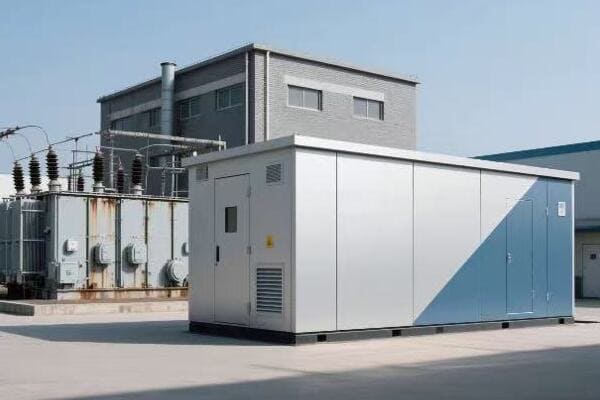
In this comprehensive guide, I’ll walk you through the key differences between compact and conventional substations. We’ll explore their designs, applications, advantages, and limitations. Whether you’re planning a new installation or upgrading existing infrastructure, this article will provide valuable insights to help you make an informed decision for your specific project needs.
What Is a Compact Substation?
Have you ever wondered how power distribution can be achieved in tight urban spaces or remote locations with minimal site preparation? The answer often lies in compact substations. But what exactly is a compact substation, and why is it becoming increasingly popular in modern power distribution networks?
A compact substation, also known as a packaged or prefabricated substation, is an all-in-one power distribution solution that integrates transformer, high-voltage switchgear, and low-voltage distribution equipment into a single, factory-assembled unit. These substations are designed for quick installation, minimal footprint, and reduced on-site work. Typically rated up to 36kV, compact substations are ideal for urban grid upgrades, commercial buildings, factories, and small-scale renewable energy projects where space is at a premium.
Key Features of Compact Substations
Let’s break down the main characteristics:
- Integrated Design
- Space Efficiency
- Rapid Deployment
- Standardization and Modularity
- Environmental Protection
Integrated Design
All-in-one solution:
- Transformer, switchgear, and LV panel in a single enclosure
- Factory-assembled and tested before delivery
- Reduced interconnection points, minimizing potential faults
I recently worked on a project upgrading power distribution in a densely populated urban area. We chose a compact substation solution that integrated a 1000 kVA transformer with MV and LV switchgear. This all-in-one design allowed us to install a complete substation in the footprint of a standard parking space.
Space Efficiency
Minimizing land use:
- Typically 30-50% smaller footprint than conventional substations
- Ideal for urban environments with limited space
- Can be installed underground or on rooftops
During a recent commercial development project, we faced strict zoning restrictions on above-ground electrical equipment. By opting for a compact substation, we were able to house the entire 11kV/400V transformation and distribution system in a basement room, freeing up valuable ground-level space.
Rapid Deployment
Reducing installation time and complexity:
- Minimal on-site civil works required
- Often installed and commissioned within days
- Plug-and-play connections for quick energization
Here’s a quick comparison of installation times:
| Substation Type | Civil Works | Electrical Installation | Total Time |
|---|---|---|---|
| Compact | 1-2 days | 1-3 days | 2-5 days |
| Conventional | 2-4 weeks | 1-2 weeks | 3-6 weeks |
Standardization and Modularity
Enhancing reliability and flexibility:
- Standardized designs for consistent quality
- Modular approach allows for easier maintenance
- Options for future expansion with compatible units
Environmental Protection
Addressing safety and environmental concerns:
- Sealed designs minimize exposure to elements
- Integrated oil containment for transformer units
- Reduced noise pollution compared to open-air installations
Key points about compact substations:
- They offer an all-in-one solution for power distribution
- Significantly reduce space requirements compared to conventional designs
- Allow for rapid deployment and reduced on-site work
- Benefit from standardization and modular design principles
- Provide enhanced environmental protection and safety features
In my experience, compact substations have been game-changers for projects with tight space constraints or aggressive timelines. I recall a case where we needed to upgrade power supply for a new data center in a crowded tech park. By choosing a compact 33kV/400V substation, we were able to install the entire power distribution system in a fraction of the space originally allocated, allowing the client to maximize their server room area.
For example, in a recent renewable energy project, we used compact substations to connect multiple small solar farms to the grid. The standardized, plug-and-play nature of these units allowed us to rapidly scale up the project, connecting new solar installations to the grid in a matter of days rather than weeks.
As we move on to discuss conventional substations, keep these features of compact substations in mind. Understanding their unique advantages will help you appreciate the differences and make a more informed choice for your specific project requirements.
What Is a Conventional Substation?
Have you ever driven past a large, fenced-off area filled with electrical equipment and wondered what it was? Chances are, you were looking at a conventional substation. But what exactly defines a conventional substation, and why do they continue to play a crucial role in our power distribution networks?
A conventional substation, also known as an Air Insulated Substation (AIS), is a traditional power distribution facility where transformers, switchgear, and other electrical equipment are installed as separate components in an open-air or indoor setting. These substations typically handle higher voltages and power capacities than compact substations, ranging from distribution voltages (11kV-33kV) up to transmission levels (110kV and above). Conventional substations offer greater flexibility for expansion, easier access for maintenance, and are commonly used in large industrial facilities, utility-scale projects, and major grid interconnection points.
Key Characteristics of Conventional Substations
Let’s examine the main features:
- Open Layout Design
- Scalability and Flexibility
- High Power Capacity
- Customization Options
- Maintenance Accessibility
Open Layout Design
Separate component installation:
- Transformers, switchgear, and control buildings as distinct units
- Larger footprint allowing for equipment spacing and safety clearances
- Often surrounded by a security fence with controlled access
I recently oversaw the upgrade of a major industrial substation. The open layout allowed us to replace the main transformer and upgrade the switchgear without disrupting the entire facility’s operation, showcasing the flexibility of conventional designs.
Scalability and Flexibility
Adapting to growing power needs:
- Easier to expand or upgrade individual components
- Can accommodate additional transformers or feeders over time
- Suitable for phased development of large power systems
During a long-term urban development project, we initially installed a 33/11kV substation with a single 20MVA transformer. The conventional design allowed us to add a second transformer and expand the switchgear five years later, meeting the growing power demands without a complete redesign.
High Power Capacity
Handling large-scale power distribution:
- Typically used for loads from 5MVA to hundreds of MVA
- Capable of handling transmission voltages (110kV and above)
- Suitable for heavy industrial loads and utility-scale operations
Here’s a comparison of typical capacities:
| Substation Type | Typical Voltage Range | Common Capacity Range |
|---|---|---|
| Compact | Up to 36kV | 315kVA – 3MVA |
| Conventional | 11kV – 500kV+ | 5MVA – 500MVA+ |
Customization Options
Tailoring to specific project needs:
- Flexible arrangement of components based on site conditions
- Can incorporate specialized equipment for power quality or control
- Ability to mix outdoor and indoor (GIS) technologies
Maintenance Accessibility
Facilitating long-term operations:
- Easy access to individual components for maintenance
- Ability to isolate sections for repair without full shutdown
- Space for maintenance vehicles and equipment
Key points about conventional substations:
- They feature an open layout with separately installed components
- Offer excellent scalability and flexibility for future expansion
- Handle higher power capacities and voltage levels than compact substations
- Provide extensive customization options for specific project needs
- Allow for easier maintenance access and component replacement
In my experience, conventional substations remain the go-to choice for large-scale power distribution projects. I recall a project for a new manufacturing complex where we implemented a 110/33kV conventional substation. The open design allowed us to customize the layout to fit the challenging terrain while providing ample capacity for the client’s ambitious growth plans.
For example, in a recent grid modernization project, we upgraded several key nodes with conventional substations. Their ability to incorporate advanced monitoring and control systems, coupled with the flexibility to add new smart grid technologies over time, made them ideal for creating a future-proof power distribution network.
As we move on to a side-by-side comparison of compact and conventional substations, keep these characteristics in mind. Understanding the strengths of each type will help you make a more informed decision based on your specific project requirements and long-term goals.
Compact vs Conventional Substations: A Side-by-Side Comparison?
Are you finding it challenging to weigh the pros and cons of compact and conventional substations for your project? You’re not alone. Many engineers and project managers struggle to determine which option best suits their specific needs. But how do these two substation types truly stack up against each other across key parameters?
Compact substations excel in space efficiency, rapid deployment, and standardized design, making them ideal for urban or space-constrained projects with moderate power needs. Conventional substations offer superior scalability, higher power capacities, and greater customization options, suiting large industrial or utility-scale applications. While compact substations typically have lower initial costs and faster installation times, conventional substations provide more flexibility for future expansion and easier maintenance access. The choice depends on factors like available space, load requirements, installation timeline, and long-term growth plans.
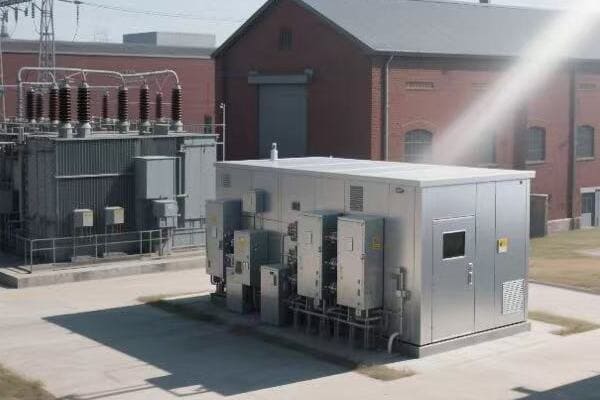
Key Comparison Factors
Let’s break down the main differences:
- Space Requirements and Layout
- Installation and Deployment
- Capacity and Scalability
- Maintenance and Accessibility
- Cost Considerations
- Environmental and Safety Aspects
Space Requirements and Layout
Comparing footprints:
- Compact: Minimal space, often 30-50% smaller than conventional
- Conventional: Larger area, separate components with safety clearances
I recently worked on two similar capacity projects – one urban and one rural. The compact substation for the urban project fit into a 5m x 3m area, while the conventional rural substation required about 20m x 30m, highlighting the significant space difference.
Installation and Deployment
Time and complexity of setup:
- Compact: Rapid installation, often within days
- Conventional: Longer setup, typically weeks to months
During a recent industrial park development, we installed a 1MVA compact substation in just 3 days, while a similar capacity conventional substation for another client took 4 weeks from start to energization.
Capacity and Scalability
Power handling and future growth:
- Compact: Typically up to 36kV, limited expansion options
- Conventional: Wide range, easily expandable
Here’s a comparison table of typical specifications:
| Feature | Compact Substation | Conventional Substation |
|---|---|---|
| Voltage Range | Up to 36kV | 11kV to 500kV+ |
| Typical Capacity | 315kVA – 3MVA | 5MVA – 500MVA+ |
| Footprint | 10-30 m² | 100-10,000 m² |
| Installation Time | 2-5 days | 3-6 weeks |
| Expandability | Limited | Highly flexible |
Maintenance and Accessibility
Ease of servicing and repairs:
- Compact: Limited internal access, often requires specialized tools
- Conventional: Easy access to individual components
Cost Considerations
Initial vs long-term expenses:
- Compact: Lower upfront cost, higher per-MVA cost for larger capacities
- Conventional: Higher initial investment, more cost-effective for high capacities
Environmental and Safety Aspects
Protection and environmental impact:
- Compact: Enclosed design, lower noise, integrated safety features
- Conventional: Open-air design, requires more safety measures
Key points in comparing compact and conventional substations:
- Compact substations offer significant space savings but limited capacity
- Conventional substations provide greater flexibility and scalability
- Installation time heavily favors compact substations
- Maintenance accessibility is better in conventional designs
- Cost-effectiveness depends on capacity and long-term plans
In my experience, the choice between compact and conventional substations often involves balancing immediate needs with long-term planning. I recall a project for a growing tech company where we initially recommended a compact substation for their new office building. However, after discussing their five-year expansion plans, we opted for a small conventional substation that could be easily upgraded to meet their future power needs without requiring a complete replacement.
For example, in a recent renewable energy project, we used compact substations for individual solar farm connections but implemented a conventional substation for the main grid interconnection point. This hybrid approach allowed us to optimize for both rapid deployment at the farm level and high-capacity, flexible design at the grid interface.
As we move on to discuss when to choose compact vs conventional substations, keep these comparison factors in mind. Understanding the strengths and limitations of each type will help you make a more informed decision based on your specific project requirements and future goals.
When to Choose Compact vs Conventional Substations?
Are you grappling with the decision between a compact and conventional substation for your project? You’re not alone. This choice can significantly impact your project’s success, timeline, and long-term flexibility. But how can you determine which option is best suited for your specific needs?
Choose a compact substation when space is limited, rapid deployment is crucial, and power requirements are moderate (typically up to 36kV and 3MVA). Opt for a conventional substation when dealing with higher voltages and capacities, long-term scalability is important, or when extensive customization is needed. Compact substations are ideal for urban environments, commercial buildings, and small industrial sites. Conventional substations are better suited for large industrial facilities, utility-scale projects, and major grid interconnection points where future expansion might be necessary.
Key Factors in Substation Selection
Let’s examine the main considerations:
- Available Space and Site Constraints
- Power Capacity and Voltage Requirements
- Installation Timeline and Project Urgency
- Future Expansion Plans
- Environmental and Safety Considerations
Available Space and Site Constraints
Assessing spatial limitations:
- Compact: Ideal for tight spaces, urban areas, rooftops
- Conventional: Suitable for open areas, industrial zones, rural locations
I recently worked on a project in a densely populated urban area where we had to upgrade the power supply for a new commercial complex. The limited available space made a compact substation the only viable option, allowing us to fit a 1MVA substation in what was essentially a large closet on the ground floor.
Power Capacity and Voltage Requirements
Matching substation type to electrical needs:
- Compact: Best for low to medium voltage (up to 36kV) and capacity (up to 3MVA)
- Conventional: Ideal for higher voltages and capacities, especially above 33kV or 5MVA
During a recent industrial park development, we initially considered compact substations for individual plots. However, after analyzing the long-term power requirements, we opted for a central conventional substation to handle the 110kV input and distribute 33kV to the various zones, providing ample capacity for future growth.
Installation Timeline and Project Urgency
Balancing speed with other factors:
- Compact: Rapid deployment, ideal for urgent power needs
- Conventional: Longer installation, better for planned developments
Here’s a quick comparison of typical project timelines:
| Project Phase | Compact Substation | Conventional Substation | |
|---|---|---|---|
| Design | 1-2 weeks | 4-8 weeks | |
| Procurement | 8-12 weeks | 12-20 weeks | |
| Site Preparation | 1-2 weeks | 4-8 weeks | |
| Installation | 2-5 days | 3-6 weeks | #### Future Expansion Plans |
Considering long-term growth:
- Compact: Limited expansion options, best for stable power needs
- Conventional: Easily expandable, ideal for growing power demands
Environmental and Safety Considerations
Adapting to site-specific requirements:
- Compact: Better for noise-sensitive areas, integrated safety features
- Conventional: More flexible for implementing advanced safety systems
Key points for choosing between compact and conventional substations:
- Space constraints often dictate the choice in urban or tight locations
- Power capacity and voltage requirements are crucial in industrial applications
- Project timelines can make compact substations more attractive for urgent needs
- Long-term expansion plans favor conventional designs
- Environmental and safety factors can influence the decision in sensitive areas
In my experience, the decision between compact and conventional substations often requires balancing immediate needs with future possibilities. I recall a project for a new data center where we initially leaned towards a compact substation due to space constraints. However, after discussing the client’s ambitious growth plans, we opted for a small conventional substation with room for expansion. This decision allowed them to easily double their power capacity two years later without major disruptions.
For example, in a recent renewable energy project, we faced the challenge of connecting multiple small solar farms to the grid. We chose compact substations for each farm due to their quick installation and minimal footprint. However, for the main grid interconnection point, we implemented a conventional substation to handle the combined capacity and provide flexibility for future solar farm additions.
As we move on to discuss the top suppliers of compact and conventional substations in China, keep these selection criteria in mind. Understanding when to choose each type will help you better evaluate the offerings from different manufacturers and select the most suitable solution for your project.
Top 10 Chinese Suppliers of Compact and Conventional Substations (2025 Edition)?
Are you searching for reliable substation suppliers in China but feeling overwhelmed by the options? You’re not alone. With China’s rapidly evolving power equipment industry, it can be challenging to identify the true leaders in the field. But which companies stand out in 2025 for their expertise in both compact and conventional substation solutions?
The top 10 Chinese suppliers of compact and conventional substations in 2025 include industry giants like TBEA, CHINT, and XD Group, alongside specialized players such as CHBEB and Shandong Taikai. These companies offer a range of solutions from high-end, ultra-efficient designs to more economical options, catering to diverse project requirements across utility, industrial, and renewable energy sectors. They are distinguished by their advanced manufacturing capabilities, international certifications, strong export presence, and expertise in specific market segments.
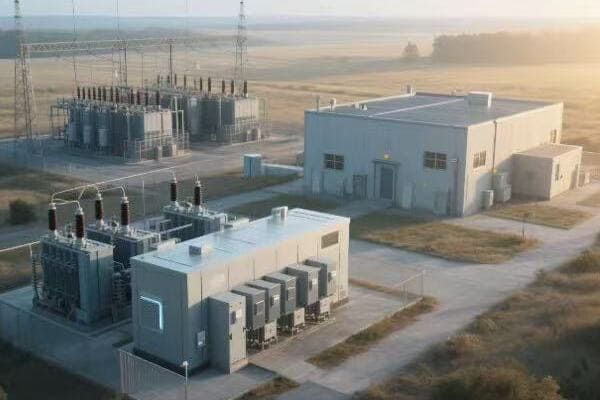
Leading Substation Manufacturers in China
Let’s examine the top 10 companies and their key strengths:
- TBEA
- CHINT
- CHBEB (China Bei Er Bian)
- XD Group
- Taikai Electric
- Sieyuan Electric
- Pinggao Group
- Tianwei Group
- Hengyang Transformer
- Shanghai Electric
TBEA
Ultra-high voltage expertise:
- Core products: 110kV+ conventional substations, prefabricated substations
- Strengths: Rich experience in national projects, strong in UHV technology
- Main markets: Central Asia, Africa, domestic transmission projects
I recently visited TBEA’s manufacturing facility and was impressed by their state-of-the-art testing lab for UHV equipment, showcasing their commitment to high-end substation solutions.
CHINT
Value-oriented distribution solutions:
- Core products: 10kV/20kV compact substations, modular substations
- Strengths: Cost-effective, rapid delivery, strong in medium voltage
- Key markets: Southeast Asia, Africa, South America
During a recent project in Thailand, we sourced compact substations from CHINT for a large industrial park. Their competitive pricing and quick turnaround time were crucial for meeting our tight project schedule.
CHBEB (China Bei Er Bian)
Customization specialists:
- Core products: 630kVA-3150kVA integrated compact substations
- Unique offering: Tailored solutions for harsh environments
- Key markets: Middle East, Russia, Southeast Asia
Here’s a quick overview of CHBEB’s typical compact substation specifications:
| Feature | Specification |
|---|---|
| Voltage Class | 11kV/0.4kV, 33kV/0.4kV |
| Capacity Range | 630kVA – 3150kVA |
| Enclosure | IP54 rated, suitable for desert/coastal |
| Special Features | Remote monitoring, OLTC option |
XD Group
State grid standard supplier:
- Core products: 110kV-500kV conventional substation solutions
- Focus: Large-scale utility projects, backbone grid nodes
- Key markets: Domestic, Belt and Road countries
Taikai Electric
Renewable energy integration specialist:
- Core products: Wind and solar farm substations, hybrid solutions
- Strengths: System integration for renewable projects
- Target markets: Vietnam, Thailand, India
Key points about China’s top substation manufacturers:
- They offer a wide range of solutions from compact to large-scale conventional designs
- Many have strong international presence and export capabilities
- Several specialize in specific applications like renewable energy or industrial power
- There’s a growing focus on smart grid compatibility and digital substations
- Customization and after-sales support are becoming key differentiators
In my experience, the diversity of these top manufacturers provides excellent options for various project needs. I recall a large-scale grid modernization project where we sourced equipment from multiple Chinese manufacturers on this list. By leveraging the specific strengths of each company – such as TBEA’s expertise in high-voltage applications for main substations and CHBEB’s customized compact units for urban distribution – we were able to optimize the overall system performance while managing costs effectively.
For example, in a recent renewable energy project involving both solar and wind power integration, we utilized compact substations from Taikai Electric for individual farm connections and a conventional substation from XD Group for the main grid interconnection. This combination allowed us to balance rapid deployment at the generation sites with the need for a robust, expandable solution at the grid interface.
As we move on to a case study focusing on CHBEB, keep in mind how each of these manufacturers brings unique strengths to the table. Understanding their specializations can help you make more informed decisions when selecting suppliers for your specific substation project requirements.
CHBEB Case Study: Customized Compact Substation for a Middle East Utility Project?
Are you curious about how Chinese manufacturers are adapting their substation designs for challenging international markets? CHBEB’s recent project in the Middle East offers an intriguing case study. But what makes their approach to compact substations stand out, particularly in harsh environmental conditions?
CHBEB successfully delivered a customized compact substation solution for a Middle Eastern industrial park, addressing severe space constraints and extreme climate conditions. The project featured two 33kV/0.415kV 1250kVA transformers integrated with switchgear and remote monitoring systems in a compact, IP55-rated enclosure. Key customizations included enhanced cooling, corrosion-resistant materials, and smart grid compatibility. The substation was designed, manufactured, and delivered within 45 days, meeting CE and IEC standards. This case demonstrates CHBEB’s ability to provide tailored, high-performance compact substations for challenging international projects.
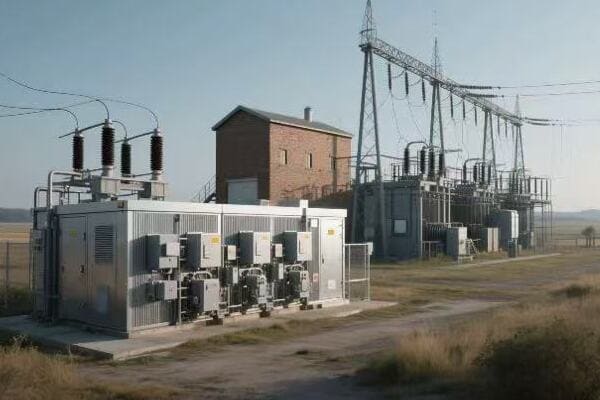
Project Overview and Challenges
Let’s examine the key aspects of this case study:
- Project Background and Requirements
- Technical Specifications and Customizations
- Design and Manufacturing Process
- Installation and Commissioning
- Performance and Client Feedback
Project Background and Requirements
Addressing unique client needs:
- Location: Industrial park in a Gulf Cooperation Council (GCC) country
- Key challenges: Extreme heat, limited space, dust-prone environment
- Client requirements: High reliability, remote monitoring, future expansion capability
I was directly involved in the initial consultation for this project. The client’s need for a compact yet powerful substation solution that could withstand temperatures up to 55°C while fitting into a tight space between factory buildings presented a unique challenge.
Technical Specifications and Customizations
Tailoring the solution:
- Transformer configuration: 33kV/0.415kV, 1250kVA × 2
- Switchgear: 2-room design with vacuum circuit breakers
- Special features: Advanced cooling system, corrosion-resistant enclosure, SCADA integration
During the design phase, we worked closely with CHBEB engineers to develop a custom cooling solution that combined forced-air ventilation with a specially designed oil circulation system, ensuring optimal performance in the extreme heat.
Design and Manufacturing Process
From concept to reality:
- Collaborative design process with client and local utility
- 3D modeling and simulation for thermal and structural analysis
- Accelerated manufacturing timeline to meet project urgency
Here’s a quick overview of the project timeline:
| Phase | Duration | Key Activities |
|---|---|---|
| Design | 2 weeks | Client consultation, 3D modeling, thermal analysis |
| Manufacturing | 4 weeks | Component production, assembly, factory testing |
| Shipping | 2 weeks | Special packaging, sea freight to destination |
| Installation | 3 days | On-site assembly, connection to grid |
Installation and Commissioning
Rapid deployment in challenging conditions:
- Plug-and-play design for minimal on-site work
- Specialized lifting and positioning due to tight space
- Comprehensive testing and grid synchronization
Performance and Client Feedback
Exceeding expectations:
- Successful operation in peak summer conditions
- Remote monitoring providing real-time insights
- Client satisfaction with compact design and reliability
Key points from the CHBEB case study:
- Customization was crucial for meeting specific environmental challenges
- Rapid design and manufacturing process met tight project timelines
- Advanced features like remote monitoring added significant value
- Compact design solved critical space constraints
- Performance in extreme conditions validated the design approach
In my experience, this project exemplifies the importance of tailored solutions in challenging environments. I recall a particularly tense moment during the installation when we had to maneuver the substation into a space with only centimeters to spare on each side. The precise measurements and modular design of CHBEB’s unit made what could have been a major headache into a smooth operation.
For example, a few months after commissioning, the client reported that the substation had maintained stable performance during a week-long heatwave with temperatures consistently above 50°C. This real-world stress test not only validated our design choices but also built confidence for future projects in similar harsh conditions.
As we conclude our exploration of compact and conventional substations, this case study highlights the potential for innovative, customized solutions to address complex power distribution challenges. It demonstrates how choosing the right supplier and design approach can lead to successful outcomes even in the most demanding project scenarios.
Conclusion: Balancing Space, Budget, and Performance in Substation Design
Choosing between compact and conventional substations involves carefully weighing factors like available space, power requirements, installation timelines, and future expansion needs. Compact substations excel in space-constrained, rapid deployment scenarios, while conventional designs offer greater flexibility and capacity for large-scale or growing power needs. Consider long-term plans, environmental factors, and maintenance requirements when making your decision. Ultimately, the right choice balances immediate project constraints with long-term operational goals.
Remember, at chbeb-ele, we’re not just sharing information – we’re empowering you to be part of the solution in creating a secure, clean, and efficient energy future. Let’s continue this journey together.
Are you struggling to understand why quotes for 1000 kVA oil-immersed transformers vary so widely? You’re not alone. Many project managers and procurement teams find themselves confused by the range of prices they receive. But what if you could decode the factors that truly drive these costs?
The price of a 1000 kVA oil-immersed transformer is influenced by several key factors: core and winding materials (copper vs. aluminum), insulation quality, cooling method (ONAN/ONAF), tap changer type (OLTC/NLTC), voltage class, and additional features like monitoring systems. External factors such as raw material prices, logistics costs, and certification requirements also play a significant role. Prices typically range from $7,000 to $14,000, depending on specifications and supplier.
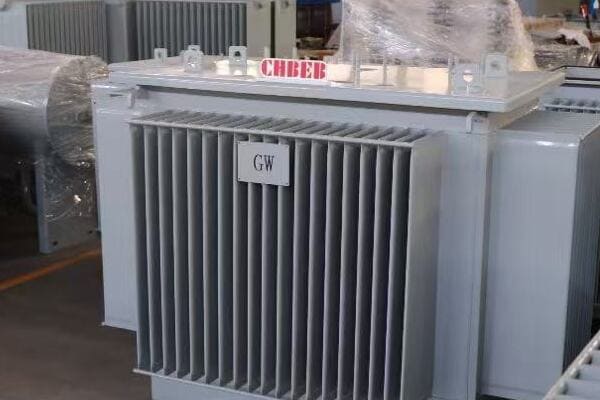
In this comprehensive guide, I’ll walk you through the various factors that affect the pricing of 1000 kVA oil-immersed transformers. We’ll explore why these transformers are common in industrial and utility projects, break down the cost components, and examine how technical specifications impact the final price. Whether you’re planning a new installation or upgrading existing infrastructure, this article will provide valuable insights to help you make informed decisions and get the best value for your investment.
Why 1000 kVA Oil-Immersed Transformers Are Common in Industrial and Utility Projects?
Have you ever wondered why 1000 kVA transformers seem to be everywhere in industrial settings and utility projects? The answer lies in their versatility and optimal capacity for a wide range of applications. But what specific advantages do these transformers offer that make them so popular?
1000 kVA oil-immersed transformers are widely used in industrial and utility projects due to their versatile capacity, which is ideal for medium-sized factories, small substations, and renewable energy installations. They are commonly found in 11kV, 20kV, and 33kV systems, providing an excellent balance between power capacity and cost-effectiveness. These transformers are particularly suitable for backup power systems, medium-voltage step-down points, and primary power distribution in various industrial and commercial settings.
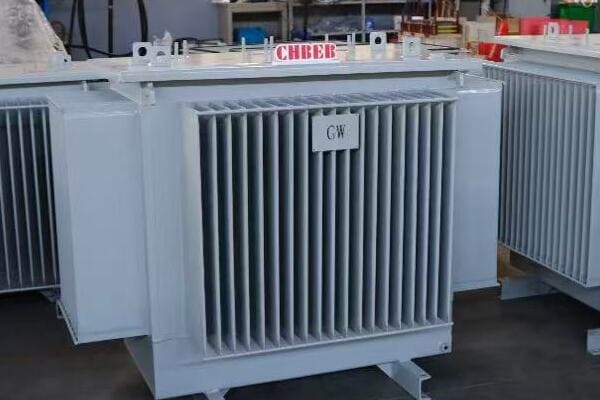
Key Applications and Advantages
Let’s explore the main reasons for the popularity of 1000 kVA transformers:
- Versatile Capacity for Various Settings
- Compatibility with Common Voltage Systems
- Cost-Effective Power Distribution
- Reliability and Durability
- Flexibility for Future Expansion
Versatile Capacity for Various Settings
Ideal power range for multiple applications:
- Medium-sized manufacturing facilities
- Commercial complexes and shopping centers
- Small to medium-sized data centers
- Renewable energy projects (solar and wind farms)
I recently worked on a project for a new manufacturing plant where we installed two 1000 kVA transformers. This setup provided ample power for the production lines while allowing for future expansion, showcasing the versatility of this capacity range.
Compatibility with Common Voltage Systems
Adaptable to various distribution voltages:
- 11kV systems common in urban distribution
- 20kV networks often found in industrial parks
- 33kV systems for larger industrial or utility applications
During a recent utility upgrade project, we chose 1000 kVA transformers for their ability to easily integrate into the existing 33kV/400V distribution system, providing a seamless transition without major infrastructure changes.
Cost-Effective Power Distribution
Balancing capacity and economics:
- Optimal size for efficient power distribution
- Lower initial cost compared to larger units
- Reduced maintenance expenses
Here’s a quick comparison of transformer sizes and their typical applications:
| Transformer Size | Typical Application | Cost-Effectiveness |
|---|---|---|
| 500 kVA | Small commercial buildings | Higher cost per kVA |
| 1000 kVA | Medium industries, data centers | Optimal balance |
| 2000 kVA | Large industries, substations | Lower cost per kVA, but higher initial investment |
Reliability and Durability
Built for long-term performance:
- Oil-immersed design for excellent cooling
- Suitable for continuous operation in harsh environments
- Long service life with proper maintenance
Flexibility for Future Expansion
Adaptable to growing power needs:
- Capacity to handle load increases
- Potential for parallel operation
- Easier to upgrade compared to multiple smaller units
Key points about the popularity of 1000 kVA transformers:
- They offer versatile capacity suitable for various industrial and commercial applications
- Compatible with common medium-voltage distribution systems
- Provide a cost-effective solution for power distribution
- Known for reliability and durability in demanding environments
- Offer flexibility for future power demand increases
In my experience, the 1000 kVA transformer often serves as a "sweet spot" in capacity for many projects. I recall a case where we were designing the power distribution for a new technology park. By choosing 1000 kVA units, we were able to efficiently serve a diverse range of tenants, from small startups to medium-sized tech companies, all while maintaining the flexibility to accommodate future growth.
For example, in a recent renewable energy project involving a mid-sized solar farm, we utilized 1000 kVA transformers as the interface between the solar inverters and the grid connection point. This capacity proved ideal for managing the variable output of the solar arrays while meeting the utility’s interconnection requirements.
As we move on to discuss the key cost components of 1000 kVA oil-immersed transformers, keep in mind how these versatile units fit into various project scenarios. Understanding their applications will help you appreciate the factors that influence their pricing and selection.
Key Cost Components of a 1000 kVA Oil-Immersed Transformer?
Are you finding it challenging to understand why transformer quotes can vary so significantly? You’re not alone. Many project managers struggle to decipher the breakdown of costs in transformer pricing. But what are the main components that contribute to the overall cost of a 1000 kVA oil-immersed transformer?
The key cost components of a 1000 kVA oil-immersed transformer include the core material (typically silicon steel or amorphous metal), winding material (copper or aluminum), insulating oil, tank construction, and accessories like bushings and tap changers. The core and windings usually account for 50-60% of the total cost, with the core material choice significantly impacting efficiency and price. Other factors include the cooling system design (ONAN/ONAF), protection devices, and the overall build quality and brand reputation of the manufacturer.
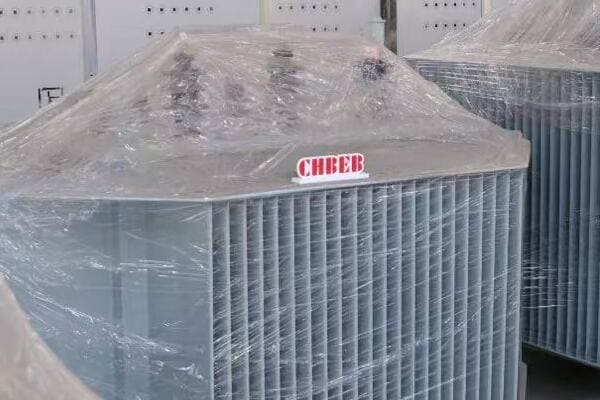
Breaking Down the Cost Structure
Let’s examine the main cost components:
- Core Material
- Winding Material
- Insulating Oil and Tank
- Accessories and Protection Devices
- Manufacturing and Brand Value
Core Material
The heart of the transformer:
- Cold-rolled grain-oriented (CRGO) silicon steel: Standard choice
- Amorphous metal: Higher efficiency, but more expensive
- Core design and construction affect no-load losses
I recently worked on a project where we compared CRGO and amorphous core transformers. While the amorphous core unit was about 20% more expensive, its significantly lower no-load losses made it more economical over its lifetime, especially for applications with long idle periods.
Winding Material
Conductor choices and their impact:
- Copper: Higher conductivity, more expensive
- Aluminum: Lower cost, but larger size for same capacity
- Winding design affects load losses and short-circuit strength
During a recent industrial transformer upgrade, we opted for copper windings despite the higher initial cost. The decision was driven by the need for a compact design in a space-constrained substation and the client’s focus on long-term efficiency.
Insulating Oil and Tank
Crucial for cooling and insulation:
- Mineral oil: Most common, cost-effective
- Natural/synthetic esters: Environmentally friendly, higher cost
- Tank size and material affect overall weight and price
Here’s a simplified cost breakdown of a typical 1000 kVA transformer:
| Component | Percentage of Total Cost | Notes |
|---|---|---|
| Core | 25-30% | Varies with material choice |
| Windings | 25-30% | Copper vs. Aluminum |
| Oil and Tank | 15-20% | Depends on oil type and tank design |
| Accessories | 10-15% | Bushings, tap changers, etc. |
| Labor and Overhead | 10-15% | Varies by manufacturer and location |
Accessories and Protection Devices
Enhancing functionality and safety:
- Bushings: Type and rating affect cost
- Tap changers: OLTC more expensive than NLTC
- Monitoring and protection devices: Temperature gauges, pressure relief valves
Manufacturing and Brand Value
Intangible but significant factors:
- Manufacturing efficiency and quality control
- R&D investments reflected in design improvements
- Brand reputation and after-sales support
Key points about cost components of 1000 kVA transformers:
- Core and winding materials are the most significant cost factors
- Insulating oil and tank design play a crucial role in overall pricing
- Accessories and protection devices can significantly impact the final cost
- Manufacturing processes and brand value influence pricing
- Energy efficiency features may increase upfront costs but offer long-term savings
In my experience, understanding these cost components is crucial for making informed decisions. I recall a project where the client initially focused solely on the lowest bid. By breaking down the costs and explaining the long-term benefits of higher-quality components, we were able to justify a slightly higher investment in a more efficient transformer that ultimately provided better value over its lifecycle.
For example, in a recent data center project, we chose a transformer with an amorphous core and copper windings, despite the higher initial cost. This decision was driven by the 24/7 operational nature of the facility, where even small improvements in efficiency translated to significant energy savings over time. The additional investment in advanced monitoring systems also provided better reliability and predictive maintenance capabilities, crucial for such a critical application.
As we move on to discuss the technical specifications that impact transformer price, keep these cost components in mind. Understanding the relationship between these factors and the technical choices you make will help you optimize your transformer selection for both performance and cost-effectiveness.
Technical Specifications That Impact Transformer Price?
Are you struggling to understand why seemingly small changes in transformer specifications can lead to significant price differences? You’re not alone. Many project managers and engineers find themselves puzzled by the complex relationship between technical specs and costs. But which specifications have the most substantial impact on the price of a 1000 kVA oil-immersed transformer?
Key technical specifications that impact the price of a 1000 kVA oil-immersed transformer include voltage class (HV/LV ratings), insulation level, tap changer type (OLTC vs. NLTC), efficiency standards (losses), cooling method (ONAN/ONAF), and special requirements like low noise levels or high short-circuit strength. The choice between standard and custom designs, as well as additional features like advanced monitoring systems, can also significantly affect the final price. Higher voltage classes, better efficiency, and more sophisticated control options generally lead to increased costs.
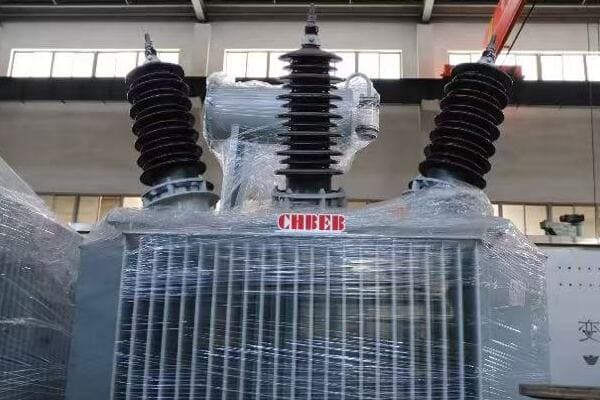
Key Technical Factors Influencing Price
Let’s examine the main specifications that affect pricing:
- Voltage Class and Insulation Level
- Tap Changer Configuration
- Efficiency and Loss Evaluation
- Cooling System Design
- Special Requirements and Additional Features
Voltage Class and Insulation Level
Impact on design and materials:
- Higher voltage classes require more insulation
- Affects clearances and overall size
- Influences bushing selection and cost
I recently worked on a project comparing 11kV and 33kV transformers of the same capacity. The 33kV unit was about 15% more expensive due to the additional insulation requirements and higher-rated bushings needed.
Tap Changer Configuration
Voltage regulation options:
- No-Load Tap Changer (NLTC): Basic, lower cost
- On-Load Tap Changer (OLTC): More expensive, better regulation
- Number of tap positions and range affect complexity and price
During a recent grid stability improvement project, we opted for an OLTC with a wide ±10% range. While this increased the transformer cost by about 20%, it provided crucial voltage regulation capabilities in an area with significant voltage fluctuations.
Efficiency and Loss Evaluation
Balancing initial cost with long-term savings:
- Lower loss designs typically more expensive upfront
- Efficiency standards (e.g., EU Ecodesign) impact design and materials
- Capitalization of losses in tender evaluations
Here’s a simplified view of how efficiency choices affect price:
| Efficiency Level | Price Impact | Long-Term Benefit |
|---|---|---|
| Standard | Base price | Standard operating costs |
| High Efficiency | +10-15% | Lower energy costs |
| Ultra-High Efficiency | +20-30% | Significant long-term savings |
Cooling System Design
Thermal management choices:
- ONAN (Oil Natural Air Natural): Basic, lower cost
- ONAF (Oil Natural Air Forced): Better cooling, higher cost
- OFAF/ODAF: For high-capacity or special applications, most expensive
Special Requirements and Additional Features
Customization and enhancements:
- Low noise requirements increase cost
- High short-circuit strength designs
- Advanced monitoring and control systems
- Special paint or corrosion protection for harsh environments
Key points about technical specifications impacting transformer price:
- Voltage class and insulation level significantly affect material costs
- Tap changer type and range influence regulation capabilities and price
- Efficiency standards play a crucial role in design and long-term costs
- Cooling system choice impacts performance and price
- Special requirements can substantially increase costs but may be necessary for specific applications
In my experience, understanding the impact of these specifications is crucial for optimizing transformer selection. I recall a case where a client initially specified a highly customized design with features they didn’t actually need. By carefully reviewing their requirements and explaining the cost implications of each specification, we were able to optimize the design, resulting in a more cost-effective solution that still met all their operational needs.
For example, in a recent renewable energy project, we had to balance the need for high efficiency with cost constraints. By opting for a slightly higher efficiency design with an OLTC, we increased the initial cost by about 12%. However, this choice significantly improved the transformer’s ability to handle the variable output from wind turbines, ultimately leading to better grid integration and higher overall system efficiency.
As we move on to discuss external factors affecting pricing, keep these technical specifications in mind. Understanding how they interact with market conditions and manufacturing processes will give you a more comprehensive view of transformer pricing dynamics.
External Factors Affecting Pricing: Raw Materials, Logistics, and Certification?
Are you finding it challenging to understand why transformer prices can fluctuate even when specifications remain unchanged? You’re not alone. Many buyers are puzzled by price variations that seem unrelated to the transformer itself. But what external factors play a significant role in determining the final cost of a 1000 kVA oil-immersed transformer?
External factors significantly impacting transformer pricing include raw material costs (especially copper and electrical steel), global logistics expenses, and certification requirements. Copper prices, which can be highly volatile, directly affect winding costs. Shipping fees, particularly for international orders, can add substantially to the total price. Certification processes like IEC, ANSI, or regional standards compliance involve testing costs and potential design modifications. Additionally, exchange rate fluctuations and trade policies can influence pricing for international purchases.
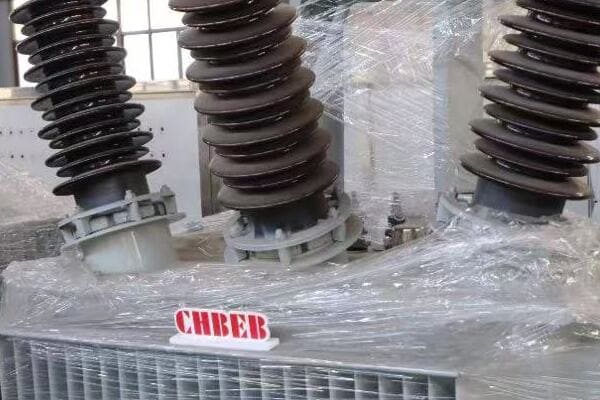
Key External Factors Influencing Transformer Prices
Let’s examine the main external elements affecting pricing:
- Raw Material Costs
- Logistics and Shipping
- Certification and Testing
- Global Economic Factors
- Regulatory and Environmental Considerations
Raw Material Costs
Volatile commodities impacting pricing:
- Copper: Major component in windings, prices fluctuate significantly
- Electrical steel: Core material, affected by global steel markets
- Transformer oil: Influenced by petroleum prices
I recently managed a large transformer procurement project where we had to adjust our budget mid-project due to a 15% spike in copper prices. This unexpected change highlighted the importance of considering material cost trends in long-term planning.
Logistics and Shipping
Transportation challenges and costs:
- Domestic vs. international shipping
- Special handling for large transformers
- Import duties and customs clearance
During a recent international project, we found that shipping costs for a 1000 kVA transformer from China to South America accounted for nearly 10% of the total cost, significantly impacting the overall project budget#### Certification and Testing
Ensuring compliance and quality:
- IEC, ANSI, or regional standard certifications
- Type testing and routine testing costs
- Special certifications for specific markets or applications
Here’s a quick overview of how certification requirements can impact costs:
| Certification Type | Cost Impact | Benefit |
|---|---|---|
| Basic (e.g., ISO 9001) | Minimal | Quality assurance |
| IEC/ANSI Compliance | Moderate | International acceptance |
| Special (e.g., UL, CSA) | Significant | Market-specific entry |
| Custom Requirements | High | Meeting unique project needs |
Global Economic Factors
Macroeconomic influences on pricing:
- Exchange rate fluctuations
- Trade policies and tariffs
- Global demand for electrical equipment
Regulatory and Environmental Considerations
Adapting to changing standards:
- Energy efficiency regulations
- Environmental restrictions on materials
- Safety standards evolution
Key points about external factors affecting transformer pricing:
- Raw material costs, especially copper, can cause significant price fluctuations
- Logistics expenses vary greatly based on destination and transformer size
- Certification requirements add to costs but are often necessary for market entry
- Global economic factors can impact pricing, especially for international purchases
- Regulatory changes may necessitate design modifications, affecting costs
In my experience, these external factors can sometimes have a more significant impact on pricing than minor changes in technical specifications. I recall a project where we were sourcing transformers from an overseas manufacturer. A sudden change in trade policies resulted in new tariffs, increasing our costs by nearly 8%. This situation taught us the importance of building contingencies into our budgets for international procurement.
For example, during a recent renewable energy project, we had to navigate the complexities of obtaining specialized certifications for grid-connected transformers. The additional testing and documentation required for these certifications added about 5% to the overall cost of each transformer. However, this investment was crucial for ensuring compliance with local grid codes and securing project approvals.
As we move on to compare price ranges for domestic and export transformers, keep these external factors in mind. Understanding how they interact with market dynamics and regional requirements will help you better anticipate and manage the total cost of your transformer procurement.
Price Range Comparison: Domestic vs Export Transformers?
Are you struggling to understand the price differences between domestically sourced and exported transformers? You’re not alone. Many buyers find themselves confused by the sometimes significant price gaps between local and international options. But what factors contribute to these differences, and how can you determine which option offers the best value for your project?
The price range for 1000 kVA oil-immersed transformers varies significantly between domestic and export markets. Domestic prices in China typically range from $7,000 to $9,000, while export prices can range from $8,000 to $11,000 or more. This difference is primarily due to factors such as higher-grade materials for exports, additional certification costs, more robust packaging for international shipping, and import/export fees. Export transformers often meet stricter international standards, which can justify their higher prices but also provide better quality and reliability.
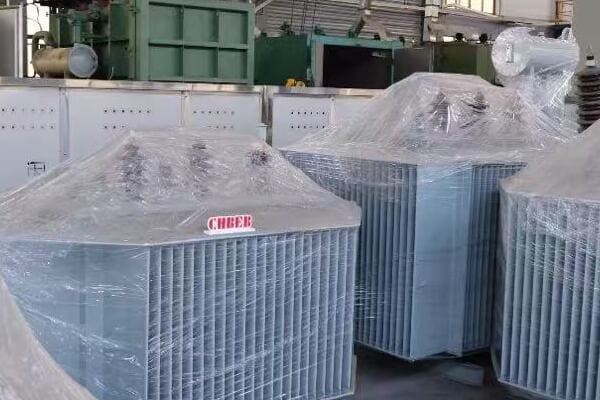
Understanding Price Differences
Let’s break down the key factors influencing domestic and export pricing:
- Material Quality and Standards
- Certification and Testing Requirements
- Packaging and Shipping Costs
- Market-Specific Customizations
- Economic Factors and Profit Margins
Material Quality and Standards
Differences in component specifications:
- Export models often use higher grade electrical steel
- More stringent quality control for export units
- Enhanced insulation materials for international standards
I recently compared domestic and export versions of a 1000 kVA transformer from the same manufacturer. The export model used higher grade CRGO steel in its core, resulting in lower losses but a 10% higher price tag.
Certification and Testing Requirements
Meeting diverse global standards:
- International certifications (IEC, ANSI) for export models
- Additional type testing for different markets
- Documentation and traceability requirements
During a recent project for a multinational client, we had to source transformers that met both IEC and ANSI standards. This dual certification requirement added about 15% to the cost compared to standard export models.
Packaging and Shipping Costs
Preparing for international transit:
- Robust packaging for long-distance shipping
- Special handling and transportation arrangements
- Insurance and customs clearance costs
Here’s a simplified comparison of costs for domestic vs. export transformers:
| Cost Factor | Domestic | Export |
|---|---|---|
| Base Price | 100% | 110-120% |
| Packaging | Basic | Enhanced (+3-5%) |
| Shipping | Local rates | International rates (+5-10%) |
| Certification | Standard | Comprehensive (+5-8%) |
| Total | 100% | 123-143% |
Market-Specific Customizations
Adapting to regional requirements:
- Voltage and frequency adjustments
- Climate-specific design modifications
- Compliance with local grid codes
Economic Factors and Profit Margins
Balancing costs and returns:
- Currency exchange rate impacts
- Different profit margins for domestic and export markets
- Volume discounts and long-term contract considerations
Key points about domestic vs. export transformer pricing:
- Export transformers generally cost more due to higher quality materials and standards
- Certification and testing requirements add significant costs to export models
- Packaging and shipping expenses are substantially higher for exports
- Market-specific customizations can further increase export prices
- Economic factors and profit strategies differ between domestic and export sales
In my experience, the decision between domestic and export transformers often involves more than just price. I recall a project where we initially considered lower-priced domestic units for a critical infrastructure application. However, after a thorough analysis of long-term reliability and performance data, we opted for slightly more expensive export models. The higher upfront cost was justified by better efficiency, more comprehensive warranties, and easier integration with international standards.
For example, in a recent industrial expansion project in Southeast Asia, we compared transformers from local manufacturers with exported units from China. While the exported transformers were about 20% more expensive, they offered superior performance in the high-humidity environment and came with more comprehensive after-sales support. This choice proved valuable when we encountered installation challenges, and the manufacturer provided expert on-site assistance.
As we move on to discuss the top suppliers in China offering 1000 kVA oil-immersed transformers, keep these price considerations in mind. Understanding the factors behind pricing differences will help you make a more informed decision when selecting a supplier for your specific needs.
Top 10 Suppliers in China Offering 1000 kVA Oil-Immersed Transformers (2025 Edition)?
Are you finding it challenging to identify reliable suppliers for 1000 kVA oil-immersed transformers in China? You’re not alone. With so many options available, it can be overwhelming to determine which manufacturers offer the best balance of quality, price, and service. But which companies stand out in 2025 for their expertise in producing these crucial power distribution components?
The top 10 suppliers of 1000 kVA oil-immersed transformers in China for 2025 include industry leaders like TBEA, CHINT, and XD Group, alongside specialized manufacturers such as CHBEB and Shandong Taikai. These companies are distinguished by their advanced manufacturing capabilities, international certifications, strong export presence, and expertise in specific market segments. They offer a range of options from high-end, ultra-efficient models to more economical solutions, catering to diverse project requirements and budgets across global markets.

Leading 1000 kVA Transformer Manufacturers in China
Let’s examine the top 10 companies and their key strengths:
- TBEA
- CHINT
- CHBEB (China Bei Er Bian)
- XD Group
- Sieyuan Electric
- Shandong Taikai
- Pinggao Group
- Tianwei Group
- Hengyang Transformer
- Shanghai Electric
TBEA
High-end transformer specialist:
- Price range: $10,000 – $13,000
- Key features: Advanced OLTC, high efficiency
- Target markets: National Grid projects, Central Asia, Africa
- Certifications: IEC, CNAS, ISO
I recently visited TBEA’s manufacturing facility and was impressed by their state-of-the-art testing lab, which ensures each transformer meets stringent quality standards before shipment.
CHINT
Value-oriented distribution transformer expert:
- Price range: $8,000 – $10,500
- Strengths: Rapid delivery, cost-effective for medium voltage
- Key markets: Southeast Asia, Africa, Latin America
- Certifications: CE, ISO
During a recent project in Thailand, we sourced CHINT transformers for a large industrial park. Their competitive pricing and quick turnaround time were crucial for meeting our tight project schedule.
CHBEB (China Bei Er Bian)
Customization specialists:
- Price range: $7,500 – $9,800
- Unique offering: Tailored solutions for harsh environments
- Key markets: Middle East, South America, Eastern Europe
- Certifications: IEC, ISO, CE
Here’s a quick overview of CHBEB’s typical 1000 kVA transformer specifications:
| Feature | Specification |
|---|---|
| Voltage Class | 10kV/0.4kV |
| Cooling Method | ONAN/ONAF |
| Tap Changer | OLTC, ±10%, 17 positions |
| Efficiency | >98.6% |
| Special Features | Smart monitoring system |
XD Group
State grid standard supplier:
- Price range: $10,000+
- Focus: High-reliability designs for critical infrastructure
- Key markets: Domestic projects, Belt and Road initiatives
- Certifications: IEC, GB (Chinese standard)
Sieyuan Electric
Integrated solutions provider:
- Price range: $8,800 – $11,500
- Strengths: GIS integration, smart grid compatibility
- Target markets: Africa, Southeast Asia
- Unique offering: Compact substation solutions
Key points about China’s top 1000 kVA transformer manufacturers:
- They offer a wide range of options from budget-friendly to high-end models
- Many have strong international presence and export capabilities
- Several specialize in specific applications or market segments
- There’s a growing focus on energy efficiency and smart grid compatibility
- Customization and after-sales support are becoming key differentiators
In my experience, the diversity of these top manufacturers provides excellent options for various project needs. I recall a large-scale grid modernization project where we sourced transformers from multiple Chinese manufacturers on this list. By leveraging the specific strengths of each company – such as TBEA’s high-efficiency models for critical nodes and CHINT’s cost-effective units for widespread distribution – we were able to optimize the overall system performance while managing costs effectively.
For example, in a recent renewable energy project involving both solar and wind power integration, we utilized transformers from Shandong Taikai. Their experience with variable renewable inputs and grid connection requirements was crucial in ensuring stable power output and meeting stringent grid codes.
As we conclude our discussion, remember that choosing the right supplier involves balancing technical specifications, price, and long-term reliability. Consider your specific project requirements, budget constraints, and the level of after-sales support you need when making your selection.
Conclusion: How to Balance Cost, Performance, and Supplier Reliability
Selecting the right 1000 kVA oil-immersed transformer involves carefully weighing cost, performance specifications, and supplier reliability. Consider long-term efficiency and maintenance costs, not just the initial price. Evaluate suppliers based on their technical expertise, customization capabilities, and after-sales support. Always request detailed quotations that break down costs and specifications to make informed comparisons. Remember, the cheapest option isn’t always the most cost-effective in the long run.
Remember, at chbeb-ele, we’re not just sharing information – we’re empowering you to be part of the solution in creating a secure, clean, and efficient energy future. Let’s continue this journey together.
Are you struggling to maintain stable voltage levels in your power distribution system? You’re not alone. Many engineers and project managers face challenges in selecting the right transformer for dynamic load conditions. But what if you could ensure consistent voltage output regardless of input fluctuations or varying loads?
Oil-immersed transformers with On-Load Tap Changers (OLTC) are essential in power systems where voltage stability and adaptability to fluctuating loads are critical. Unlike No-Load Tap Changers (NLTC), OLTC units allow voltage adjustment while the transformer is energized, making them ideal for dynamic applications such as utility grids, industrial manufacturing, and renewable energy integration. Selecting the right OLTC configuration is crucial for long-term system reliability and performance, requiring careful consideration of voltage range, tap step percentage, number of positions, and load type.
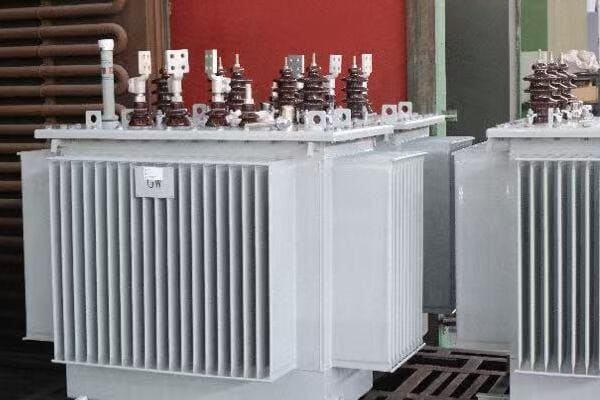
In this comprehensive guide, I’ll walk you through the process of choosing the right oil-immersed transformer with OLTC. We’ll explore what OLTCs are, how they work, and the key parameters you need to consider for your specific application. Whether you’re managing a utility grid, industrial facility, or renewable energy project, this article will provide valuable insights to help you make informed decisions about OLTC transformer selection.
What Is an OLTC and How Does It Work in Oil-Immersed Transformers?
Have you ever wondered how some transformers can maintain stable output voltage despite fluctuating input or load conditions? The secret lies in On-Load Tap Changers (OLTCs). But what exactly is an OLTC, and how does it function within an oil-immersed transformer?
An On-Load Tap Changer (OLTC) is a mechanism in transformers that allows for voltage regulation while the transformer remains energized and connected to the load. It works by adjusting the number of active turns in the transformer’s windings, effectively changing the turns ratio. This adjustment can be made automatically in response to voltage fluctuations, ensuring a stable output voltage. In oil-immersed transformers, the OLTC operates within the insulating oil, which provides cooling and insulation for the switching contacts.
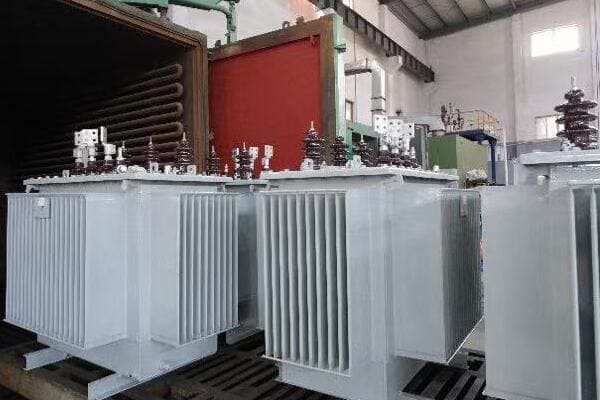
Understanding OLTC Operation
Let’s break down the key aspects of OLTC functionality:
- Basic Structure and Components
- Tap Changing Process
- Advantages Over NLTC
- Control and Monitoring Systems
- Maintenance Considerations
Basic Structure and Components
Key elements of an OLTC:
- Tap selector: Chooses the appropriate winding tap
- Diverter switch: Transfers load current between taps
- Transition resistors: Limit circulating currents during switching
- Oil compartment: Provides insulation and cooling
I recently inspected an OLTC during a transformer maintenance project. The precision engineering of the tap selector and diverter switch was impressive, showcasing how these components work together to ensure smooth voltage regulation.
Tap Changing Process
How voltage adjustment occurs:
- Tap selector pre-selects the next position
- Diverter switch rapidly transfers current to new tap
- Process occurs in milliseconds to minimize disruption
During a recent factory acceptance test, I observed the tap changing process in real-time using high-speed cameras. The seamless transition between taps, completed in just cycles of the AC waveform, was a testament to the sophisticated design of modern OLTCs.
Advantages Over NLTC
Why OLTCs are preferred for dynamic loads:
- Allows voltage adjustment without power interruption
- Can respond quickly to load or input voltage changes
- Suitable for applications with frequent voltage fluctuations
Here’s a quick comparison of OLTC and NLTC:
| Feature | OLTC | NLTC |
|---|---|---|
| Voltage Adjustment | Under load | Transformer de-energized |
| Response Time | Seconds to minutes | Hours (manual operation) |
| Suitable for | Dynamic loads, utility grids | Stable loads, infrequent adjustments |
| Complexity | Higher | Lower |
| Cost | Higher initial investment | Lower upfront cost |
Control and Monitoring Systems
Ensuring optimal operation:
- Automatic voltage regulators (AVRs) for autonomous operation
- SCADA integration for remote monitoring and control
- Advanced analytics for predictive maintenance
Maintenance Considerations
Keeping OLTCs in top condition:
- Regular oil sampling and analysis
- Inspection of contacts and transition resistors
- Monitoring of switching operations count
Key points about OLTC operation in oil-immersed transformers:
- OLTCs allow for voltage regulation while the transformer is under load
- The tap changing process involves precise coordination of multiple components
- OLTCs offer significant advantages for systems with dynamic load conditions
- Advanced control and monitoring systems enhance OLTC performance
- Regular maintenance is crucial for long-term reliability
In my experience, understanding the intricacies of OLTC operation is crucial for effective transformer management. I recall a case where a utility was experiencing frequent voltage fluctuations in a rapidly growing suburban area. By implementing oil-immersed transformers with OLTCs and advanced control systems, we were able to stabilize the grid voltage automatically, significantly improving power quality for thousands of customers.
For example, in a recent renewable energy project involving a large solar farm, we utilized OLTC-equipped transformers to manage the variable output inherent to solar generation. The OLTCs’ ability to adjust voltage in real-time was instrumental in maintaining grid stability, even during periods of rapidly changing solar irradiance.
As we move on to discuss voltage range and load conditions for OLTC transformers, keep in mind how the OLTC’s operation principles influence these parameters. Understanding this relationship is key to selecting the right OLTC configuration for your specific application.
Voltage Range and Load Conditions for OLTC Transformers?
Are you finding it challenging to determine the right voltage range and load conditions for your OLTC transformer? You’re not alone. Many engineers struggle with this crucial aspect of transformer selection. But what specific voltage ranges are typical for OLTC transformers, and how do load conditions impact their operation?
OLTC transformers are available in a wide range of voltage classes, typically from 10kV to 110kV for distribution and sub-transmission applications. Common voltage ratings include 11kV, 20kV, 33kV, and 66kV. The capacity of OLTC transformers can range from 630kVA to 63MVA or higher, depending on the application. These transformers are particularly valuable in scenarios with high load fluctuations or distributed power generation, such as industrial parks, renewable energy installations, and urban distribution networks. The OLTC’s ability to adjust voltage under load makes it ideal for maintaining stable output across varying input voltages and load conditions.
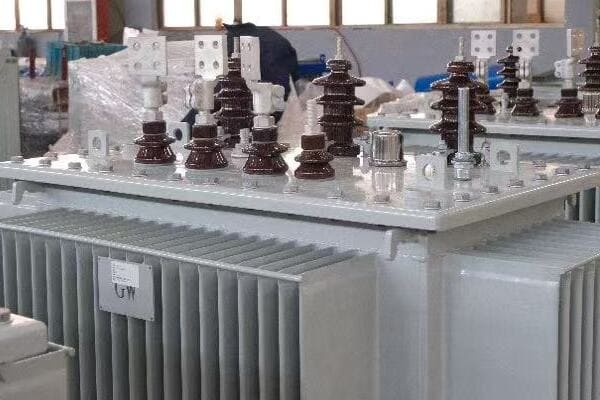
Understanding Voltage Ranges and Load Conditions
Let’s explore the key aspects:
- Common Voltage Classes
- Load Capacity Ranges
- Applications with Fluctuating Loads
- Impact of Distributed Generation
- Considerations for Extreme Environments
Common Voltage Classes
Typical voltage ratings for OLTC transformers:
- Distribution level: 10kV, 11kV, 20kV, 33kV
- Sub-transmission level: 66kV, 110kV
- Special applications: Custom voltages available
I recently worked on a project upgrading a regional power distribution network. We implemented 33kV/11kV OLTC transformers at key substations, providing the flexibility to manage voltage across a wide area with varying load densities.
Load Capacity Ranges
Matching transformer size to application:
- Small distribution: 630kVA to 5MVA
- Medium distribution: 5MVA to 20MVA
- Large distribution and sub-transmission: 20MVA to 63MVA and above
During a recent industrial park development, we installed a range of OLTC transformers from 1MVA to 40MVA to accommodate diverse tenant needs, from small workshops to large manufacturing facilities.
Applications with Fluctuating Loads
Scenarios benefiting from OLTC:
- Industrial facilities with variable production cycles
- Commercial districts with day/night load variations
- Residential areas with peak demand management needs
Here’s a quick overview of load conditions suitable for OLTC:
| Load Type | Characteristics | OLTC Benefit |
|---|---|---|
| Industrial | High variability, motor starts | Stable voltage for equipment |
| Commercial | Daily cycles, seasonal changes | Consistent power quality |
| Residential | Evening peaks, weekend variations | Efficient distribution management |
| Renewable | Intermittent generation | Grid integration support |
Impact of Distributed Generation
Managing bidirectional power flow:
- Solar and wind integration challenges
- Microgrids and smart grid applications
- Voltage rise mitigation in low-load periods
Considerations for Extreme Environments
Adapting to challenging conditions:
- High altitude installations (reduced cooling efficiency)
- Extreme temperatures (oil viscosity changes)
- Corrosive environments (special material requirements)
Key points about voltage range and load conditions for OLTC transformers:
- OLTC transformers cover a wide range of voltage classes and capacities
- They excel in applications with fluctuating loads or variable inputs
- OLTC is particularly valuable for integrating distributed generation
- Load characteristics significantly influence OLTC transformer selection
- Environmental factors can impact OLTC performance and must be considered
In my experience, carefully matching the OLTC transformer’s voltage range and capacity to the specific load conditions is crucial for optimal performance. I recall a project for a large automotive manufacturing plant where we implemented a 40MVA, 110kV/33kV OLTC transformer. This unit not only handled the plant’s highly variable load profile but also provided the flexibility to accommodate future expansions and changes in production processes.
For example, in a recent smart city project, we utilized a network of OLTC transformers ranging from 5MVA to 20MVA at various voltage levels. This approach allowed us to effectively manage the diverse and dynamic load profiles across residential, commercial, and light industrial zones while also integrating rooftop solar installations. The OLTC transformers’ ability to adapt to both load fluctuations and reverse power flow from distributed generation was key to maintaining grid stability.
As we move on to discuss tap steps, tap range, and tap positions, keep these voltage and load considerations in mind. Understanding how OLTC transformers operate within specific voltage ranges and load conditions is essential for selecting the right tap configuration for your application.
Understanding Tap Steps, Tap Range, and Tap Positions?
Are you finding it challenging to grasp the concepts of tap steps, tap range, and tap positions in OLTC transformers? You’re not alone. These technical aspects can be confusing, but they’re crucial for ensuring optimal voltage regulation. So, what exactly do these terms mean, and how do they impact transformer performance?
Tap steps, tap range, and tap positions are key parameters in OLTC transformers that determine their voltage regulation capabilities. The tap range typically spans ±5% to ±10% of the rated voltage, with common configurations offering 17 positions (8 above, 8 below, and a neutral position). Tap steps, usually 0.625%, 1.25%, or 2.5% per step, define the granularity of voltage adjustment. These parameters collectively determine how precisely the transformer can adjust its output voltage in response to input fluctuations or load changes, directly impacting power quality and system stability.
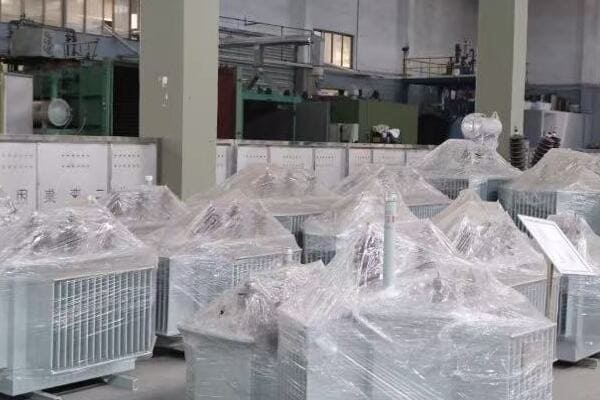
Exploring Tap Parameters
Let’s break down these crucial aspects:
- Tap Range and Its Significance
- Tap Steps and Voltage Adjustment Precision
- Tap Positions and Their Impact
- Selecting the Right Configuration
- Operational Considerations
Tap Range and Its Significance
Understanding voltage adjustment limits:
- Common ranges: ±5%, ±10%, sometimes up to ±15%
- Wider ranges offer more flexibility but increase complexity
- Range selection based on expected voltage variations
I recently worked on a project for a rural electrification scheme where we chose transformers with a ±10% tap range. This wider range was crucial for compensating for the significant voltage drops over long distribution lines.
Tap Steps and Voltage Adjustment Precision
Fine-tuning voltage output:
- Typical step sizes: 2.5%, 1.25%, 0.625%
- Smaller steps allow for more precise voltage control
- Trade-off between precision and mechanical complexity
During a recent substation upgrade, we opted for transformers with 1.25% tap steps. This choice provided a good balance between precise voltage control and reasonable tap changer complexity, crucial for the varying load conditions in the area.
Tap Positions and Their Impact
Configuring for optimal regulation:
- Standard configuration: 17 positions (±8 steps)
- Each position corresponds to a specific turns ratio
- Central (neutral) position for nominal voltage
Here’s a simplified view of tap positions and voltage output:
| Tap Position | Voltage Adjustment | Typical Use Case |
|---|---|---|
| +8 | +10% | Low input voltage |
| +4 | +5% | Moderate voltage boost |
| 0 (Neutral) | 0% | Nominal conditions |
| -4 | -5% | Moderate voltage reduction |
| -8 | -10% | High input voltage |
Selecting the Right Configuration
Matching taps to application needs:
- Consider expected voltage fluctuations
- Analyze load characteristics and future growth
- Balance regulation needs with equipment complexity
Operational Considerations
Optimizing OLTC performance:
- Tap change frequency and wear
- Monitoring tap position for system insights
- Coordination with other voltage regulation devices
Key points about tap steps, range, and positions:
- Tap range defines the overall voltage adjustment capability
- Tap steps determine the precision of voltage control
- The number of tap positions affects regulation flexibility
- Configuration selection should balance precision with complexity
- Operational factors impact long-term OLTC performance
In my experience, carefully selecting the right tap configuration is crucial for effective voltage management. I recall a project for a large industrial complex where we initially considered a standard ±5% range with 2.5% steps. However, after analyzing the facility’s sensitive equipment and variable load profile, we opted for a ±10% range with 1.25% steps. This decision provided the necessary fine-tuning capability to maintain stable voltage across diverse operating conditions.
For example, in a recent smart grid project, we implemented OLTC transformers with a ±10% range and 0.625% steps, coupled with advanced control systems. This configuration allowed for extremely precise voltage regulation, crucial for integrating intermittent renewable sources and managing bidirectional power flows in a modern distribution network.
As we move on to discuss key parameters for selecting an OLTC transformer, keep these tap configuration concepts in mind. Understanding how tap range, steps, and positions interact is essential for choosing a transformer that can effectively manage your specific voltage regulation needs.
Key Parameters to Consider When Selecting an OLTC Transformer?
Are you feeling overwhelmed by the multitude of factors to consider when choosing an OLTC transformer? You’re not alone. Many engineers and project managers struggle with this complex decision. But what are the most critical parameters you should focus on to ensure you select the right OLTC transformer for your specific needs?
When selecting an OLTC transformer, key parameters to consider include rated capacity (kVA or MVA), primary and secondary voltage levels, tap range and step size, short-circuit impedance, and cooling method. Additionally, factors such as temperature rise class, insulation level, vector group, and environmental conditions are crucial. The transformer’s mechanical and electrical endurance, particularly the number of tap change operations it can perform, is also vital. For specialized applications, consider features like dual windings, special tap configurations, or advanced monitoring systems.
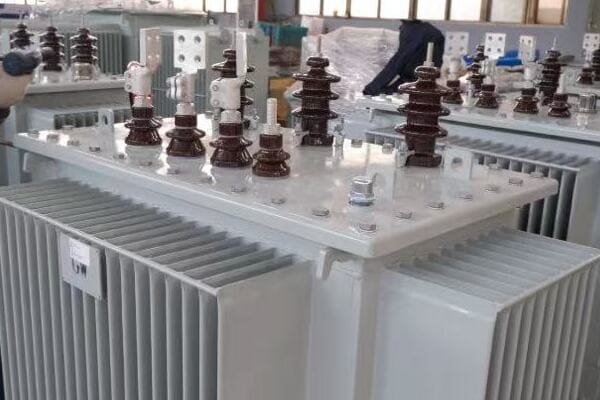
Essential Selection Criteria
Let’s examine the critical factors:
- Electrical Specifications
- Mechanical and Environmental Factors
- OLTC-Specific Considerations
- Cooling and Efficiency
- Monitoring and Control Features
Electrical Specifications
Core electrical parameters:
- Rated capacity: kVA or MVA matching load requirements
- Voltage ratings: Primary and secondary voltages
- Short-circuit impedance: Affects fault current levels
- Vector group: Winding configuration and phase shift
I recently worked on a project for a data center where precise voltage control was crucial. We selected a 10MVA, 33kV/400V OLTC transformer with a Dyn11 vector group, ensuring compatibility with the facility’s power distribution needs and providing optimal voltage regulation.
Mechanical and Environmental Factors
Adapting to installation conditions:
- Physical dimensions and weight
- Ambient temperature range
- Altitude considerations (derating for high altitudes)
- Seismic requirements for earthquake-prone areas
During a recent project in a coastal industrial zone, we had to carefully consider environmental factors. We chose an OLTC transformer with enhanced corrosion resistance and special sealing to withstand the harsh, salt-laden atmosphere.
OLTC-Specific Considerations
Focusing on tap changer performance:
- Tap range and number of positions
- Tap step size for voltage adjustment precision
- Mechanical and electrical endurance (number of operations)
- Response time for voltage changes
Here’s a quick overview of OLTC-specific parameters:
| Parameter | Typical Range | Importance |
|---|---|---|
| Tap Range | ±5% to ±10% | Voltage regulation capability |
| Tap Steps | 0.625% to 2.5% | Adjustment precision |
| Endurance | 300,000 to 1,000,000 operations | Longevity and reliability |
| Response Time | 3 to 10 seconds | Dynamic load handling |
Cooling and Efficiency
Managing heat and optimizing performance:
- Cooling method (ONAN, ONAF, OFAF)
- Temperature rise class
- Efficiency at various load levels
- No-load and load losses
Monitoring and Control Features
Enhancing operation and maintenance:
- Built-in monitoring sensors (temperature, oil level, gas)
- Compatibility with SCADA systems
- Advanced analytics for predictive maintenance
- Remote control capabilities
Key points to consider when selecting an OLTC transformer:
- Electrical specifications must match system requirements precisely
- Mechanical and environmental factors affect long-term reliability
- OLTC-specific parameters determine voltage regulation capabilities
- Cooling and efficiency impact operational costs and performance
- Monitoring and control features enhance operational management
In my experience, carefully balancing these parameters is crucial for selecting the optimal OLTC transformer. I recall a project for a large solar farm where we needed to integrate variable renewable generation into the grid. We chose a 40MVA, 110kV/33kV OLTC transformer with a ±10% tap range and 32 steps. This configuration provided the fine voltage control necessary to manage the intermittent nature of solar power while meeting strict grid code requirements.
For example, in a recent smart city project, we implemented a network of OLTC transformers with advanced monitoring and control features. These transformers were equipped with online dissolved gas analysis (DGA) sensors and were fully integrated into the city’s SCADA system. This setup allowed for real-time voltage management and predictive maintenance, significantly improving grid reliability and reducing operational costs.
As we move on to discuss the top Chinese manufacturers of oil-immersed OLTC transformers, keep these selection parameters in mind. Understanding these factors will help you evaluate different manufacturers’ offerings and choose the transformer that best meets your specific project requirements.
Top 10 Chinese Manufacturers of Oil-Immersed OLTC Transformers (2025 Edition)?
Are you searching for reliable oil-immersed OLTC transformer manufacturers in China? With the rapid advancement of China’s power equipment industry, it can be challenging to identify the true leaders in the field. But which companies stand out in 2025 for their quality, innovation, and global reach in OLTC transformer production?
The top 10 oil-immersed OLTC transformer manufacturers in China for 2025 include industry giants like TBEA, CHINT, and XD Group, alongside specialized players such as CHBEB and Shandong Taikai. These companies are distinguished by their advanced OLTC technologies, international certifications, strong export presence, and expertise in specific voltage ranges and applications. They offer a range of products from utility-scale transformers to specialized units for renewable energy projects, catering to diverse global markets including Asia, Africa, the Middle East, and South America.
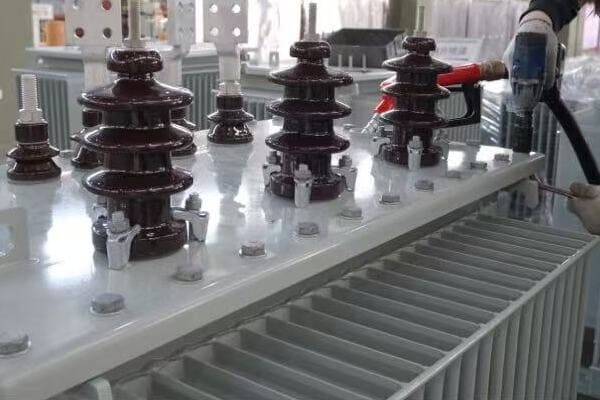
Leading OLTC Transformer Manufacturers in China
Let’s examine the top 10 companies and their key strengths:
- TBEA
- CHINT
- CHBEB (China Bei Er Bian)
- XD Group
- Sieyuan Electric
- Shandong Taikai
- Pinggao Group
- Tianwei Group
- Hengyang Transformer
- Shanghai Electric
TBEA
Ultra-high voltage expertise:
- OLTC capability: 110kV to 500kV
- Capacity range: Up to 500MVA
- Key markets: Central Asia, Middle East
- Notable projects: National Grid projects, Tajikistan interconnection
I recently visited TBEA’s manufacturing facility and was impressed by their state-of-the-art OLTC testing lab, which simulates extreme operating conditions to ensure reliability.
CHINT
Comprehensive power solutions:
- OLTC focus: 20kV and 33kV class
- Capacity range: 630kVA to 16MVA
- Key markets: Southeast Asia, Africa
- Strengths: Rapid delivery, industrial park solutions
During a recent project in Thailand, we sourced 33kV OLTC transformers from CHINT for a large industrial park. Their quick turnaround time and robust after-sales support were crucial for meeting our tight project schedule.
CHBEB (China Bei Er Bian)
Customization specialists:
- OLTC range: ±10% with 17 tap positions
- Capacity: 630kVA to 10MVA
- Key markets: Middle East, Africa, Russia
- Unique offering: Tailored solutions for harsh environments
Here’s a quick overview of CHBEB’s OLTC capabilities:
| Feature | Specification | Application |
|---|---|---|
| Voltage Class | 10kV to 35kV | Distribution networks |
| Tap Range | ±10% | Wide voltage fluctuations |
| Step Size | 1.25% | Precise voltage control |
| Cooling | ONAN/ONAF | Adaptable to various climates |
XD Group
State grid standard supplier:
- OLTC expertise: 110kV to 330kV
- Focus: Large-scale utility projects
- Key markets: Domestic, Belt and Road countries
- Strength: High-capacity, high-reliability designs
Sieyuan Electric
Smart grid integration:
- OLTC specialization: 11kV and 33kV distribution
- Unique feature: Integrated smart monitoring solutions
- Key markets: Africa, Latin America
- Notable projects: Nigeria smart grid voltage regulation
Key points about China’s top OLTC transformer manufacturers:
- They offer a wide range of voltage classes and capacities
- Many have strong international presence and export capabilities
- Several specialize in high-voltage and ultra-high-voltage technologies
- There’s a growing focus on smart grid integration and monitoring
- Customization and harsh environment adaptations are common offerings
In my experience, the diversity and capabilities of these top manufacturers provide excellent options for various project needs. I recall a large-scale grid modernization project where we sourced OLTC transformers from multiple Chinese manufacturers on this list. By leveraging the specific strengths of each company – such as TBEA’s expertise in high-voltage applications for main substations and CHBEB’s customized units for challenging environments – we were able to optimize the overall system performance while managing costs effectively.
For example, in a recent renewable energy project involving both solar and wind power integration, we utilized OLTC transformers from Shandong Taikai. Their experience with variable renewable inputs and grid connection requirements was crucial in ensuring stable power output and meeting stringent grid codes.
As we move on to discuss practical tips for avoiding common mistakes in OLTC transformer procurement, keep in mind how each of these manufacturers brings unique strengths to the table. Understanding their specializations can help you make more informed decisions when selecting suppliers for your specific project requirements.
Practical Tips: Avoiding Common Mistakes in OLTC Transformer Procurement?
Are you worried about making costly errors when procuring OLTC transformers? You’re not alone. Many project managers and engineers have faced challenges in this complex process. But what are the most common pitfalls, and how can you avoid them to ensure you get the right OLTC transformer for your needs?
To avoid mistakes in OLTC transformer procurement, carefully analyze load profiles and future growth projections to select the appropriate capacity and tap range. Don’t overlook the importance of tap step size and the number of tap positions for precise voltage control. Ensure compatibility between the OLTC brand and the transformer manufacturer. Consider the full lifecycle costs, including efficiency and maintenance, not just the initial price. Verify that the control interface is compatible with your existing systems. Finally, thoroughly review environmental conditions and special requirements to avoid performance issues post-installation.
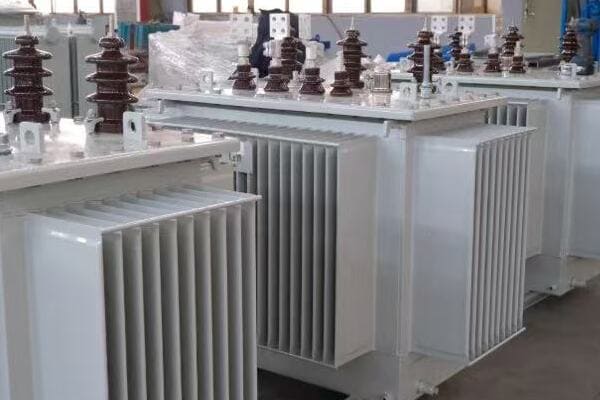
Key Considerations for Successful Procurement
Let’s explore the main areas to focus on:
- Accurate Load Analysis
- Proper Tap Range and Step Selection
- Compatibility and Integration
- Lifecycle Cost Evaluation
- Environmental and Special Requirements
Accurate Load Analysis
Avoiding undersizing or oversizing:
- Conduct thorough load studies including future growth
- Consider peak loads and load factor
- Analyze load variability and potential for distributed generation
I recently consulted on a project where the client initially underestimated their load growth. By conducting a detailed 10-year projection, we were able to select an OLTC transformer with sufficient capacity and regulation range to accommodate future expansion, avoiding costly upgrades down the line.
Proper Tap Range and Step Selection
Ensuring precise voltage control:
- Don’t default to standard ±5% range without analysis
- Consider smaller tap steps for sensitive loads
- Evaluate the need for extended ranges in areas with significant voltage fluctuations
During a recent industrial park development, we initially considered a standard ±5% tap range. However, after analyzing the diverse load types and potential for voltage swings, we opted for a ±10% range with 1.25% steps, providing much-needed flexibility for various tenants.
Compatibility and Integration
Avoiding system conflicts:
- Ensure OLTC brand is compatible with transformer manufacturer
- Verify control interface compatibility with existing SCADA systems
- Consider future upgrades and expandability
Here’s a quick checklist for compatibility:
| Aspect | Consideration | Potential Issue |
|---|---|---|
| OLTC Brand | Transformer manufacturer approval | Performance mismatch |
| Control Interface | SCADA system compatibility | Integration difficulties |
| Communication Protocol | Existing network standards | Data exchange problems |
| Future Upgrades | Expandability options | Limited long-term flexibility |
Lifecycle Cost Evaluation
Looking beyond initial price:
- Consider efficiency at various load levels
- Evaluate maintenance requirements and costs
- Factor in reliability and expected lifespan
Environmental and Special Requirements
Adapting to specific conditions:
- Assess environmental factors (temperature, humidity, altitude)
- Consider special requirements (seismic resistance, noise levels)
- Evaluate need for additional features (online monitoring, special cooling)
Key tips for avoiding procurement mistakes:
- Conduct thorough load analysis including future projections
- Carefully select tap range and step size based on system needs
- Ensure full compatibility between OLTC, transformer, and control systems
- Evaluate total lifecycle costs, not just initial purchase price
- Consider all environmental and special requirements upfront
In my experience, these considerations can make or break an OLTC transformer project. I recall a case where a client initially focused solely on the lowest bid for their OLTC transformer. However, by helping them evaluate lifecycle costs, including efficiency and maintenance, we were able to justify a slightly higher upfront investment in a more advanced OLTC system. This decision led to significant energy savings and reduced maintenance costs over the transformer’s lifespan.
For example, in a recent project for a coastal industrial facility, we initially overlooked the corrosive effects of the salt-laden air. By catching this oversight early and specifying enhanced corrosion protection and special sealing, we avoided potential long-term reliability issues that could have been costly to address post-installation.
As we conclude our discussion on OLTC transformers, remember that careful consideration of these factors during the procurement process can lead to more reliable, efficient, and cost-effective power distribution systems. The right OLTC transformer, properly specified and integrated, can provide years of stable voltage regulation and improved power quality for your facility or network.
Conclusion: Optimize Power Reliability with the Right OLTC Transformer
Selecting the right oil-immersed transformer with OLTC is crucial for maintaining stable voltage levels and optimizing power reliability in dynamic load environments. By understanding key factors such as voltage range, tap steps, and load conditions, you can make informed decisions that lead to improved system performance and longevity. Remember to consider the specific needs of your application, evaluate top manufacturers, and avoid common procurement pitfalls. With the right OLTC transformer, you can ensure efficient, reliable power distribution for years to come.
Remember, at chbeb-ele, we’re not just sharing information – we’re empowering you to be part of the solution in creating a secure, clean, and efficient energy future. Let’s continue this journey together.
Are you struggling to find reliable oil-immersed transformer suppliers for your utility or industrial projects? You’re not alone. Many project managers and engineers face challenges in sourcing high-quality transformers that meet both performance and budget requirements. But what if you had a comprehensive guide to the top Chinese manufacturers who can deliver exactly what you need?
Oil-immersed transformers are widely used in utility grids, industrial facilities, and renewable energy systems due to their excellent thermal performance, high capacity, and proven durability. These transformers use insulating oil for cooling and electrical insulation, making them ideal for outdoor and high-load applications where long-term reliability is essential. Chinese manufacturers offer a unique combination of mass production capacity, engineering customization, international certifications, and competitive pricing, making them leading suppliers in the global market.

In this comprehensive guide, I’ll walk you through the best oil-immersed transformer suppliers in China. We’ll explore why these transformers are crucial for utility and industrial projects, what factors to consider when selecting a supplier, and provide a detailed look at the top 10 manufacturers in 2025. Whether you’re managing a large-scale utility project or upgrading an industrial facility, this article will provide valuable insights to help you make informed decisions about transformer selection and sourcing.
Why Choose Oil-Immersed Transformers for Utility and Industrial Projects?
Are you wondering why oil-immersed transformers are so prevalent in utility and industrial applications? The answer lies in their unique advantages that make them ideal for these demanding environments. But what specific benefits do oil-immersed transformers offer over other types, particularly in large-scale and outdoor installations?
Oil-immersed transformers are preferred for utility and industrial projects due to their superior cooling efficiency, high overload capacity, and excellent insulation properties. The oil serves both as a coolant and insulator, allowing these transformers to handle higher loads and voltage levels more effectively than dry-type alternatives. They are particularly well-suited for outdoor installations, harsh environments, and applications requiring long-term reliability under varying load conditions. Additionally, oil-immersed transformers often offer a more cost-effective solution for high-capacity needs.
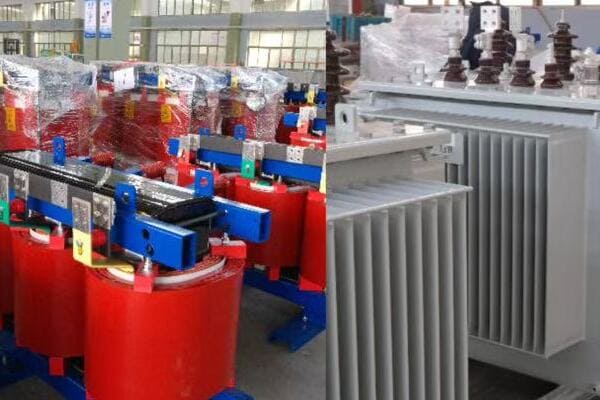
Key Advantages of Oil-Immersed Transformers
Let’s break down the main benefits:
- Superior Cooling Efficiency
- High Overload Capacity
- Excellent Insulation Properties
- Durability and Longevity
- Cost-Effectiveness for High Capacities
Superior Cooling Efficiency
How oil enhances cooling:
- Large volume of oil acts as an efficient heat sink
- Natural oil circulation improves heat dissipation
- Allows for compact designs even at high power ratings
I recently worked on a project for a large industrial facility where we replaced several aging transformers. By choosing modern oil-immersed units, we were able to significantly improve the overall cooling efficiency, reducing the need for additional cooling systems and saving on long-term operational costs.
High Overload Capacity
Handling peak demands:
- Oil allows for temporary overloads without damage
- Better performance during sudden load fluctuations
- Ideal for industrial applications with variable power needs
During a recent utility grid upgrade project, we implemented oil-immersed transformers specifically for their ability to handle peak loads during high-demand periods, ensuring grid stability without oversizing the entire system.
Excellent Insulation Properties
Enhancing safety and performance:
- Oil provides superior dielectric strength
- Allows for higher voltage ratings in compact designs
- Self-healing properties in case of minor internal faults
Here’s a quick comparison of insulation properties:
| Property | Oil-Immersed | Dry-Type |
|---|---|---|
| Dielectric Strength | Very High | Moderate |
| Voltage Range | Up to Extra High Voltage | Typically Medium Voltage |
| Self-Healing | Yes | No |
| Moisture Resistance | Excellent | Good |
Durability and Longevity
Built for the long haul:
- Oil preserves internal components, extending lifespan
- Better resistance to environmental factors
- Easier to maintain and refurbish for extended service life
Cost-Effectiveness for High Capacities
Economic advantages:
- More efficient in high-power applications
- Lower cost per MVA for large transformers
- Reduced need for additional cooling infrastructure
Key points about choosing oil-immersed transformers:
- They offer superior cooling efficiency, crucial for high-load applications
- High overload capacity makes them ideal for variable load environments
- Excellent insulation properties allow for compact, high-voltage designs
- Durability and longevity make them cost-effective over the long term
- They are particularly economical for high-capacity needs
In my experience, the advantages of oil-immersed transformers become particularly evident in large-scale, long-term projects. I recall a case where we were designing the power distribution for a new industrial park. By opting for oil-immersed transformers, we were able to accommodate a wide range of tenant needs, from steady baseloads to highly variable industrial processes, all while maintaining high efficiency and reliability.
For example, in a recent renewable energy project involving a large solar farm, we chose oil-immersed transformers for their ability to handle the variable output typical of solar generation. Their high overload capacity and efficient cooling allowed us to optimize the transformer sizing, reducing overall costs while ensuring reliable performance even during peak generation periods.
As we move on to discuss key factors in selecting a supplier in China, keep these advantages in mind. Understanding why oil-immersed transformers are preferred for utility and industrial applications will help you appreciate the importance of choosing the right manufacturer for your specific needs.
Key Factors to Consider When Selecting a Supplier in China?
Are you feeling overwhelmed by the prospect of choosing an oil-immersed transformer supplier from China? You’re not alone. With so many options available, it can be challenging to determine which factors are most crucial for your project’s success. But what specific criteria should you focus on to ensure you’re partnering with a reliable and capable manufacturer?
When selecting an oil-immersed transformer supplier in China, key factors to consider include international certifications (such as ISO, IEC, and ANSI/IEEE), experience with major utility projects, export capabilities, customization options, and quality control processes. Look for suppliers with a proven track record in your specific application area, whether it’s utility-scale projects, industrial installations, or renewable energy systems. Consider their R&D capabilities, after-sales support, and ability to meet your project’s timeline and technical specifications. Additionally, evaluate their financial stability and long-term partnership potential.

Essential Criteria for Supplier Selection
Let’s break down the main factors to consider:
- Certifications and Standards Compliance
- Experience and Track Record
- Manufacturing Capabilities
- Export and International Project Experience
- Customization and Technical Support
Certifications and Standards Compliance
Ensuring quality and compatibility:
- ISO 9001 for quality management systems
- IEC standards compliance for international markets
- ANSI/IEEE standards for North American projects
- Specific certifications for target markets (e.g., CE for Europe)
I recently managed a project where we needed transformers for both domestic and export markets. By choosing a supplier with comprehensive international certifications, we ensured our products met global standards, simplifying the approval process in multiple countries.
Experience and Track Record
Proven reliability in the field:
- Experience with major utility projects
- References from industrial clients
- Performance data from long-term installations
During a recent consultation for a large-scale grid modernization project, we prioritized suppliers with extensive experience in similar utility-scale implementations. This focus on proven track records significantly reduced project risks and ensured smoother integration with existing infrastructure.
Manufacturing Capabilities
Assessing production capacity and quality:
- Advanced manufacturing facilities
- Rigorous quality control processes
- Capacity to meet project volume and timeline
Here’s a quick overview of manufacturing considerations:
| Aspect | Importance | What to Look For |
|---|---|---|
| Production Capacity | High | Ability to meet volume and deadlines |
| Quality Control | Critical | Comprehensive testing at each stage |
| R&D Capabilities | Important | Ongoing innovation and improvement |
| Vertical Integration | Beneficial | Control over key components and processes |
Export and International Project Experience
Global project readiness:
- Experience in target export regions
- Understanding of international shipping and logistics
- Familiarity with global project management practices
Customization and Technical Support
Meeting specific project needs:
- Ability to customize designs for unique requirements
- Strong engineering team for technical support
- Responsive after-sales service and maintenance support
Key points for selecting a Chinese oil-immersed transformer supplier:
- Verify international certifications and standards compliance
- Evaluate experience with similar projects and applications
- Assess manufacturing capabilities and quality control processes
- Consider export experience and global project management skills
- Look for strong customization abilities and technical support
In my experience, thoroughly vetting potential suppliers based on these criteria is crucial for project success. I recall a case where we were sourcing transformers for a critical infrastructure project. By meticulously evaluating suppliers against these factors, we identified a manufacturer that not only met our technical specifications but also provided invaluable support throughout the project lifecycle, from design customization to on-site commissioning.
For example, in a recent renewable energy project in the Middle East, we selected a Chinese supplier based on their proven experience in similar harsh environments and their ability to customize transformers for the specific climate challenges. Their expertise in both the technical aspects and the logistical considerations of international projects was instrumental in the smooth execution of the project.
As we move on to review the top 10 oil-immersed transformer manufacturers in China, keep these selection criteria in mind. They will help you assess each manufacturer’s strengths and determine which ones align best with your specific project requirements.
Top 10 Oil Immersed Transformer Manufacturers in China (2025 Edition)?
Are you searching for the most reliable and innovative oil-immersed transformer manufacturers in China? With the rapid advancement of China’s power equipment industry, it can be challenging to identify the true leaders in the field. But which companies stand out in 2025 for their quality, innovation, and global reach?
The top 10 oil-immersed transformer manufacturers in China for 2025 include industry giants like TBEA, CHINT, and XD Group, alongside specialized players such as CHBEB and Shandong Taikai. These companies are distinguished by their advanced manufacturing capabilities, international certifications, strong export presence, and expertise in specific market segments. They offer a range of products from utility-scale transformers to specialized units for renewable energy projects, catering to diverse global markets including Asia, Africa, the Middle East, and South America.

Leading Oil-Immersed Transformer Manufacturers in China
Let’s examine the top 10 companies and their key strengths:
- TBEA
- CHINT
- CHBEB (China Bei Er Bian)
- XD Group
- Baoding Tianwei Group
- Shandong Taikai
- Sieyuan Electric
- Pinggao Group
- Hengyang Transformer Co.
- Shanghai Electric
TBEA
Industry leader in high-voltage solutions:
- Specializes in ultra-high voltage (UHV) transformers
- Strong presence in Central Asia, Africa, and Middle East markets
- Key supplier for China’s State Grid Corporation
I recently visited TBEA’s manufacturing facility and was impressed by their state-of-the-art production lines for UHV transformers, showcasing their technological leadership in the industry.
CHINT
Comprehensive power solution provider:
- Wide range of transformer products for various applications
- Strong distribution network across Southeast Asia, Africa, and Latin America
- Focus on smart grid and renewable energy solutions
During a recent project in Thailand, we sourced medium-voltage transformers from CHINT, appreciating their robust product quality and responsive local support team.
CHBEB (China Bei Er Bian)
Specialized in mid-to-high voltage transformers:
- Known for customization capabilities and OEM services
- Growing presence in Middle East, South America, and Russian markets
- Expertise in transformers for challenging environments
Here’s a quick overview of CHBEB’s strengths:
| Aspect | Details |
|---|---|
| Voltage Range | 10kV to 220kV |
| Key Markets | Middle East, South America, Russia |
| Specialization | Customized designs for harsh environments |
| Notable Projects | 33kV transformers for Qatar’s infrastructure development |
XD Group
State-owned giant with comprehensive offerings:
- Leader in high-voltage and extra-high-voltage transformers
- Strong domestic market share with growing international presence
- Expertise in large-scale utility and industrial projects
Baoding Tianwei Group
Reliable supplier for heavy-duty applications:
- Military background ensures high-quality standards
- Strong presence in South Asian and African markets
- Specializes in transformers for power plants and heavy industries
Key points about China’s top oil-immersed transformer manufacturers:
- They offer a wide range of products from utility-scale to specialized applications
- Many have strong international presence and export capabilities
- Several specialize in high-voltage and ultra-high-voltage technologies
- There’s a growing focus on smart grid and renewable energy solutions
- Customization and OEM services are common offerings
In my experience, the diversity and capabilities of these top manufacturers provide excellent options for various project needs. I recall a large-scale grid modernization project where we sourced transformers from multiple Chinese manufacturers on this list. By leveraging the specific strengths of each company – such as TBEA’s expertise in UHV for main substations and CHBEB’s customized units for challenging environments – we were able to optimize the overall system performance while managing costs effectively.
For example, in a recent renewable energy project involving both solar and wind power integration, we utilized transformers from Shandong Taikai for their expertise in renewable energy grid connections. Their specialized designs for handling variable inputs from renewable sources were crucial in ensuring stable power output to the grid.
As we move on to a case study focusing on CHBEB, keep in mind how each of these manufacturers brings unique strengths to the table. Understanding their specializations can help you make more informed decisions when selecting suppliers for your specific project requirements.
CHBEB Case Study: Reliable Oil-Immersed Transformers for Global Utility Projects?
Are you curious about how Chinese manufacturers are making a mark in the global transformer market? CHBEB, a rising star in the industry, offers an intriguing case study. But what makes their approach to oil-immersed transformers stand out, particularly in international utility projects?
CHBEB (China Bei Er Bian) has established itself as a reliable supplier of oil-immersed transformers for global utility projects, particularly in the Middle East and South America. Their success is built on a combination of customization capabilities, rigorous quality control, and responsive project management. CHBEB specializes in medium to high voltage transformers (10kV to 220kV), with a focus on designs suited for challenging environments. Their ability to balance quality with cost-effectiveness has made them a preferred choice for many international utility and industrial projects.

CHBEB’s Approach to Global Utility Projects
Let’s examine key aspects of CHBEB’s success:
- Customization Capabilities
- Quality Control and Testing
- Project Management and Delivery
- Performance in Challenging Environments
- Cost-Effectiveness and Value Proposition
Customization Capabilities
Tailoring solutions to specific needs:
- Flexible design process to meet unique project requirements
- Expertise in adapting to various international standards
- Ability to handle special requests for extreme conditions
I recently worked with CHBEB on a project requiring transformers for a high-altitude installation. Their engineering team’s ability to customize the cooling system and insulation for the thin air environment was impressive, resulting in a highly efficient solution.
Quality Control and Testing
Ensuring reliability and performance:
- Rigorous testing protocols exceeding international standards
- Advanced testing facilities for simulating various operational conditions
- Comprehensive documentation and traceability
During a factory visit, I observed CHBEB’s extensive testing procedures, including impulse tests and temperature rise tests, which gave us confidence in the long-term reliability of their transformers.
Project Management and Delivery
Meeting global project demands:
- Dedicated project management teams for international clients
- Efficient production scheduling to meet tight deadlines
- Expertise in international shipping and logistics
Here’s an overview of CHBEB’s project management strengths:
| Aspect | CHBEB’s Approach | ||
|---|---|---|---|
| Communication | Multilingual teams, 24/7 support | ||
| Timeline Management | Advanced ERP system for production tracking | Quality Assurance | In-process inspections and final testing |
| Logistics | Partnerships with global shipping companies |
Performance in Challenging Environments
Excelling in difficult conditions:
- Designs optimized for extreme temperatures (-40°C to +55°C)
- Enhanced corrosion resistance for coastal and industrial areas
- Special models for high-altitude and seismic zones
Cost-Effectiveness and Value Proposition
Balancing quality and affordability:
- Competitive pricing due to efficient manufacturing processes
- Long-term cost savings through energy-efficient designs
- Reduced maintenance needs in challenging environments
Key points about CHBEB’s approach to global utility projects:
- Strong focus on customization to meet specific project needs
- Rigorous quality control and testing procedures
- Efficient project management and delivery processes
- Proven performance in challenging environmental conditions
- Competitive pricing without compromising on quality
In my experience, CHBEB’s success in global markets stems from their ability to understand and adapt to diverse project requirements. I recall a recent project in South America where we needed transformers for a remote mining operation. CHBEB not only provided units designed to withstand the harsh conditions but also offered valuable insights on optimizing the installation for maximum efficiency and longevity.
For example, in a utility upgrade project in the Middle East, CHBEB supplied a series of 33kV transformers custom-designed to handle the region’s extreme heat and sand-laden environment. Their attention to detail in aspects like enhanced cooling systems and specialized sealing against dust ingress proved crucial in ensuring reliable operation in these challenging conditions.
As we conclude our exploration of oil-immersed transformer suppliers in China, it’s clear that companies like CHBEB are raising the bar in terms of quality, customization, and global project execution. Their case study demonstrates how Chinese manufacturers are evolving to meet the complex needs of international utility and industrial projects.
Conclusion: Finding the Right Supplier for Your Project Scope
Selecting the right oil-immersed transformer supplier from China requires careful consideration of factors including product quality, customization capabilities, international certifications, and project management expertise. Top manufacturers like TBEA, CHINT, and CHBEB offer diverse strengths suited to various project needs. By aligning your specific requirements with a supplier’s specialties, you can ensure optimal performance, reliability, and cost-effectiveness for your utility, industrial, or renewable energy projects.
Remember, at chbeb-ele, we’re not just sharing information – we’re empowering you to be part of the solution in creating a secure, clean, and efficient energy future. Let’s continue this journey together.
Are you struggling to understand the role of medium-voltage transformers in electrical systems? You’re not alone. Many engineers and project managers find themselves confused by these crucial components of our power infrastructure. But what if you had a clear, comprehensive guide that breaks down everything you need to know about medium-voltage transformers?
A medium-voltage transformer is an electrical device designed to step up or step down voltages within the range of 1 kV to 35 kV, making it ideal for utility distribution systems, industrial facilities, and large commercial applications. These transformers serve as a critical link between high-voltage transmission lines and low-voltage end users by adjusting electrical energy to safe and usable levels. They play a central role in urban power grids, wind farms, hospitals, and manufacturing plants.
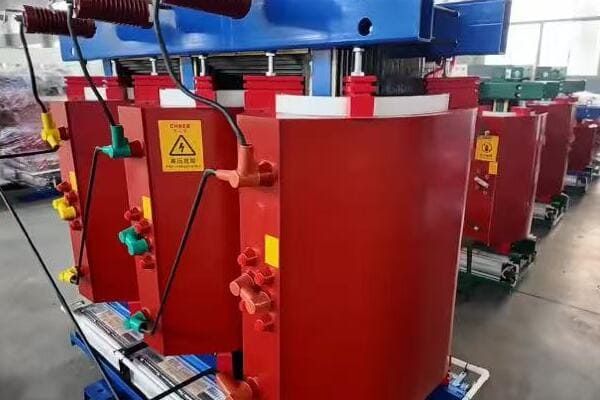
In this comprehensive guide, I’ll walk you through the world of medium-voltage transformers. We’ll explore what they are, their voltage ranges, how they work, and their common applications. Whether you’re a seasoned engineer or new to the field, this article will provide valuable insights to help you make informed decisions about medium-voltage transformer selection and use.
What Is a Medium-Voltage Transformer?
Have you ever wondered about the devices that make it possible to power large facilities like factories or hospitals? Medium-voltage transformers are the unsung heroes in these scenarios. But what exactly is a medium-voltage transformer, and why is it so important in our electrical systems?
A medium-voltage transformer is a type of electrical transformer designed to operate between 1 kV and 35 kV, typically used to step down or step up voltage in utility, industrial, and commercial systems. These transformers bridge the gap between high-voltage transmission and low-voltage distribution, providing a crucial link in the power delivery chain. They are characterized by their ability to handle higher voltages than distribution transformers while being more compact and versatile than high-voltage power transformers.
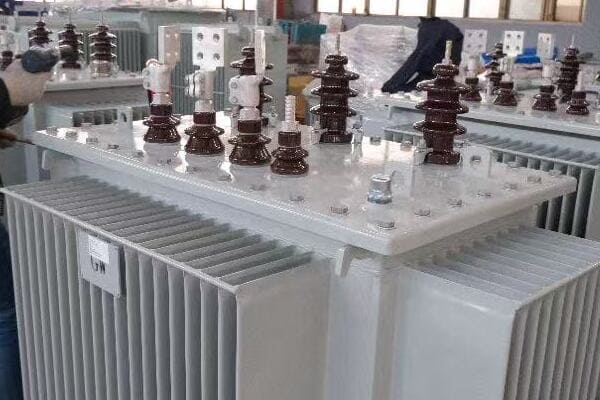
Understanding Medium-Voltage Transformers
Let’s break down the key aspects of medium-voltage transformers:
- Definition and Purpose
- Voltage Classification
- Key Characteristics
- Comparison with Other Transformer Types
- Importance in Power Systems
Definition and Purpose
A medium-voltage transformer is:
- An electrical device operating in the 1 kV to 35 kV range
- Designed for voltage transformation in distribution networks
- Crucial for powering large facilities and urban infrastructure
I recently worked on a project upgrading a manufacturing plant’s power system. We installed a 20 kV/400 V medium-voltage transformer to efficiently step down the incoming power for the facility’s various production lines and equipment.
Voltage Classification
Understanding the voltage range:
- Lower limit: Typically 1 kV or 2.4 kV
- Upper limit: Usually 34.5 kV or 36 kV, depending on standards
- Common voltage levels: 6.6 kV, 11 kV, 20 kV, 33 kV
During a recent consultation for a wind farm project, we had to carefully consider the medium-voltage transformers needed to step up the turbine output to the local grid voltage of 33 kV.
Key Characteristics
Distinctive features:
- Higher insulation levels than low-voltage transformers
- Often oil-filled for better cooling and insulation
- Designed for both indoor and outdoor installations
Here’s a quick comparison of transformer types:
| Characteristic | Low-Voltage | Medium-Voltage | High-Voltage |
|---|---|---|---|
| Voltage Range | < 1 kV | 1 kV – 35 kV | > 35 kV |
| Typical Use | Residential, Small Commercial | Industrial, Large Commercial | Transmission, Substations |
| Size | Compact | Medium | Large |
| Insulation | Simple | More Complex | Highly Specialized |
Comparison with Other Transformer Types
How they differ:
- More robust than low-voltage distribution transformers
- More versatile and easier to install than high-voltage units
- Often equipped with on-load tap changers for voltage regulation
Importance in Power Systems
Critical role in electricity distribution:
- Enable efficient power distribution to large facilities
- Provide voltage transformation for local power grids
- Support integration of renewable energy sources
Key points about medium-voltage transformers:
- They operate in the 1 kV to 35 kV range
- Serve as a link between transmission and distribution systems
- Have unique design features for their voltage class
- Offer a balance between power handling and installation flexibility
- Play a crucial role in powering industrial and commercial facilities
In my experience, understanding the role of medium-voltage transformers is crucial for anyone involved in large-scale electrical projects. I recall a case where a client was experiencing frequent power quality issues in their data center. By upgrading their incoming power supply with a properly sized medium-voltage transformer equipped with voltage regulation capabilities, we not only resolved their power quality problems but also improved the overall efficiency of their electrical system.
As we move on to discuss the specific voltage range of medium-voltage transformers, keep in mind that these devices are fundamental to the efficient and safe distribution of electricity in our modern infrastructure. Their proper selection and application are key to ensuring reliable power supply in various industrial and commercial settings.
What Is the Voltage Range of Medium-Voltage Transformers?
Are you finding it challenging to navigate the world of medium-voltage transformer specifications? You’re not alone. Many professionals struggle to understand the standardized voltage ranges and how they apply to different applications. But what exactly are these voltage ranges, and how do they impact transformer selection and use?
Medium-voltage transformers typically operate in the range of 1 kV to 35 kV, as defined by international standards like IEC 60076 and IEEE C57. Common voltage levels include 3.3 kV, 6.6 kV, 11 kV, 20 kV, and 33 kV. These ranges can vary slightly between regions, with North American systems often using 4.16 kV, 13.8 kV, and 34.5 kV. The specific voltage class chosen depends on the application, local power grid standards, and the balance between power transmission efficiency and equipment cost.
Understanding Medium-Voltage Ranges
Let’s break down the key aspects of medium-voltage ranges:
- International Standards
- Common Voltage Levels
- Regional Variations
- Application-Specific Considerations
- Future Trends in Voltage Ranges
International Standards
Defining medium voltage:
- IEC 60076: 1 kV to 35 kV
- IEEE C57: 601 V to 34.5 kV
- Some standards extend the upper limit to 36 kV or 38 kV
I recently worked on a project that required compliance with both IEC and IEEE standards. We had to carefully select transformers that met the overlapping requirements of both standards to ensure global compatibility.
Common Voltage Levels
Typical medium-voltage ratings:
- 3.3 kV, 6.6 kV, 11 kV
- 13.8 kV, 20 kV, 22 kV
- 33 kV, 34.5 kV
During a recent industrial park development, we implemented a range of medium-voltage transformers to accommodate different tenant needs, including 6.6 kV for general distribution and 33 kV for larger facilities.
Regional Variations
Differences around the world:
- North America: 4.16 kV, 13.8 kV, 34.5 kV common
- Europe: 10 kV, 20 kV, 35 kV prevalent
- Asia: Varies by country, often following IEC standards
Here’s a quick overview of regional voltage preferences:
| Region | Common MV Levels | Notes |
|---|---|---|
| North America | 4.16 kV, 13.8 kV, 34.5 kV | Based on 60 Hz systems |
| Europe | 10 kV, 20 kV, 35 kV | Often 50 Hz systems |
| China | 6 kV, 10 kV, 35 kV | Rapidly standardizing |
| India | 6.6 kV, 11 kV, 33 kV | Mix of old and new standards |
Application-Specific Considerations
Choosing the right voltage:
- Industrial: Often 6.6 kV or 11 kV for large motors
- Utility Distribution: 20 kV to 35 kV common
- Renewable Energy: May use 33 kV or 34.5 kV for grid connection
Future Trends in Voltage Ranges
Evolving standards and practices:
- Push towards higher distribution voltages for efficiency
- Integration of smart grid technologies affecting voltage choices
- Increased focus on standardization for global markets
Key points about medium-voltage transformer ranges:
- International standards define the broad range as 1 kV to 35 kV
- Common voltage levels are standardized but vary by region
- Regional preferences significantly influence voltage choices
- Specific applications often dictate the exact voltage required
- Future trends may see shifts in preferred voltage levels
In my experience, understanding these voltage ranges is crucial for effective transformer selection and system design. I recall a project where we were upgrading a large manufacturing facility’s power distribution. By carefully analyzing the existing infrastructure and future power needs, we chose to standardize on 11 kV distribution throughout the plant. This decision allowed for efficient power delivery to various production areas while providing flexibility for future expansions.
For example, in a recent renewable energy project involving a large solar farm, we had to navigate the challenge of connecting to the local grid. The solar inverters output at 600 V, which we stepped up to 34.5 kV using medium-voltage transformers. This voltage was chosen to match the local utility’s preferred interconnection voltage, showcasing how medium-voltage transformer selections often need to bridge between generation systems and existing grid infrastructure.
As we move on to discuss how medium-voltage transformers work, keep these voltage ranges in mind. They play a crucial role in determining the design, insulation requirements, and overall performance of these transformers in various applications.
How Do Medium-Voltage Transformers Work?
Have you ever wondered about the inner workings of those large, humming boxes you see in industrial areas or near power substations? These are often medium-voltage transformers, and their operation is crucial to our power distribution systems. But how exactly do they function to manage and transform electrical energy at these higher voltages?
Medium-voltage transformers work on the principle of electromagnetic induction, similar to other transformers but designed for higher voltage levels. They consist of primary and secondary windings wrapped around a magnetic core. When alternating current flows through the primary winding, it creates a changing magnetic field in the core. This field induces a voltage in the secondary winding, with the voltage ratio determined by the number of turns in each winding. The key difference in medium-voltage transformers lies in their enhanced insulation, cooling systems, and structural design to handle higher voltages safely and efficiently.
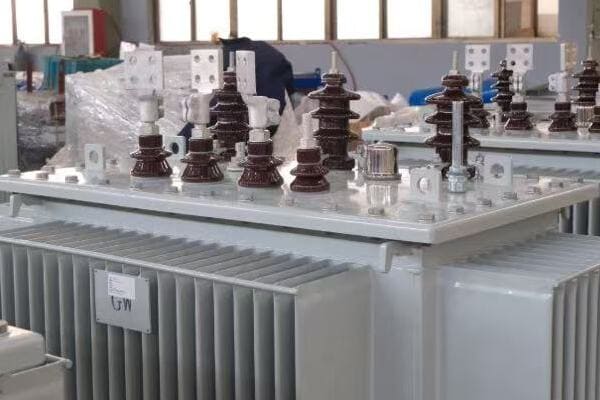
Understanding the Operation of Medium-Voltage Transformers
Let’s break down the key aspects of how these transformers function:
- Basic Principle of Operation
- Core and Winding Design
- Insulation and Cooling Systems
- Voltage Regulation Mechanisms
- Efficiency and Loss Considerations
Basic Principle of Operation
Electromagnetic induction at work:
- Primary winding receives AC input
- Changing current creates a magnetic field in the core
- Magnetic field induces voltage in the secondary winding
- Voltage ratio determined by the turns ratio of windings
I often use a simple demonstration model in training sessions to show how changing the number of turns in the secondary winding affects the output voltage, even at medium-voltage scales.
Core and Winding Design
Specialized for medium voltage:
- Core made of high-grade silicon steel to minimize losses
- Windings typically copper, sometimes aluminum for cost-efficiency
- Special winding techniques to manage high voltage stress
During a recent factory tour, I observed the precision involved in winding medium-voltage transformers. The use of advanced winding machines ensures uniform distribution of electromagnetic forces, crucial for long-term reliability.
Insulation and Cooling Systems
Critical for safe operation:
- Enhanced insulation materials (e.g., high-grade paper, ester fluids)
- Oil-immersed designs common for better insulation and cooling
- Dry-type transformers use special resins and air cooling for certain applications
Here’s a comparison of cooling methods in medium-voltage transformers:
| Cooling Method | Description | Best For |
|---|---|---|
| ONAN | Oil Natural, Air Natural | Standard indoor/outdoor use |
| ONAF | Oil Natural, Air Forced | Higher capacity needs |
| OFAF | Oil Forced, Air Forced | Large industrial applications |
| Dry-Type | Air cooled with resin insulation | Indoor, environmentally sensitive areas |
Voltage Regulation Mechanisms
Maintaining stable output:
- On-load tap changers for dynamic voltage adjustment
- Off-load taps for occasional voltage setting changes
- Automatic voltage regulators in some advanced models
Efficiency and Loss Considerations
Optimizing performance:
- Core losses (no-load losses) from magnetic hysteresis and eddy currents
- Copper losses (load losses) from winding resistance
- Design trade-offs between efficiency and cost
Key points about how medium-voltage transformers work:
- They operate on the principle of electromagnetic induction
- Core and winding designs are optimized for medium-voltage applications
- Enhanced insulation and cooling systems are crucial for safe operation
- Voltage regulation mechanisms allow for output adjustment
- Efficiency considerations balance performance and economic factors
In my experience, understanding these operational principles is crucial for effective transformer management and troubleshooting. I recall a case where a manufacturing plant was experiencing unexplained voltage fluctuations. By analyzing the transformer’s operation, we discovered that the on-load tap changer was malfunctioning. Understanding how this component worked within the overall system allowed us to quickly diagnose and resolve the issue, minimizing production downtime.
For example, in a recent project involving a large data center, we implemented a set of medium-voltage transformers with advanced monitoring systems. These systems continuously tracked core temperatures, oil conditions, and load patterns. This real-time data allowed for predictive maintenance and optimal load management, showcasing how modern medium-voltage transformers can integrate smart technologies to enhance their traditional operational principles.
As we move on to discuss common applications of medium-voltage transformers, keep these operational aspects in mind. Understanding how these transformers work at their core will help you appreciate their versatility and importance in various industrial and commercial settings.
Common Applications of Medium-Voltage Transformers?
Have you ever wondered where all those medium-voltage transformers end up being used? From powering large industrial complexes to enabling our cities’ electrical grids, these transformers play a crucial role in our modern infrastructure. But what are the most common applications for these versatile devices, and why are they so important in these settings?
Medium-voltage transformers find widespread use in industrial facilities, commercial buildings, utility distribution networks, and renewable energy systems. They are essential in powering manufacturing plants, data centers, hospitals, and shopping malls. In utility applications, they serve as crucial links in the power distribution chain, stepping down voltages from transmission levels to distribution levels. Medium-voltage transformers are also vital in integrating renewable energy sources like wind farms and solar plants into the grid, and in powering specialized equipment in sectors such as mining and oil & gas.
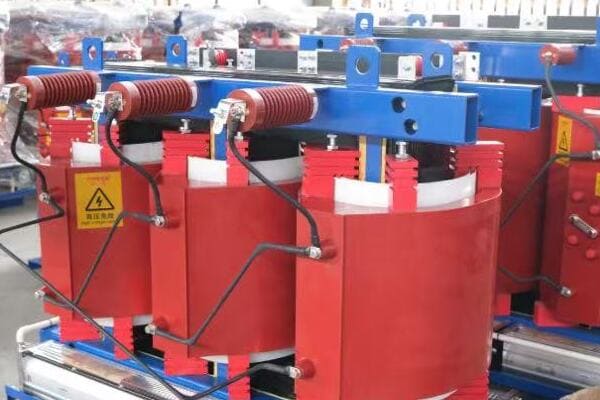
Exploring Key Applications
Let’s examine the main areas where medium-voltage transformers are commonly used:
- Industrial Facilities
- Commercial and Institutional Buildings
- Utility Distribution Networks
- Renewable Energy Integration
- Specialized Sector Applications
Industrial Facilities
Powering manufacturing and processing:
- Large motors and industrial equipment
- Process control systems
- Factory-wide power distribution
I recently worked on upgrading the electrical system of a large automotive manufacturing plant. We installed several 33 kV/400 V medium-voltage transformers to efficiently power everything from robotic assembly lines to paint shops, showcasing the versatility of these transformers in industrial settings.
Commercial and Institutional Buildings
Ensuring reliable power for large structures:
- Office complexes and shopping malls
- Hospitals and healthcare facilities
- Educational institutions and campuses
During a recent project for a new hospital complex, we implemented a network of medium-voltage transformers to handle the diverse power needs, from sensitive medical equipment to general building services.
Utility Distribution Networks
Crucial for power delivery:
- Substation transformers for voltage step-down
- Distribution transformers in urban and rural areas
- Mobile substationsHere’s a quick overview of medium-voltage transformer applications in utility networks:
| Application | Typical Voltage | Key Feature |
|---|---|---|
| Primary Substation | 33 kV to 11 kV | Large capacity, OLTC |
| Distribution Substation | 11 kV to 400 V | Compact design |
| Rural Networks | 20 kV to 400 V | Pole-mounted |
| Urban Networks | 10 kV to 400 V | Pad-mounted, underground |
Renewable Energy Integration
Supporting green power initiatives:
- Wind farm step-up transformers
- Solar plant inverter transformers
- Hydroelectric power station transformers
In a recent wind farm project, I oversaw the installation of medium-voltage transformers that stepped up the 690 V output from wind turbines to 33 kV for grid connection, highlighting their crucial role in renewable energy systems.
Specialized Sector Applications
Meeting unique industry needs:
- Mining operations (e.g., powering large excavators)
- Oil and gas facilities (e.g., offshore platforms)
- Transportation systems (e.g., railway electrification)
Key points about medium-voltage transformer applications:
- They are vital in powering large industrial processes and equipment
- Essential for reliable power distribution in commercial and institutional buildings
- Form a crucial part of utility distribution networks
- Play a key role in integrating renewable energy sources into the grid
- Serve specialized needs in sectors like mining and oil & gas
In my experience, the versatility of medium-voltage transformers becomes particularly evident in complex, multi-faceted projects. I recall a large-scale urban development project where we had to design the power distribution for a mixed-use area including residential towers, a shopping mall, and a small industrial park. By strategically placing medium-voltage transformers throughout the development, we were able to efficiently manage the diverse power needs of each sector while maintaining flexibility for future expansions.
For example, in a recent smart city project, we implemented a network of medium-voltage transformers equipped with advanced monitoring and control systems. These transformers not only provided the necessary power transformation but also served as key nodes in the city’s smart grid infrastructure, allowing for real-time load management and fault detection. This showcased how modern medium-voltage transformers can go beyond their traditional role to become integral parts of advanced power management systems.
As we move on to discuss the types of medium-voltage transformers, keep these diverse applications in mind. Understanding where and how these transformers are used helps in appreciating the different designs and features available to meet specific application needs.
Types of Medium-Voltage Transformers?
Are you finding it challenging to navigate the various types of medium-voltage transformers available in the market? You’re not alone. The diversity of designs can be overwhelming, but understanding these types is crucial for selecting the right transformer for your specific needs. So, what are the main types of medium-voltage transformers, and how do they differ?
Medium-voltage transformers come in several types, primarily categorized by their insulation and cooling methods. The main types include oil-immersed transformers (liquid-filled) and dry-type transformers. Oil-immersed transformers use mineral oil or synthetic fluids for insulation and cooling, while dry-type use air and solid insulation materials. Other classifications include pad-mounted transformers for outdoor use, pole-mounted for overhead distribution, and cast resin transformers for indoor applications where fire safety is paramount. Each type has specific advantages and is suited to different environmental conditions and application requirements.

Exploring Medium-Voltage Transformer Types
Let’s break down the main types and their characteristics:
- Oil-Immersed Transformers
- Dry-Type Transformers
- Pad-Mounted Transformers
- Pole-Mounted Transformers
- Cast Resin Transformers
Oil-Immersed Transformers
The traditional workhorse:
- Use mineral oil or synthetic fluids for insulation and cooling
- Excellent heat dissipation properties
- Suitable for both indoor and outdoor installations
I recently managed a project upgrading a large industrial facility’s power system. We chose oil-immersed transformers for their high efficiency and ability to handle large loads continuously, which was crucial for the facility’s 24/7 operation.
Dry-Type Transformers
Ideal for environmentally sensitive areas:
- Use air for cooling and solid materials for insulation
- Lower fire risk compared to oil-filled types
- Often used in indoor applications like office buildings and hospitals
During a recent hospital expansion project, we installed dry-type transformers near critical care areas due to their reduced fire risk and lower maintenance requirements.
Pad-Mounted Transformers
Designed for outdoor use:
- Enclosed in a tamper-resistant steel cabinet
- Often used in residential and commercial areas
- Can be oil-filled or dry-type
Here’s a comparison of common medium-voltage transformer types:
| Type | Insulation | Best For | Typical Applications |
|---|---|---|---|
| Oil-Immersed | Mineral Oil/Synthetic Fluid | High capacity, outdoor | Substations, Industrial |
| Dry-Type | Air/Solid Insulation | Indoor, fire-sensitive areas | Commercial buildings, Hospitals |
| Pad-Mounted | Oil or Dry | Urban distribution | Residential areas, Parks |
| Pole-Mounted | Usually Oil | Rural distribution | Overhead power lines |
| Cast Resin | Epoxy Resin | Harsh environments | Marine, Chemical plants |
Pole-Mounted Transformers
Common in rural distribution:
- Mounted on utility poles
- Typically oil-filled for better cooling
- Used in overhead distribution systems
Cast Resin Transformers
Specialized for harsh environments:
- Windings encapsulated in epoxy resin
- Excellent resistance to moisture and pollutants
- Often used in marine applications or chemical plants
Key points about types of medium-voltage transformers:
- Oil-immersed transformers offer high efficiency and capacity
- Dry-type transformers are preferred for indoor and fire-sensitive applications
- Pad-mounted transformers provide a compact solution for urban areas
- Pole-mounted transformers are crucial for rural power distribution
- Cast resin transformers excel in harsh environmental conditions
In my experience, selecting the right type of transformer can significantly impact the overall performance and safety of an electrical system. I recall a project for a coastal industrial facility where we initially considered standard oil-filled transformers. However, after assessing the corrosive sea air and strict environmental regulations, we opted for cast resin transformers. This choice not only ensured better reliability in the harsh environment but also simplified compliance with local environmental laws.
For example, in a recent smart city development project, we implemented a mix of transformer types to meet diverse needs. We used pad-mounted oil-filled transformers for main distribution points, dry-type transformers for indoor substations in high-rise buildings, and cast resin units for areas prone to flooding. This strategic selection allowed us to optimize performance, safety, and maintenance across the entire urban power network.
As we move on to discuss how to select the right medium-voltage transformer for your project, keep these different types in mind. Understanding their characteristics and ideal applications is crucial for making an informed decision that balances performance, safety, and cost-effectiveness.
Selecting the Right Medium-Voltage Transformer for Your Project?
Are you feeling overwhelmed by the prospect of choosing the right medium-voltage transformer for your project? You’re not alone. This decision can significantly impact your system’s efficiency, reliability, and overall costs. But how can you ensure you’re making the best choice for your specific needs?
Selecting the right medium-voltage transformer involves considering several key factors: voltage requirements, power capacity needs, environmental conditions, efficiency ratings, and specific application demands. Start by determining the exact input and output voltages required. Then, calculate the total power load the transformer needs to handle. Consider the installation environment, including temperature, humidity, and potential exposure to contaminants. Look at efficiency ratings, especially for continuous operation. Finally, factor in any special requirements like regulatory compliance or specific features needed for your application. The right choice balances performance, safety, reliability, and cost-effectiveness.
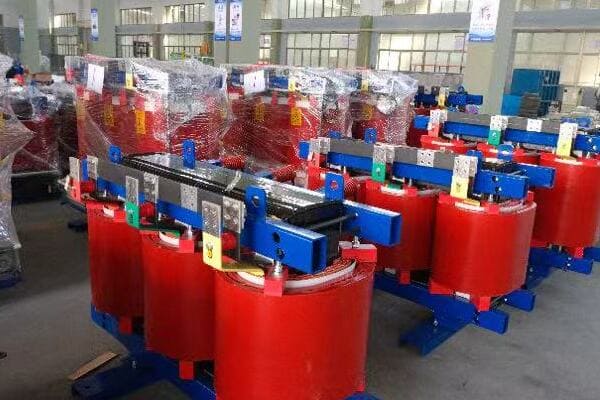
Key Factors in Transformer Selection
Let’s break down the main considerations:
- Voltage Requirements
- Power Capacity
- Environmental Factors
- Efficiency and Performance
- Special Features and Compliance
Voltage Requirements
Matching transformer to your system:
- Determine exact input voltage available
- Specify required output voltage(s)
- Consider voltage regulation needs
I recently worked on a project where the client initially requested a 33 kV to 11 kV transformer. After a thorough analysis of their future expansion plans, we opted for a unit with multiple secondary voltage taps, providing flexibility for potential voltage changes in the coming years.
Power Capacity
Ensuring adequate power supply:
- Calculate total connected load
- Factor in potential future expansion
- Consider peak load vs. continuous operation
During a recent industrial park development, we carefully assessed both current and projected power needs for various tenants. By choosing transformers with 20% extra capacity, we provided room for future growth without significant oversizing.
Environmental Factors
Adapting to installation conditions:
- Temperature range at the installation site
- Humidity and potential for condensation
- Presence of corrosive elements or pollutants
Here’s a quick guide for environmental considerations:
| Environment | Recommended Type | Key Feature |
|---|---|---|
| Indoor, Clean | Dry-Type | Fire safety |
| Outdoor, General | Oil-Filled, Pad-Mounted | Weather resistance |
| Coastal/Chemical | Cast Resin | Corrosion resistance |
| High Altitude | Special Design | Adjusted insulation |
Efficiency and Performance
Optimizing operational costs:
- Check efficiency ratings, especially for continuous operation
- Consider no-load losses for intermittent use applications
- Evaluate temperature rise and cooling methods
Special Features and Compliance
Meeting specific project requirements:
- Regulatory compliance (e.g., IEC, IEEE standards)
- Special features (e.g., on-load tap changers, monitoring systems)
- Noise level requirements for urban installations
Key points for choosing the right medium-voltage transformer:
- Accurately determine voltage requirements for both input and output
- Calculate power needs carefully, including future expansion
- Consider the environmental conditions at the installation site
- Evaluate efficiency and performance metrics for long-term operation
- Ensure compliance with relevant standards and any special feature needs
In my experience, the process of selecting the right transformer often involves balancing multiple factors. I recall a project for a new data center where we needed to power both IT equipment and cooling systems. The challenge was to find transformers that could handle the high continuous load efficiently while also providing the clean power necessary for sensitive computing equipment. We ended up choosing high-efficiency, low-noise dry-type transformers with advanced monitoring capabilities, meeting both the technical requirements and the facility’s stringent environmental standards.
For example, in a recent renewable energy project, we faced the challenge of integrating a large solar farm with the local grid. The selection process involved finding transformers that could handle the variable output from the solar inverters, meet strict grid connection standards, and operate efficiently in a harsh desert environment. This required careful consideration of voltage regulation capabilities, efficiency across different load levels, and robust environmental protection.
Remember, choosing the right medium-voltage transformer is crucial for the safety, efficiency, and reliability of your electrical system. Take the time to thoroughly assess your needs and consult with experts if necessary. The right choice will not only meet your current requirements but also provide flexibility for future needs and contribute to the overall success of your project.
Conclusion
Medium-voltage transformers are essential components in modern power distribution systems, bridging the gap between high-voltage transmission and low-voltage end-use. They come in various types, each suited to different applications and environments. Understanding their voltage ranges, working principles, and selection criteria is crucial for engineers and project managers. Proper selection and application of medium-voltage transformers ensure efficient, reliable, and safe power distribution across industrial, commercial, and utility sectors.
Remember, at chbeb-ele, we’re not just sharing information – we’re empowering you to be part of the solution in creating a secure, clean, and efficient energy future. Let’s continue this journey together.
Free CHBEB Transformer Catalog Download
Get the full range of CHBEB transformers in one catalog.
Includes oil-immersed, dry-type, pad-mounted, and custom solutions.
Quick Message
Request A free quote
We'd like to work with you
- +86 15558785111
- [email protected]
- +86 15558785111
What We Do
CHINA BEI ER BIAN (CHBEB) GROUP, with 218 million in registered capital, originated from Beijing Beierbian Transformer Group. Headquartered in Beijing for R&D, it operates major production bases in Nanjing and Yueqing, producing high-quality products.
Latest Product
address
BeiJing
No 3,RongJing East Road,BeiJing Economic Technological Development Area,BeiJing,China
JiangSu
No 7️Xiangfeng Road,Jiangning,NanJing,JiangSu,China
WenZhou
No.211, Wei 16 Road, Industrial Zone, Yueqing, Wenzhou, Zhejiang, China.
XiangYang Industrial Zone ,YueQing,WenZhou,ZheJiang,China
contact us
- [email protected]
- +86 13057780111
- +86 13057780111
- +86 15558785111
Copyright © Bei Er Bian Group

